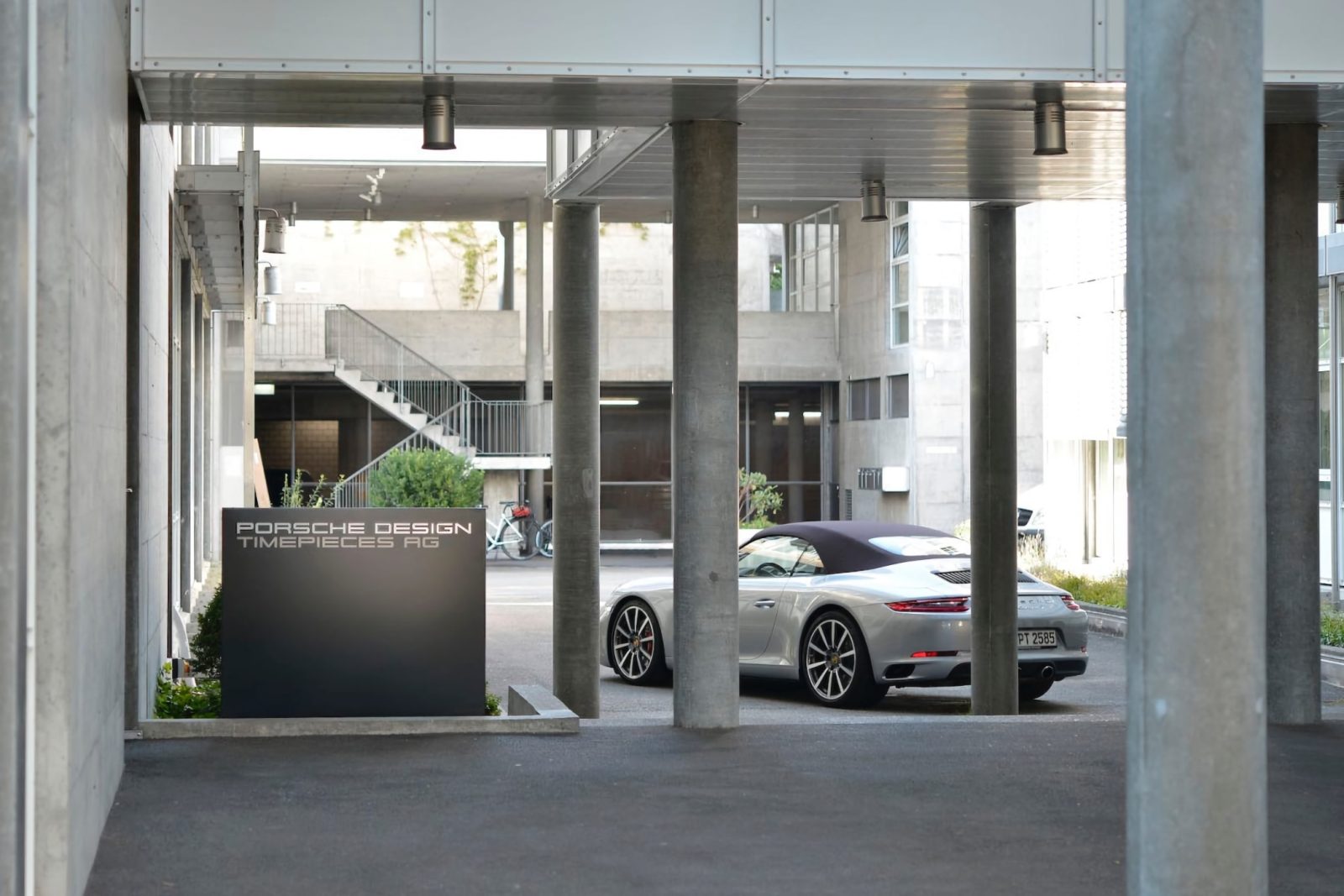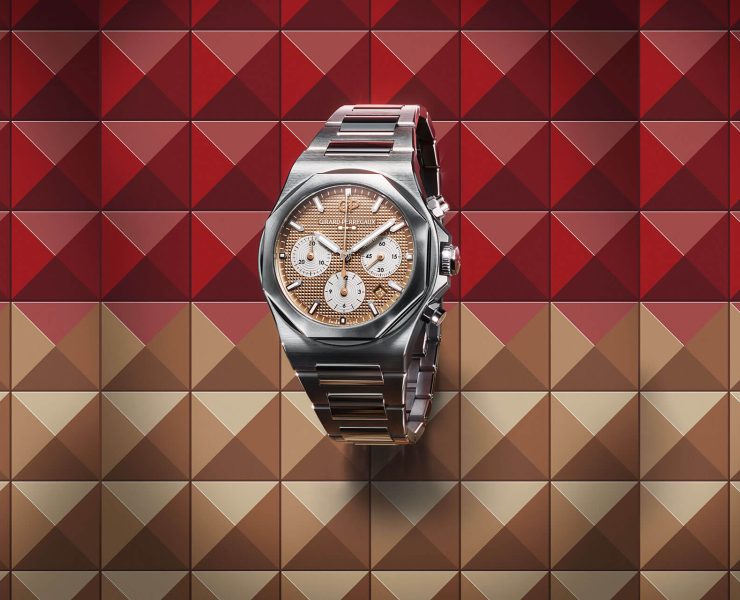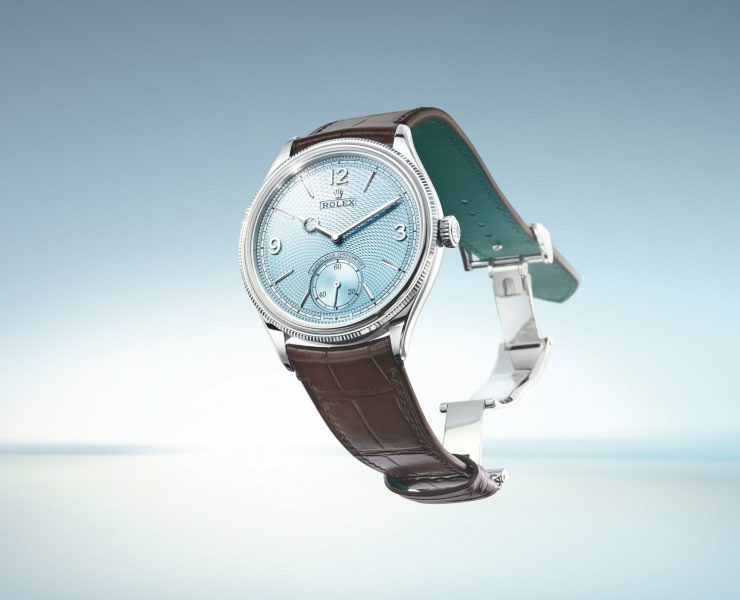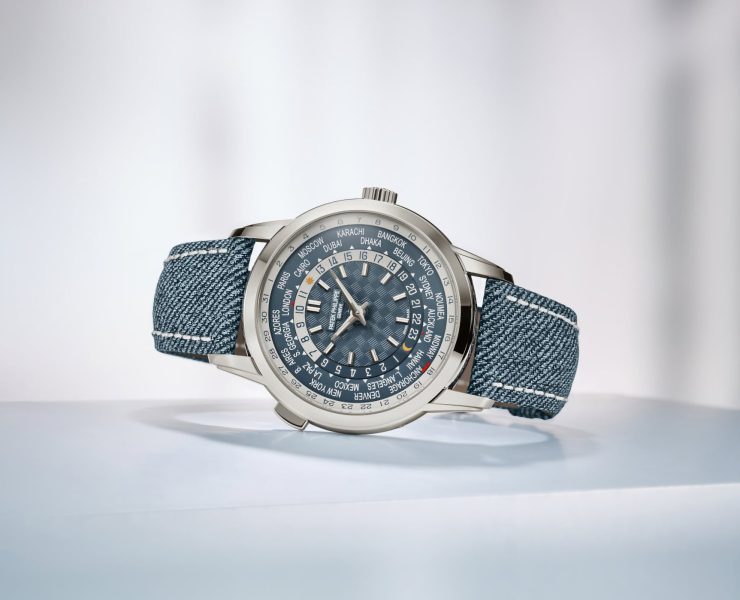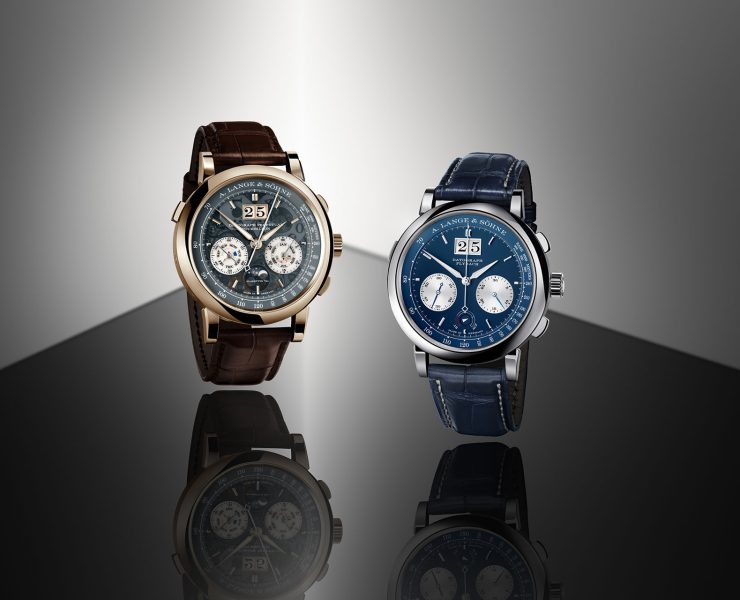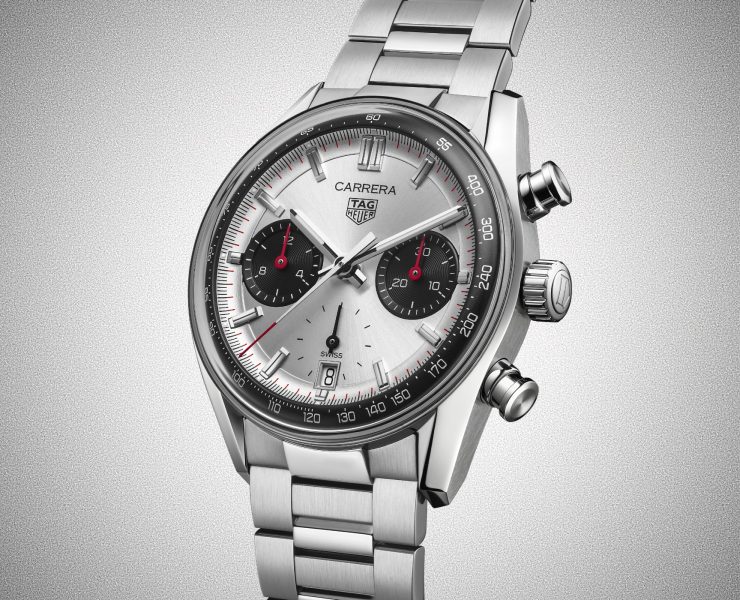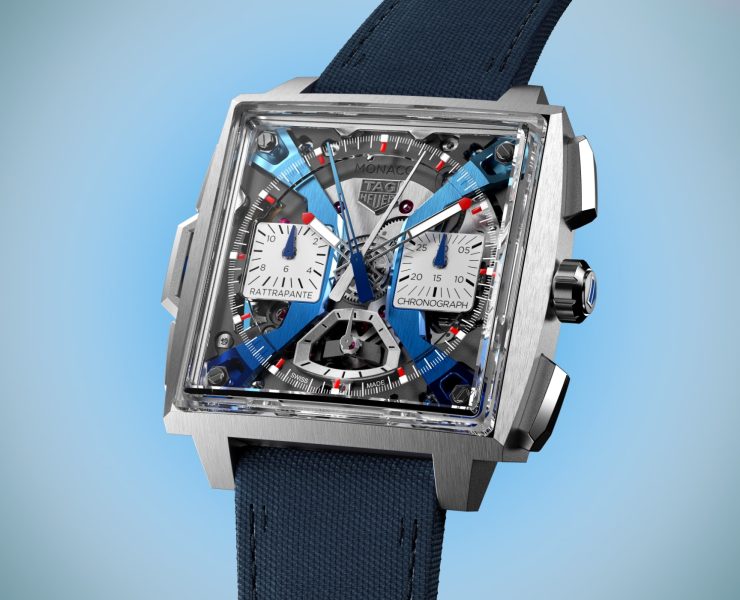Despite iconic watch models in their 51-year history, many collectors and connoisseurs of fine mechanics do not necessarily associate Porsche Design with the term ‘watch manufacturer’. And yet Porsche Design’s Swiss subsidiary, Porsche Design Timepieces AG, is currently developing something that could turn the Swiss watch world upside down and revolutionise it. An exclusive visit to Porsche’s factory in Solothurn raises one particular question: Do we need to rethink the term ‘watch manufacturer’ in the future?
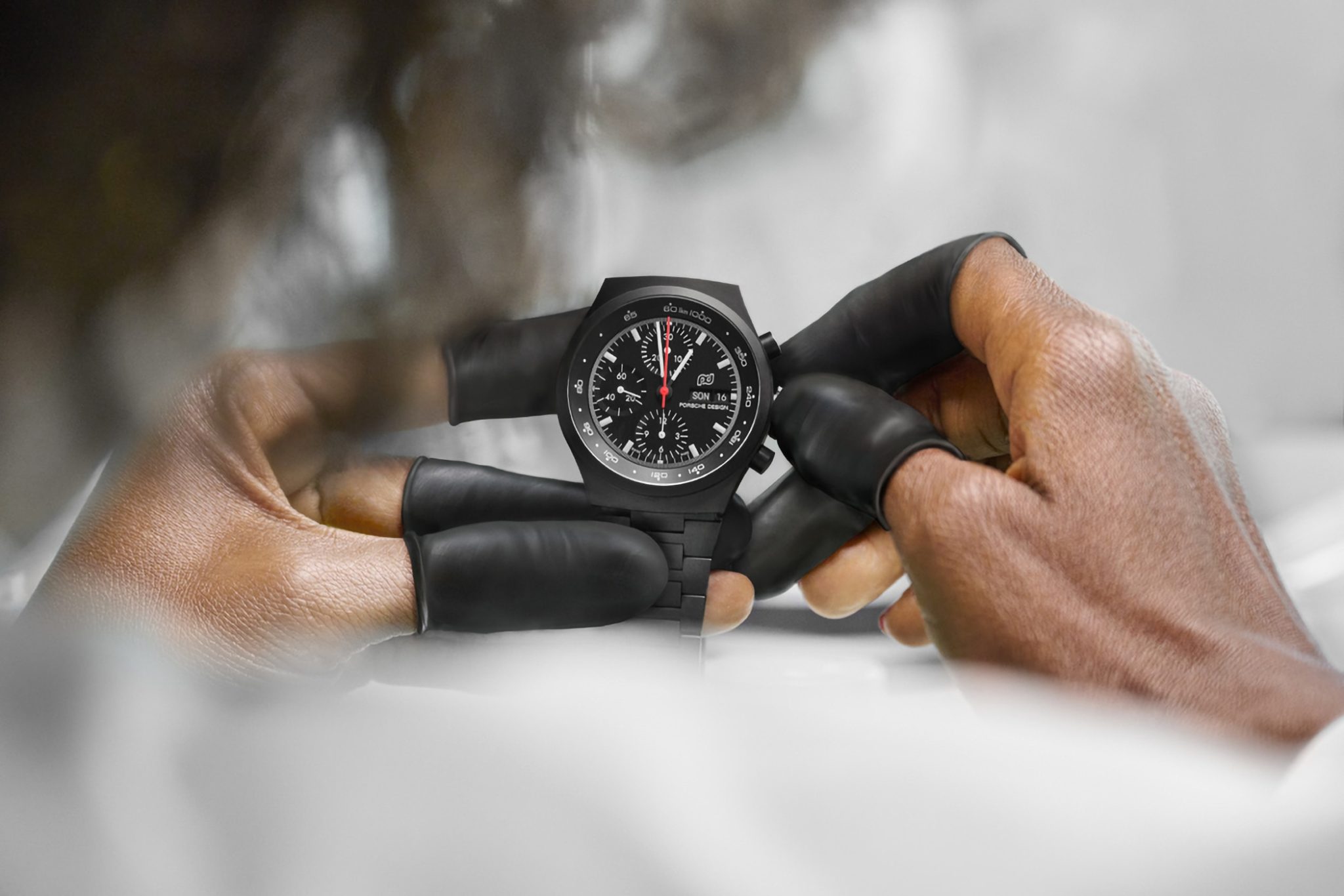
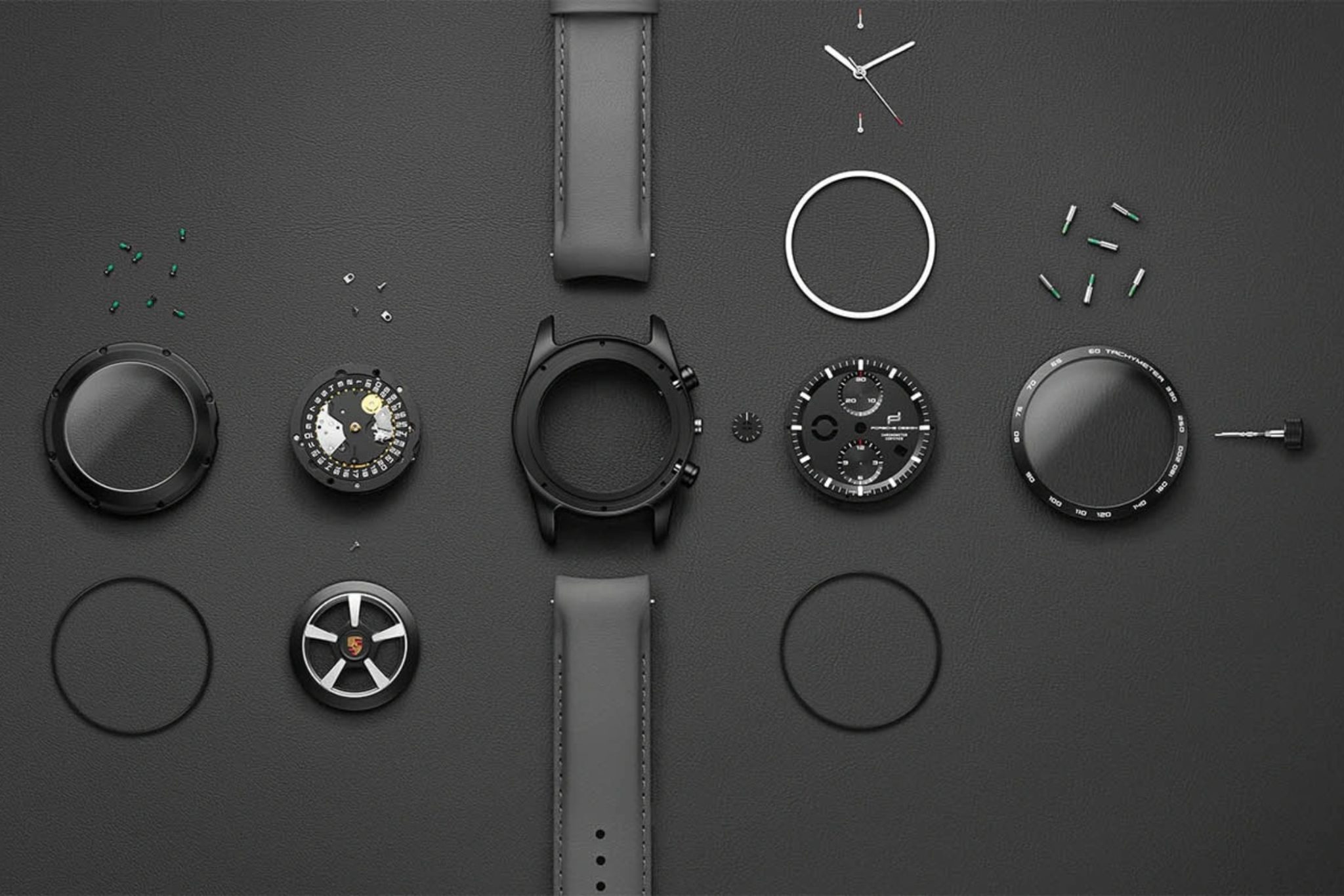
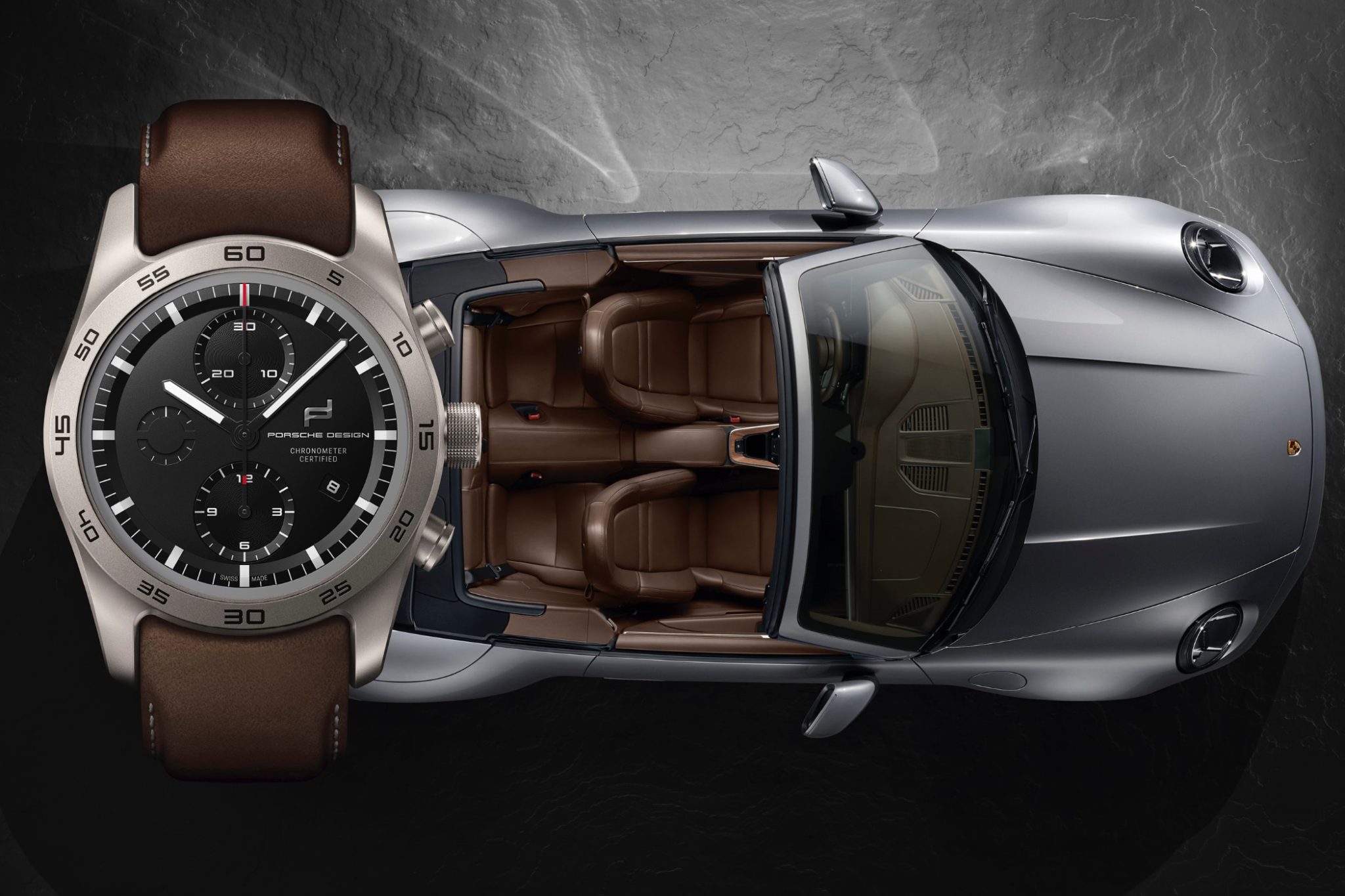
What Was it Like For Ferry Porsche in 1950?
How must company founder Ferdinand Porsche have felt when he walked through his Werk 1 in Stuttgart to inspect the work on the 356, the first series Porsche, in 1950? Back then, they were just a few brick halls. Today, they seem tiny, embedded in the vast corporate area in Stuttgart-Zuffenhausen with over 600,000 square meters.

Porsche’s Headquarters in Zuffenhausen ©Porsche AG
This question comes to mind when you enter Porsche Design Timepieces AG. The company has rented a few premises in Solothurn in this simple concrete building. It is not a representative company museum, let alone a reception building with which so many well-known Swiss watch manufacturers like to advertise themselves. What will this place look like in 75 years? The exact time since the automobile and parent company were established (Porsche was founded in 1948, and the first 356 were built in Gmund)? Anyone reading this text might assume that space in these premises quickly becomes scarce. For now, however, the company presents itself modestly, and the CEO of Porsche Timepieces AG, Rolf Bergmann, still personally welcomes guests.
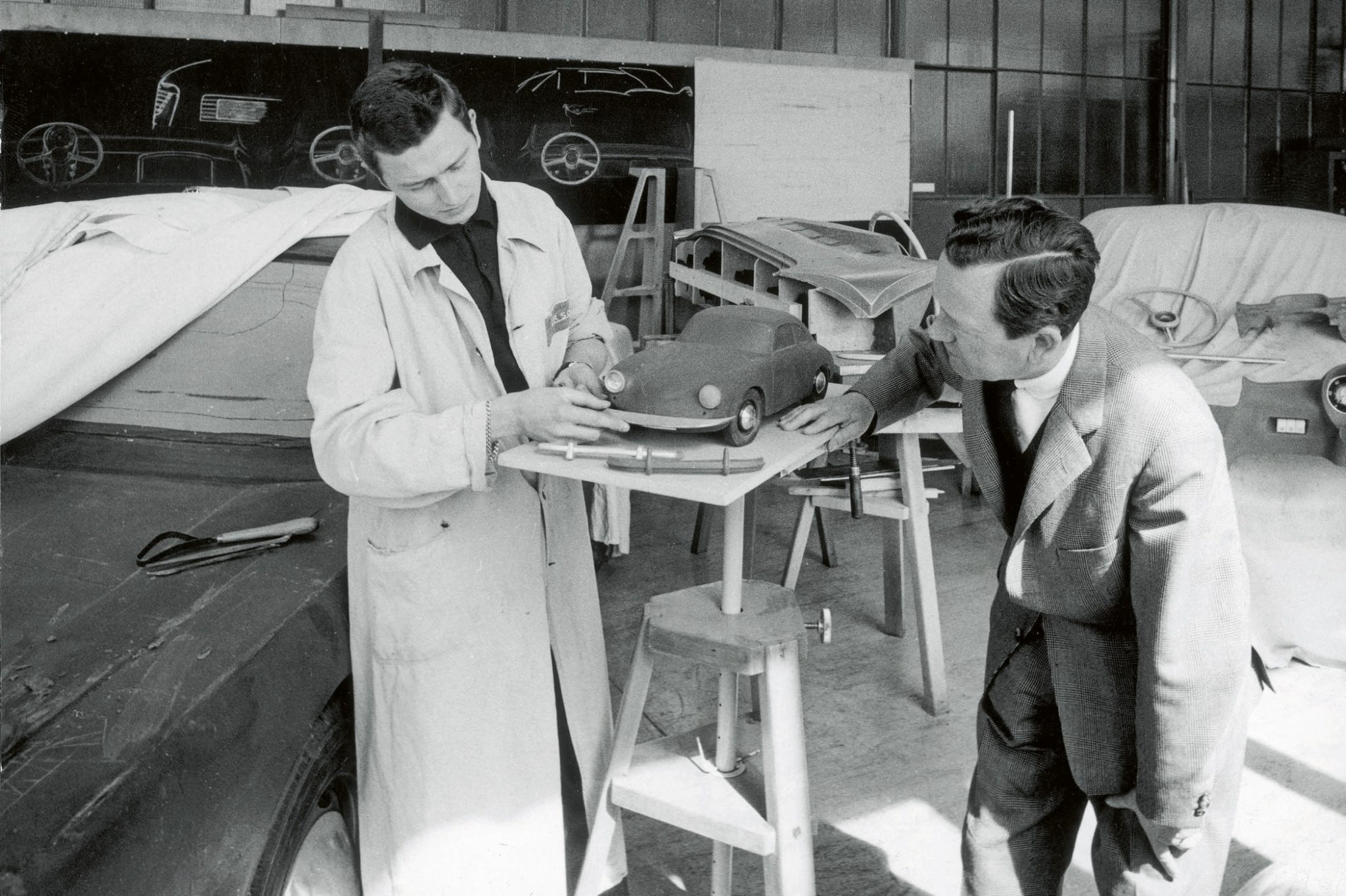
For the first time, he is granting journalists access to his ‘little holy grail’, as he and his colleague Gerhard Novak, General Manager Timepieces, affectionately call the premises. Today is not just about exclusive access but also about exceptional insights into a topic that is revolutionary for Porsche and the entire Swiss watch industry. Therefore, Bergmann and his marketing colleagues have come up with a unique claim that is on point: ‘A sports car on your wrist.’
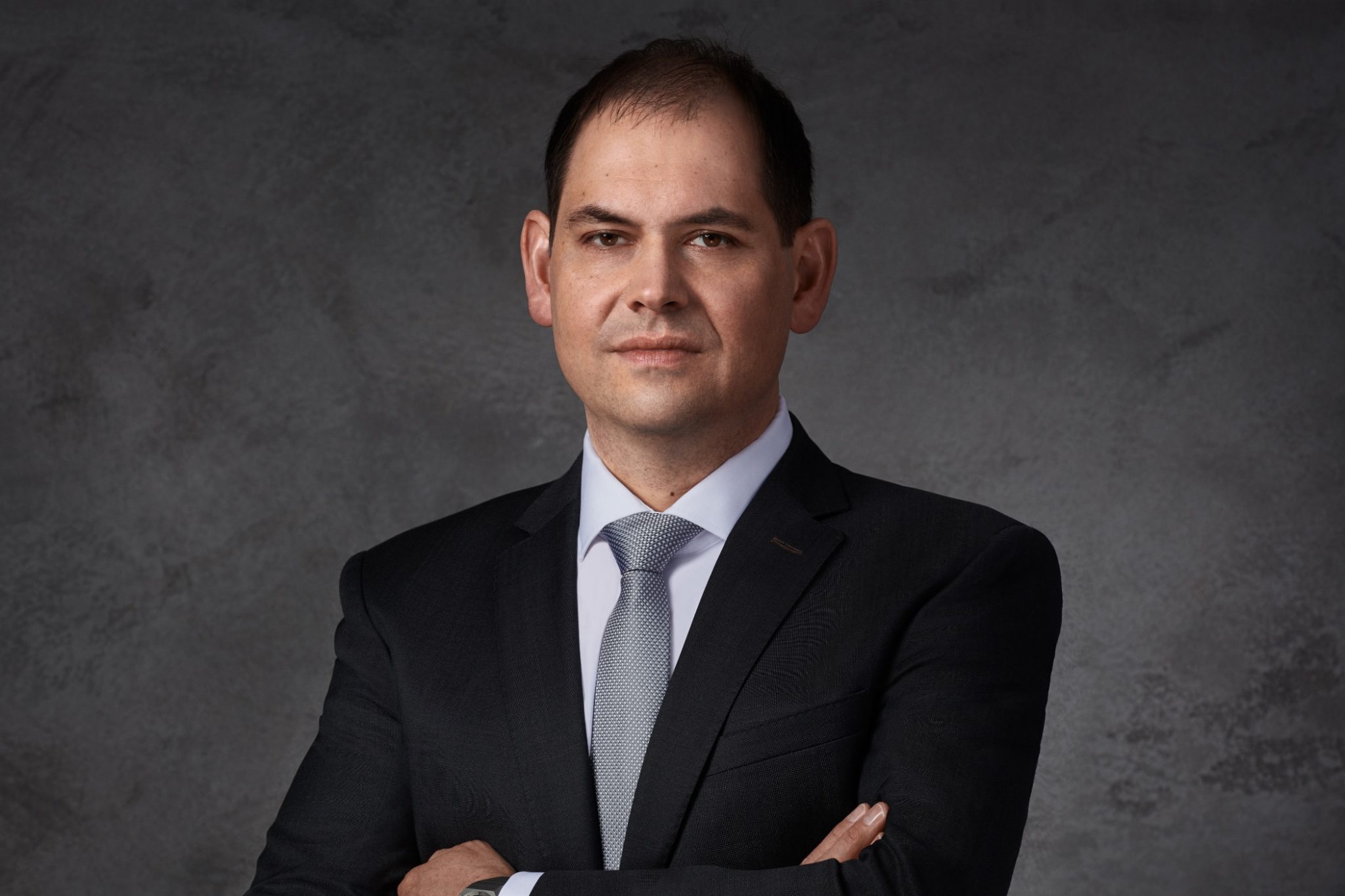
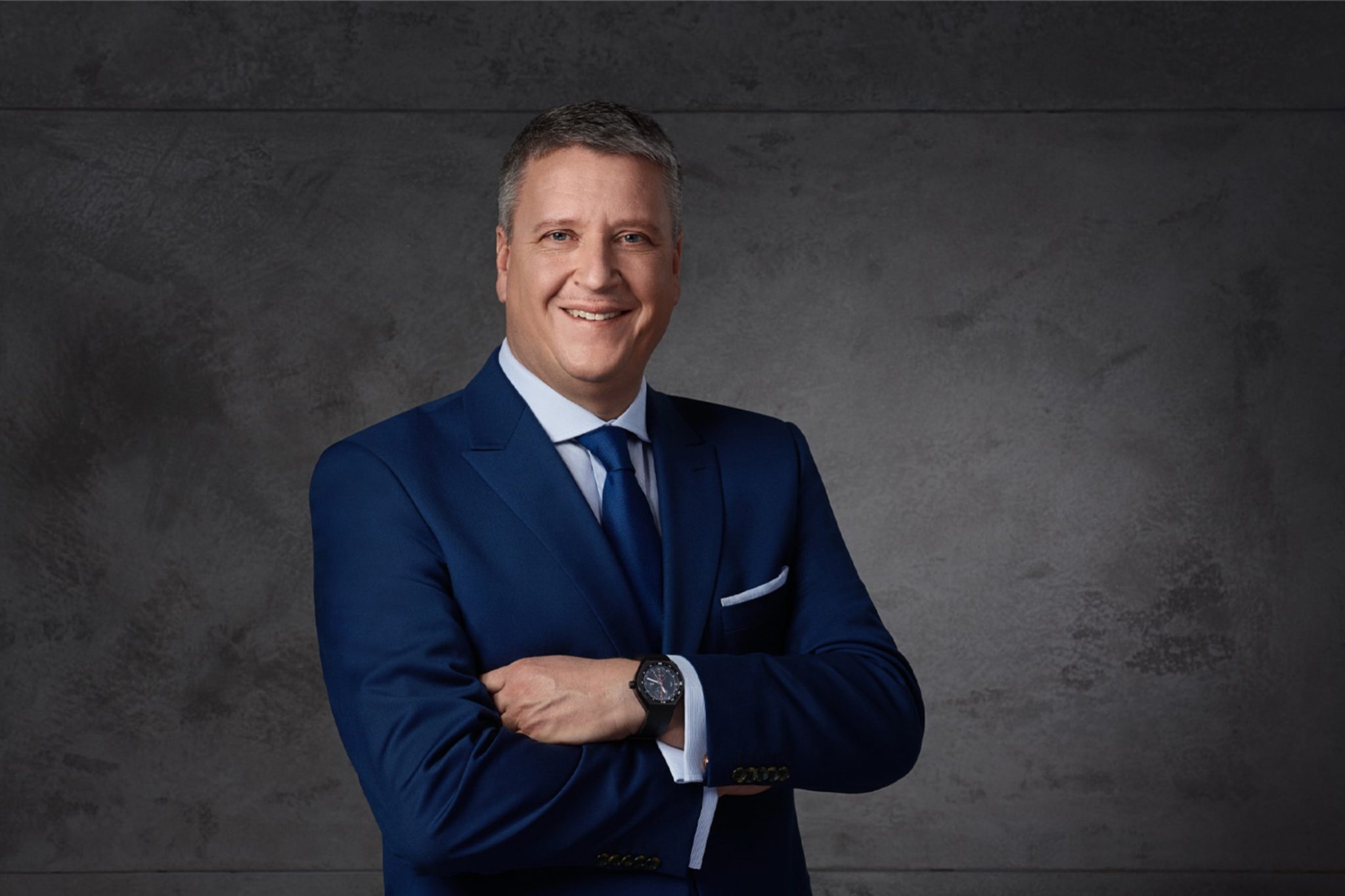
Rolf Bergmann, CEO Porsche Timepieces AG (l.) and Gerhard Novak, General Manager Timepieces (r.)
Conveying The Porsche Feeling
To not let the Porsche feeling end at the garage, it only makes sense to expand the Porsche universe in times when customers travel by plane or train. As Bergmann explains, ‘Porsche Design is clearly a brand that has perfectly been encapsulating this for more than half a century.’ With luggage, sportswear, sunglasses, accessories, and, most notably, wristwatches.
Not The Matter is Unique, But The Method
However, as we will learn today, it is not so much what Porsche Design does that is unique, but how they do it. After all, just as Porsche builds sports cars, albeit extraordinary ones, Porsche Design and its Swiss subsidiary ultimately used to make mechanical wristwatches like many others. Bergmann and Novak are rightly proud of the one thing that has been unique so far. Bergmann notes, ‘There is no other car manufacturer in the world that owns and independently operates its own watch manufactory’. His colleague Novak adds, ‘Nor can others boast an outstanding designer as a founding father who has created two icons in completely different areas – cars and watches.’
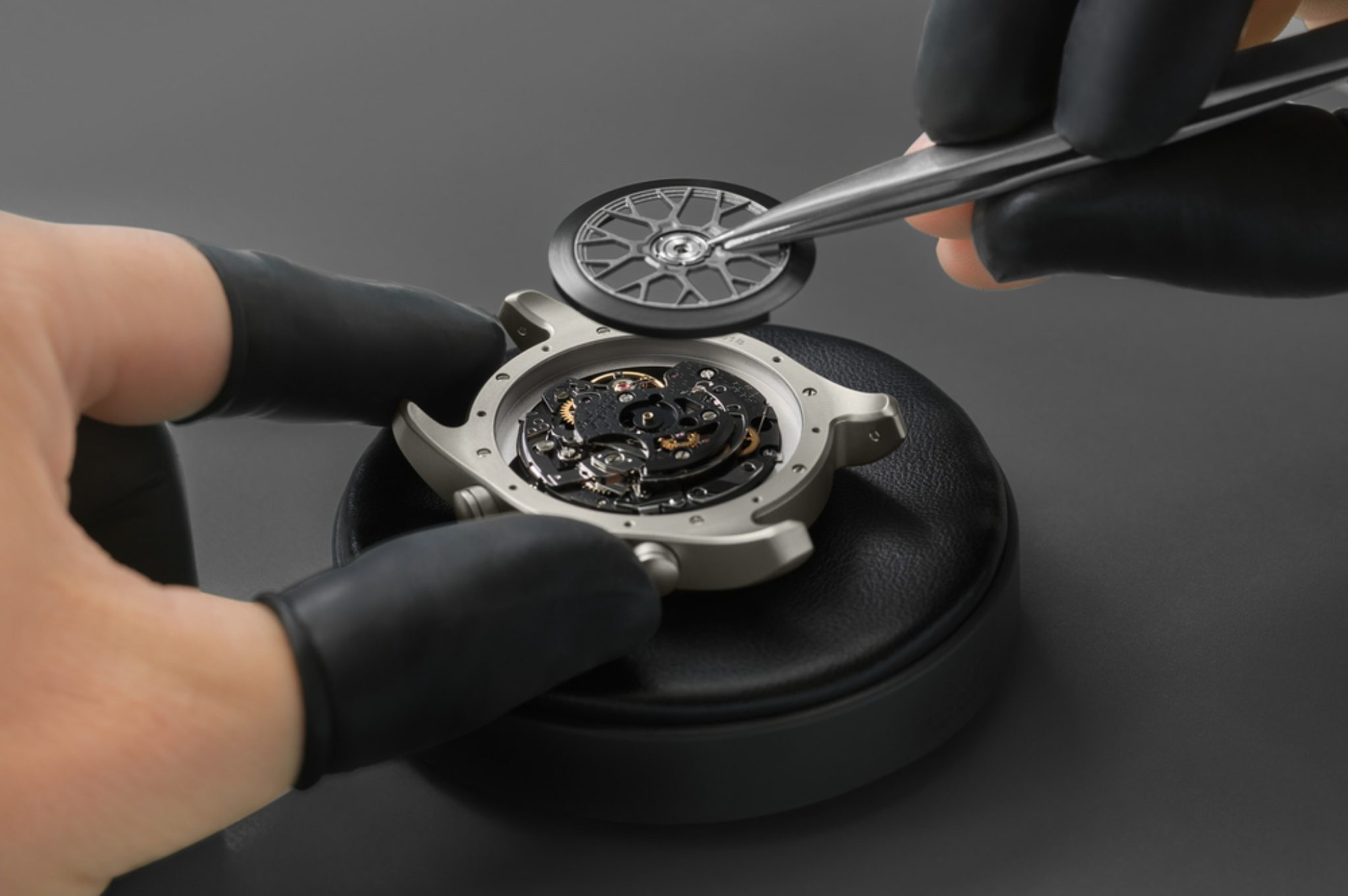
How Wristwatches at Porsche Came to be
Before we look at what the sports car on the wrist is all about and Swisswatches Magazine explores the question of whether Porsche Design might hold the key to the ultimate collector’s item of tomorrow, there is the question of how wristwatches at Porsche came to be in the first place.
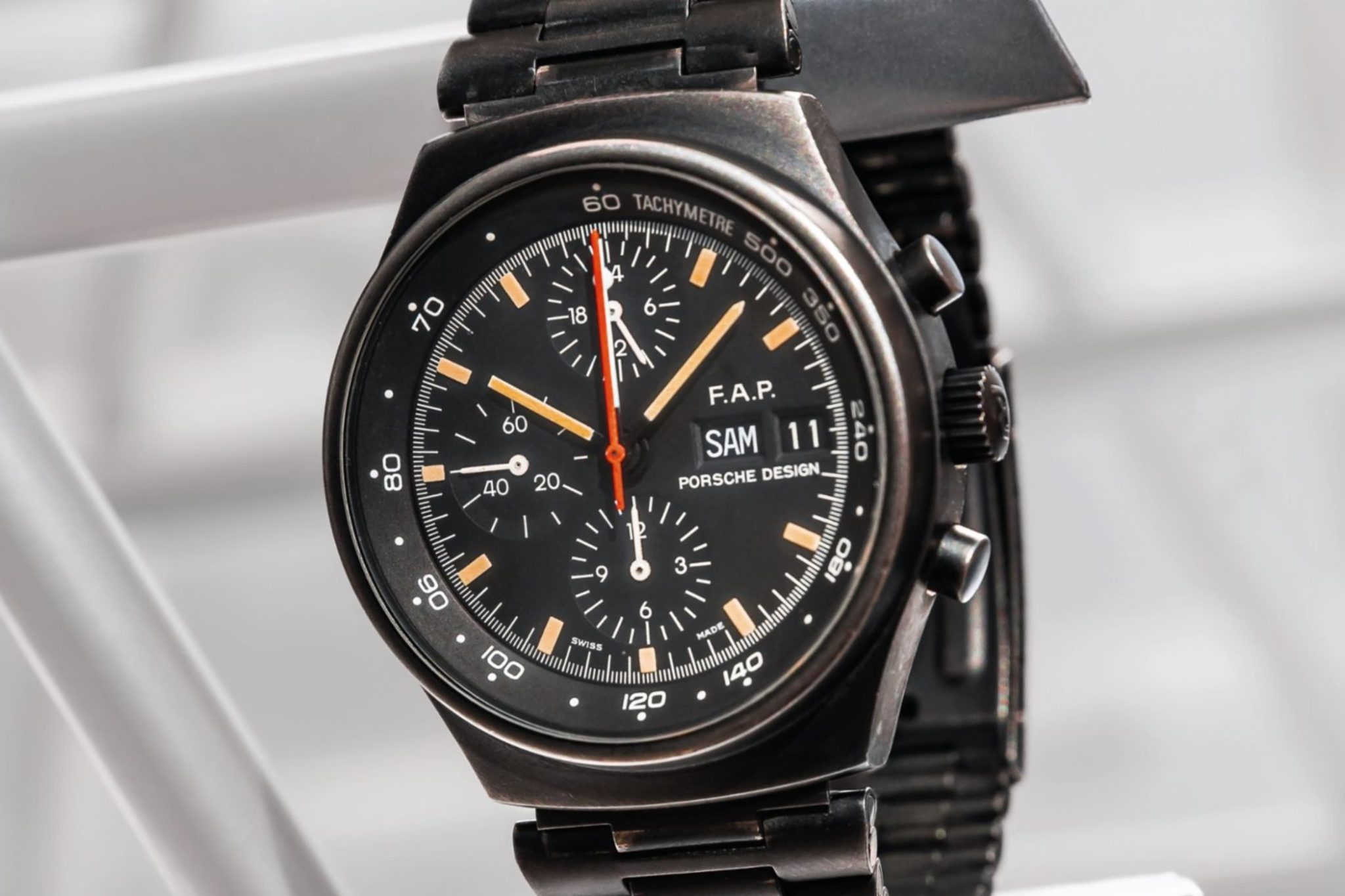
For Decades, Porsche Meant One Thing: Racing For The Streets
For decades, Porsche meant motor races or at least street racing. Watches? Let the others do it. His grandfather Ferdinand, an enthusiastic and equally gifted engineer, gave the world the Beetle while designing Auto-Union racing cars. Then there was his father, Ferry, who made his motorsport debut at Le Mans in 1951, just three years after presenting his first sports car under his Bohemian name. With the 356 SL and just 45 hp, French Porsche importer Auguste Veuillet and his compatriot Edmond Mouche immediately won in their class. Five years later, in 1956, the small family business entered the Targa Florio, the most challenging endurance race of its time, on 10 June. Umberto Maglioli’s Porsche 550 Spyder effortlessly outpaced the competition from Maserati and Ferrari in the mountains of Sicily. The lead over the runner-up: 15 minutes. But no trace of watches (yet).
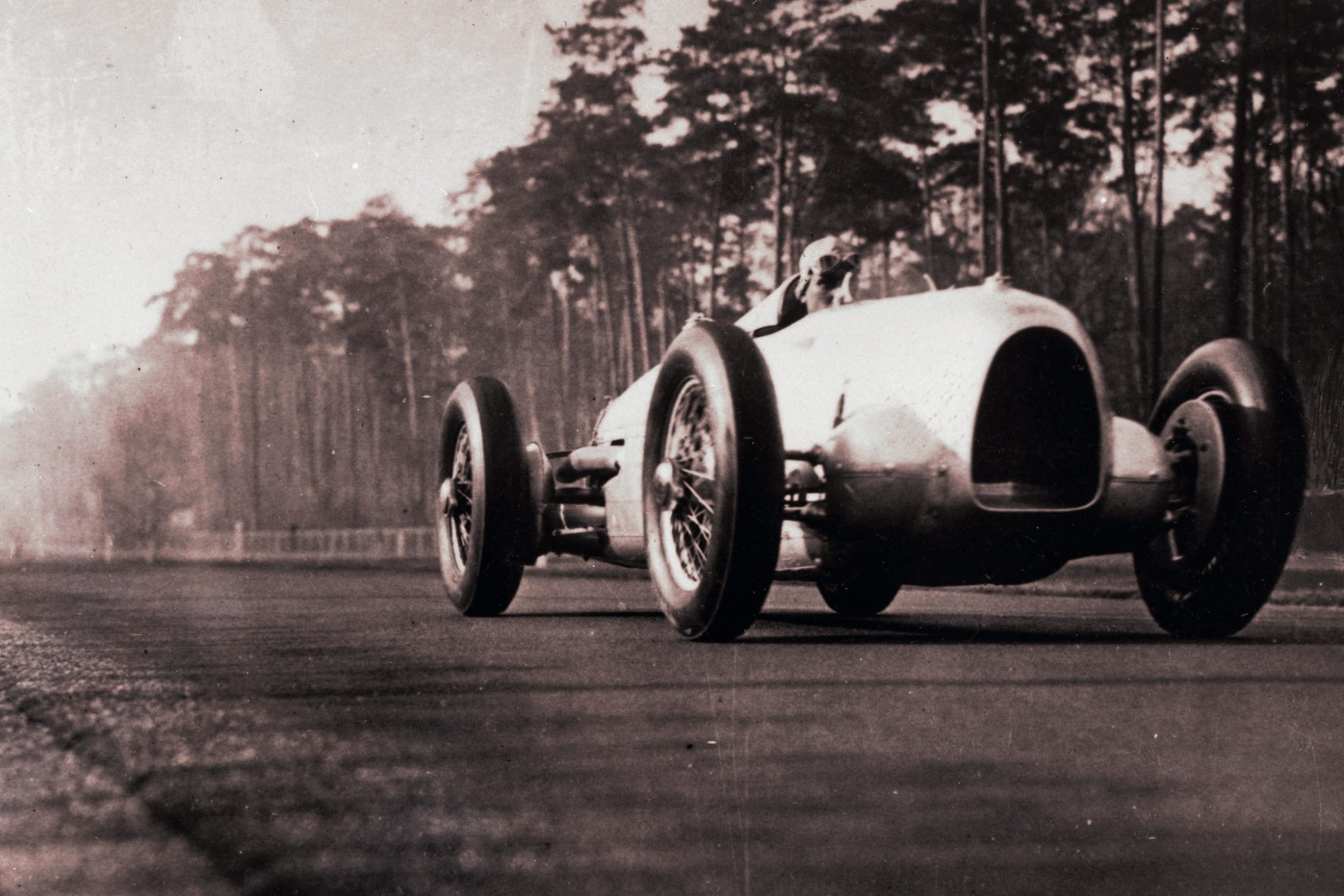
The Creative Son Creates The Iconic Porsche 911
And then there was the creative son, Ferdinand Alexander, who studied at the Ulm School of Design. He created a car design with his team that was meant for eternity in 1963 – the Porsche 911, which was called 901 when presented at the IAA of the same year. What many, including the journalist Reinhard Seiffert from the magazine Auto Motor und Sport, did not foresee at the time: It is the most successful car ever built regarding the racing versions of the vehicle. In the magazine’s eighth issue, Seiffert wrote succinctly, ‘Without question, the new sports car, which will be produced in Zuffenhausen from the end of August, is one of the most interesting cars in the world. It is exclusively intended as a touring vehicle, not for Gran Turismo racing.’ A motorsport journalist has never been more wrong.
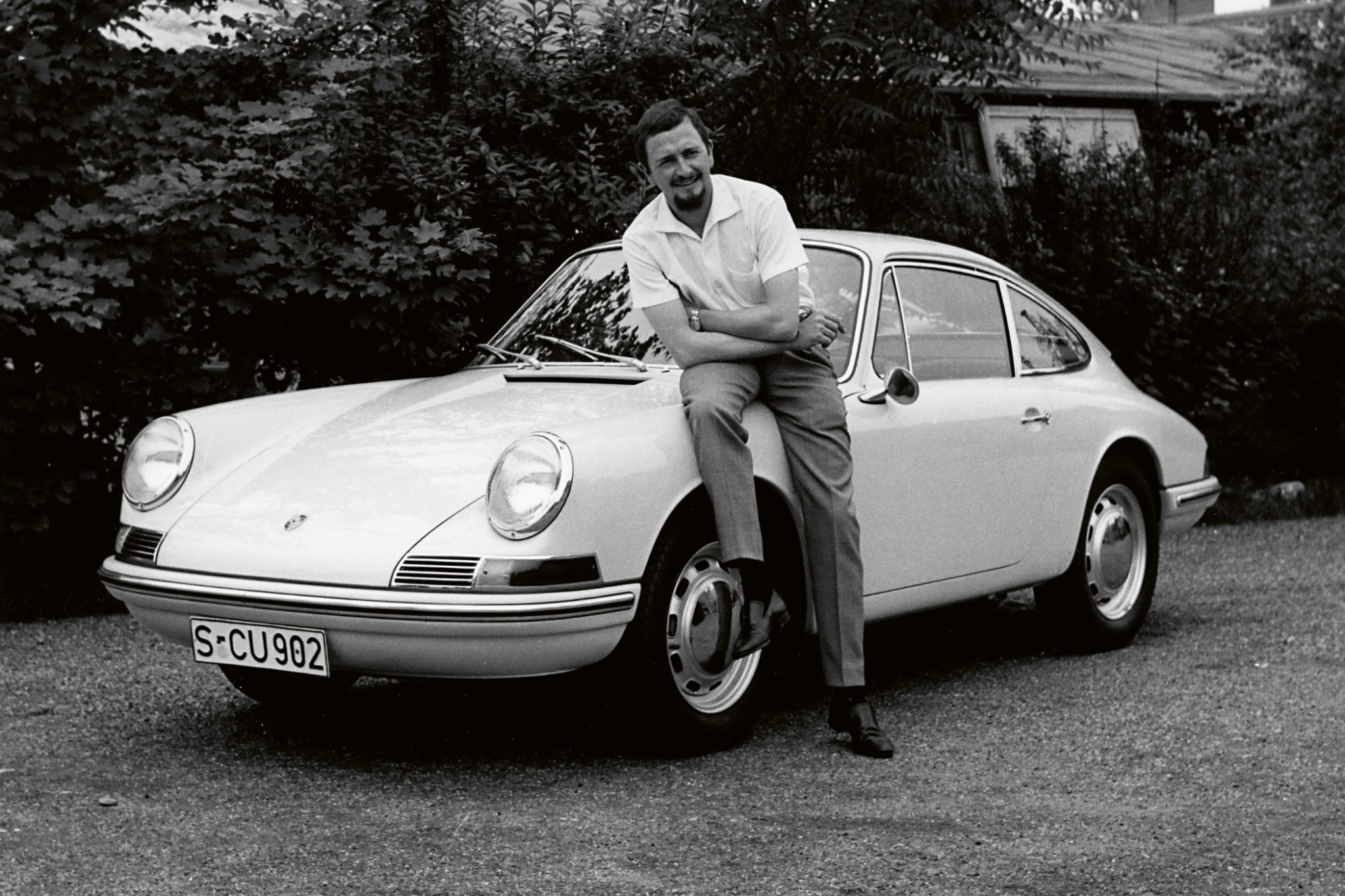
Ferdinand Alexander Porsche mit Porsche 901
The True Story Behind Porsche Chronos
We do not want to bore collectors with this topic because Porsche fans are familiar with this part of the story. ‘F. A.’, as he was called outside the family throughout his life and as everyone here in Solothurn still calls him to this day, first immortalised himself as the designer of the Porsche 911, and then independently: When the members of the Porsche family left the operational business of their own company in 1972 (the conversion of the company’s legal form to a public limited company required this), Ferdinand Alexander Porsche founded his design studio, with which he returned to his childhood home of Austria two years later.
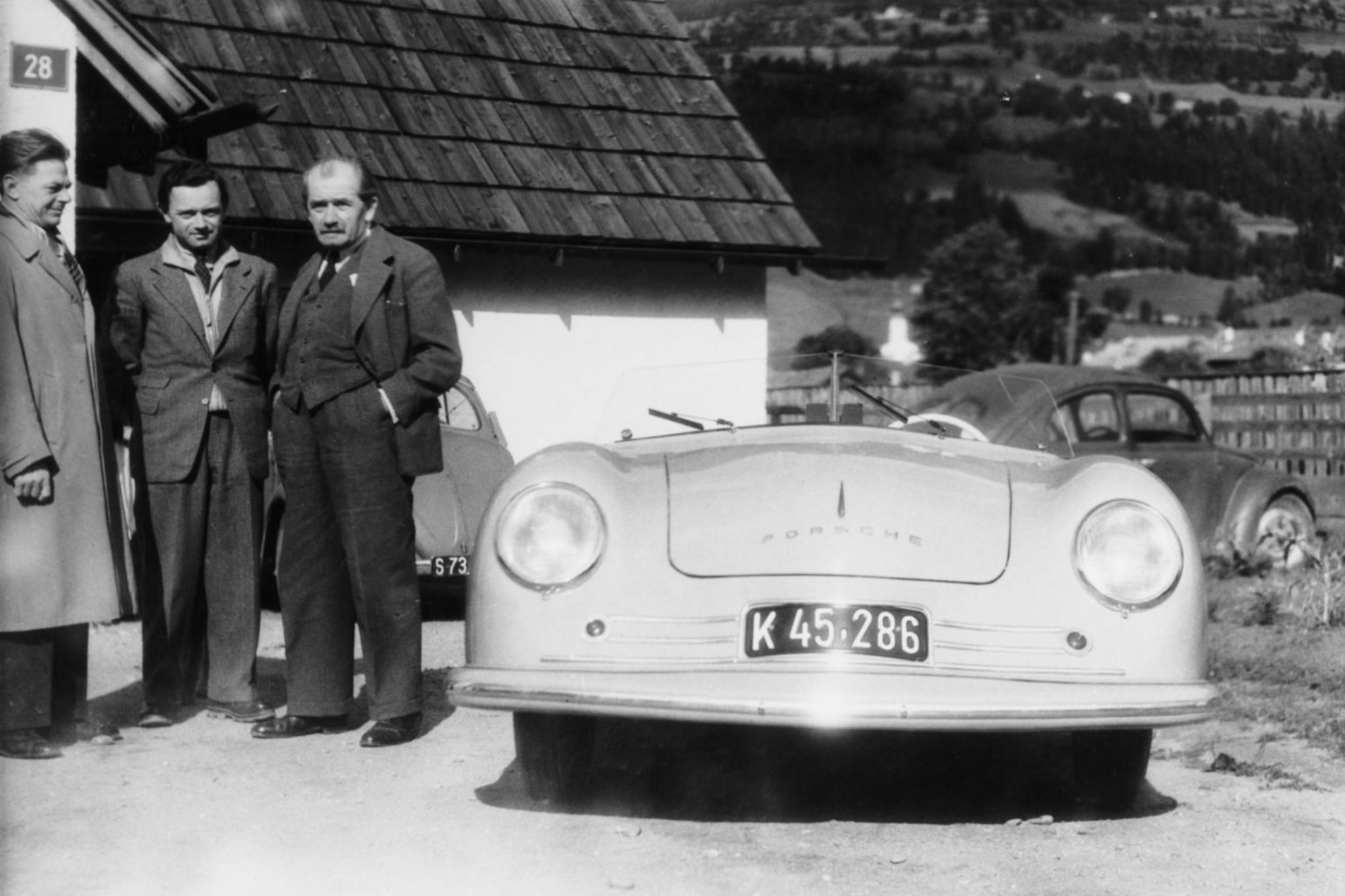
His first project was an exceptional watch for Porsche AG’s meritorious employees: the black Chrono I. It is the world’s first black wristwatch and a modern icon worn by Formula 1 stars. It conquered the silver screen on Tom Cruise’s wrist in the first Top Gun film. Throughout five decades, around 50,000 models were produced by various manufacturers: First by Orfina, later by Eterna and today by Porsche Design – as a limited edition. However, the next chapter – and this is the declared goal of Bergmann and his colleagues – could be even more successful: this time with a watch to match the vehicle. Yet, Porsche AG builds over 300,000 cars – every year.
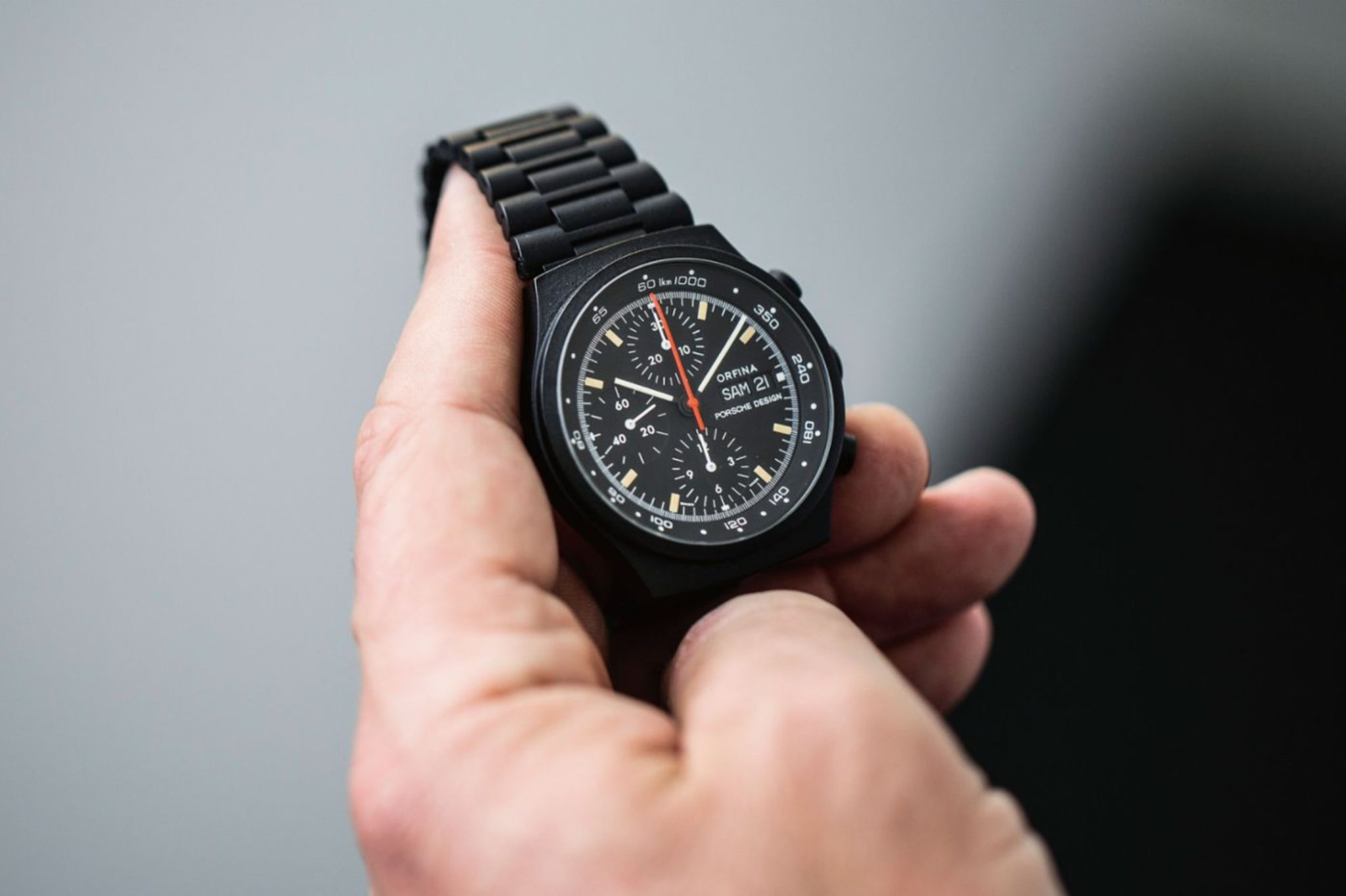
Watches Have Always Been a Subject Matter For The Porsche Family
The history of the Chronograph 1 is quickly told, but it is vital to understand the company’s current philosophy. Novak says, ‘By his means of transferring the design principles from the sports car to the wrist, F.A. Porsche set a clear signal that preserves to this day and is consistently implemented by Porsche Design.’ He specifies what he wants to say, ‘The great thing is that we don’t have to reinvent anything, because for F. A. Porsche it was a given to think progressively.’
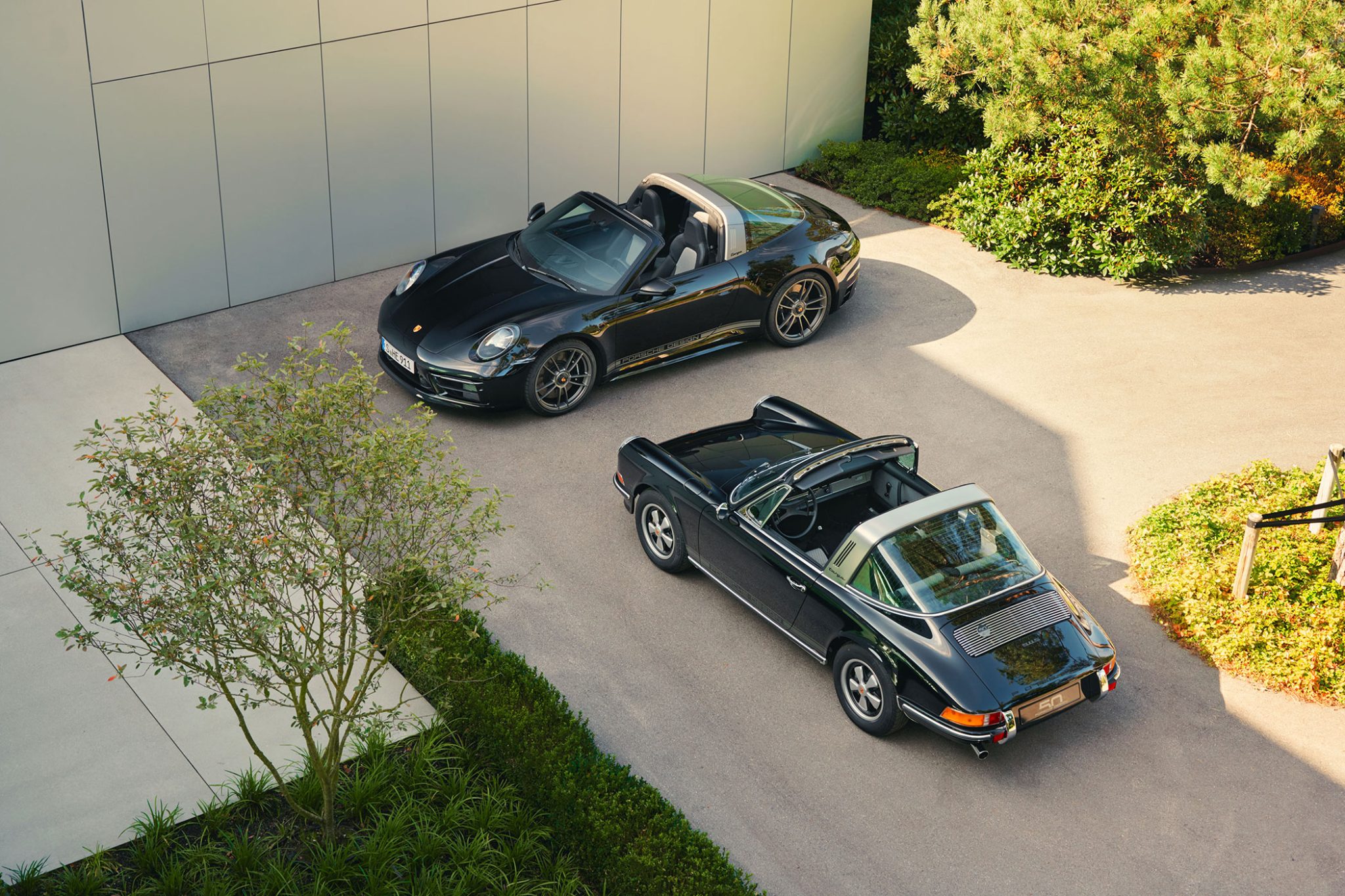
The Chrono 1 Was Not Intended For Sale
Initially, the wristwatch was not meant to be a commercial project but a timepiece for Porsche AG jubilarians. Thus, Mr. Porsche was requested to design a watch that initially only comprised 20 annual timepieces. Why it turned out to be a chronograph goes without saying for motorists. However, Novak explicates what even they might not know, ‘The Porsche family have always liked to surround themselves with good watches and knew their way around the segment very well.’ He discovered an interesting detail in the Porsche archive: ‘Probably since 1950, but certainly since the mid-1950s, all Porsche customers who reached the 100,000-kilometre mark with their car received a solid gold watch with Porsche lettering as a gift from Porsche.’
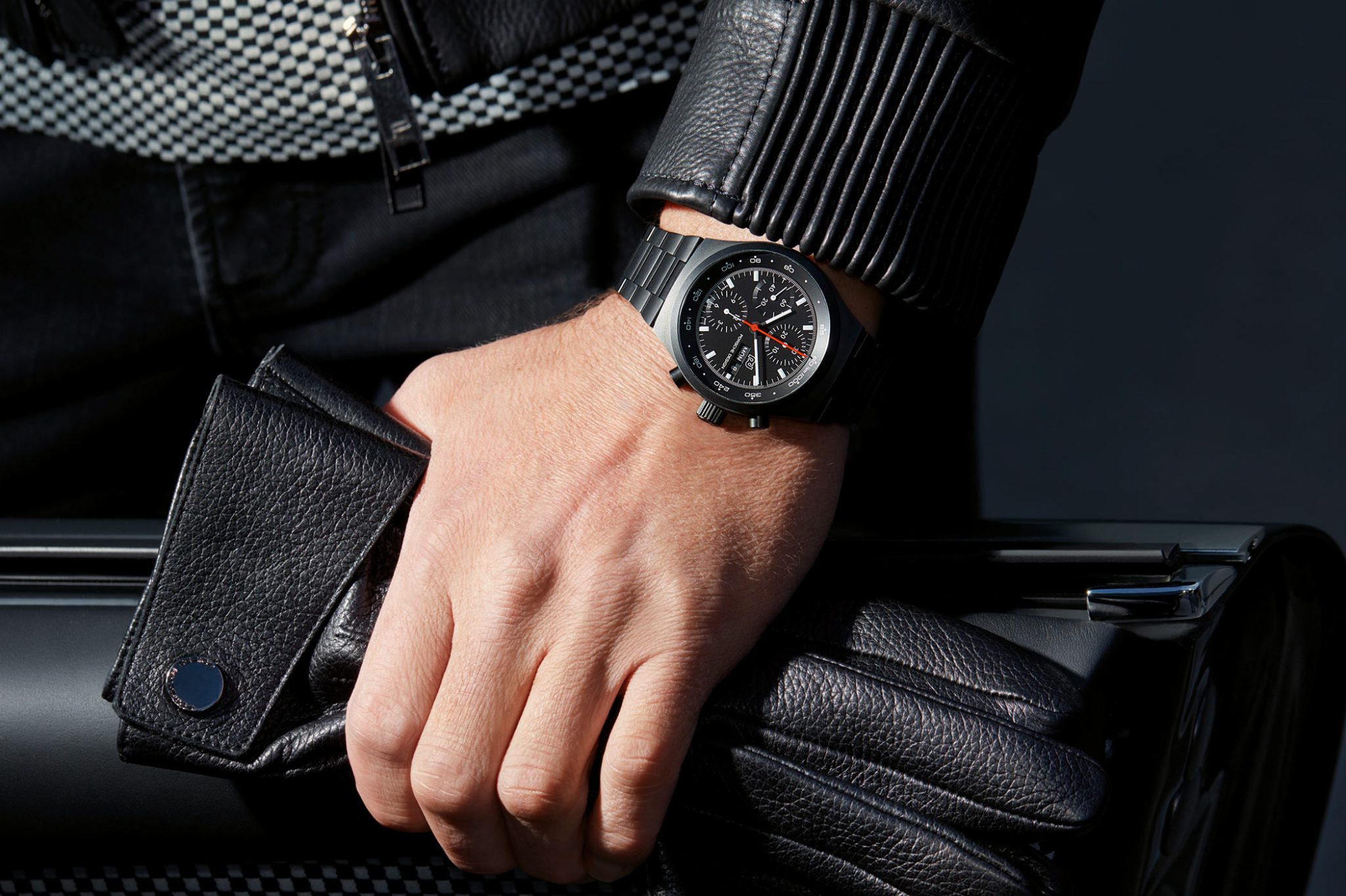
A Solid Gold Wristwatch For Porsche Drivers
Due to the vehicles’ high quality, more and more customers archived this mileage. Therefore, frequent drivers were awarded a gold pin since the end of the 1950s. Interestingly, the first Chrono 1 models began appearing on prominent personalities’ wrists as early as 1974. Reasonable but nevertheless remarkable: the model was prevalent in the Formula 1 paddock. Mario Andretti wore the Chronograph 1 the year he became Formula 1 World Champion in 1978, and there are also photos of Ferrari boss Gianni Agnelli and racing driver Niki Lauda, as well as Emerson Fittipaldi.
On Soldiers’ Wrists
Since the late 1970s, the Chronograph 1 enjoyed a second career off the racetrack. Due to its nearly glare-free readability and thus maximum functionality, the timepiece was also used by many armies: NATO, the German Armed Forces, the Swiss Army, but also the Emirates and, of course, the US Air Force, which used the head of a tiger in its logo. Whether air or naval forces, Novak adds, ‘These units have commissioned watches from Porsche Design to equip their units.’

The Movie Top Gun as Game Changer
When US director Jerry Bruckheimer began filming Top Gun in 1985, the aim was to provide the actors with authentic equipment. The Top Gun flying squadron was conveniently based in Miramar near Hollywood. Novak knows the story down to the last detail: ‘As the Tigers were wearing the Chrono 1, Bruckheimer went to the Porsche Design Store in Beverly Hills and asked for this model. They lent him the Chronograph 1 that actor Tom Cruise wore in the first part of Top Gun in 1986.’
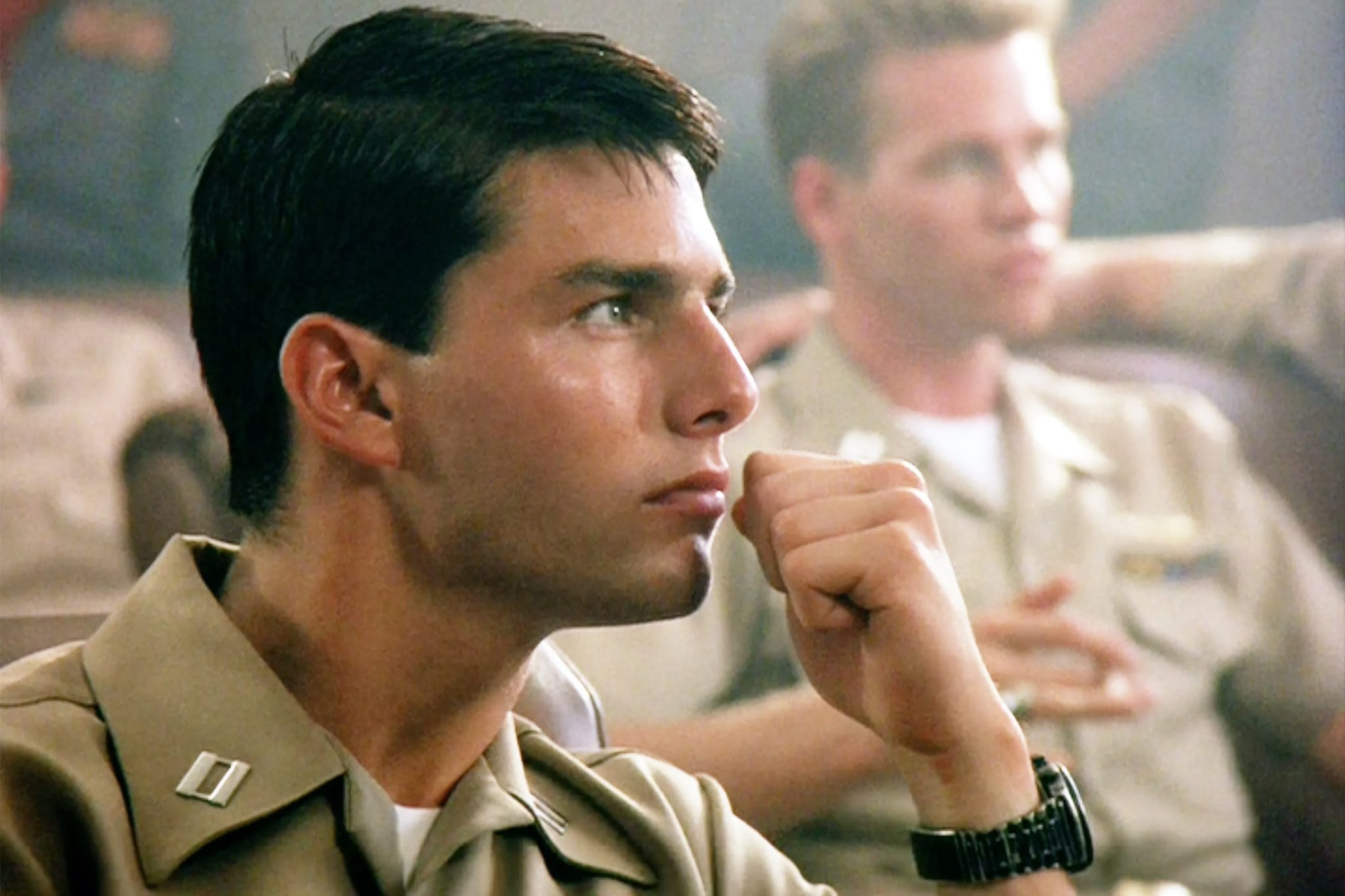
Sometimes, All You Need is Luck
Novak openly admits today, ‘Nobody at Porsche Design had ever thought of equipping Tom Cruise.’ Particularly charming: of course, Cruise also wore the Chrono 1 in TOP GUN: Maverick in 2022 – explicitly not as paid product placement. Incidentally, it was the same watch Cruise had worn in 1986, Novak explains, ‘because we deliberately took the watch back at the time to preserve it.’ In 2019, Bruckheimer approached Porsche Design again and asked for the watch. After filming, Tom Cruise probably wanted to buy the timepiece, but Porsche Design declined. Rightly so, they preferred to keep it as a family treasure for now.
In Need of a New Approach
Let us return to the connection between cars and wristwatches. With the founding of Porsche Design Timepieces AG in 2014, Porsche AG and its subsidiary Porsche Design in Ludwigsburg set the course for the future. Following its near bankruptcy in the early 1990s, Porsche AG had risen to become one of the most valuable automotive brands in the world – not only by diversifying its model range but, above all, with a unique production principle based on customer wishes: highly customisable and limited-edition sports cars because that is exactly what fans expect from Stuttgart-Zuffenhausen.
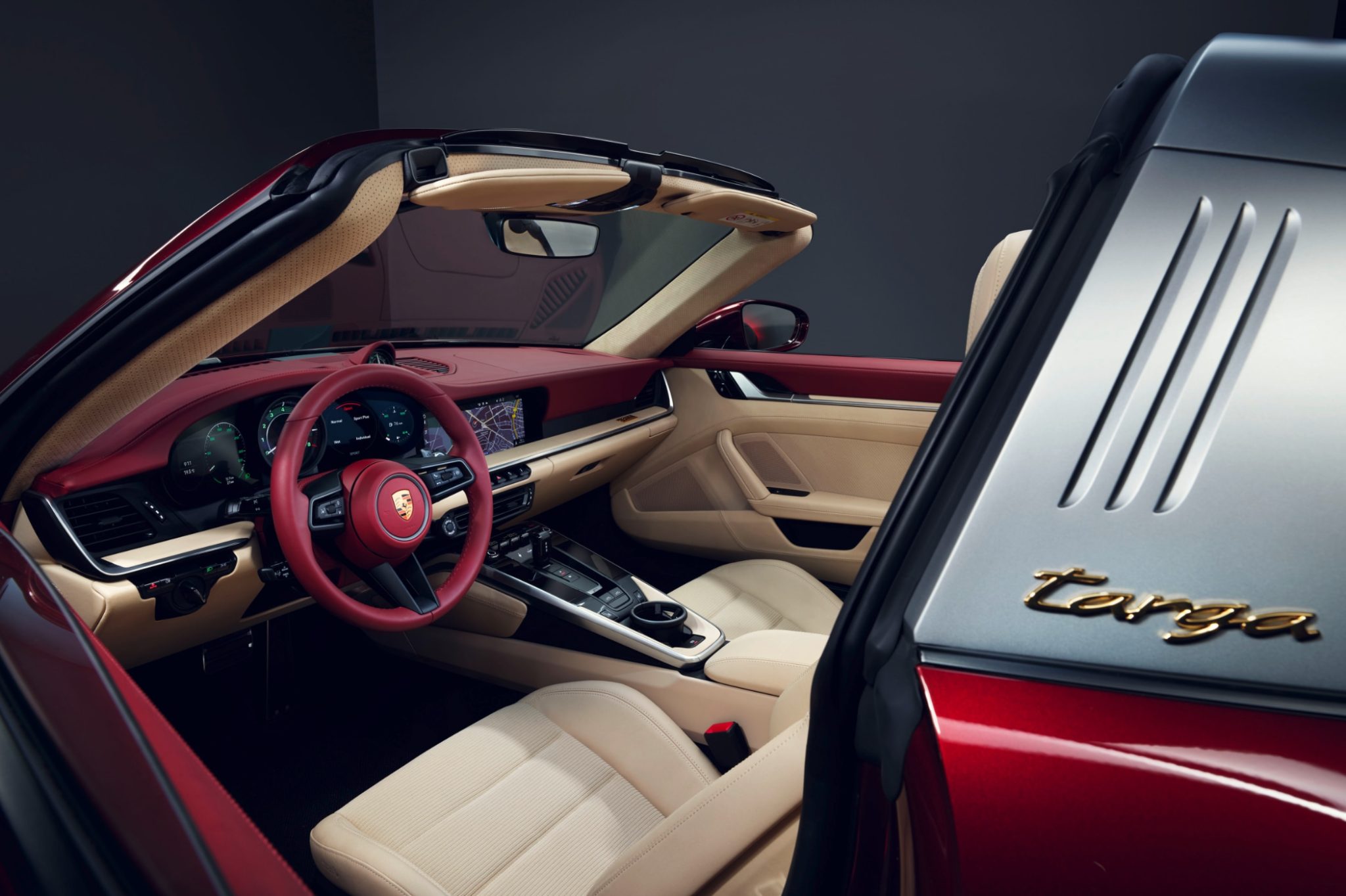
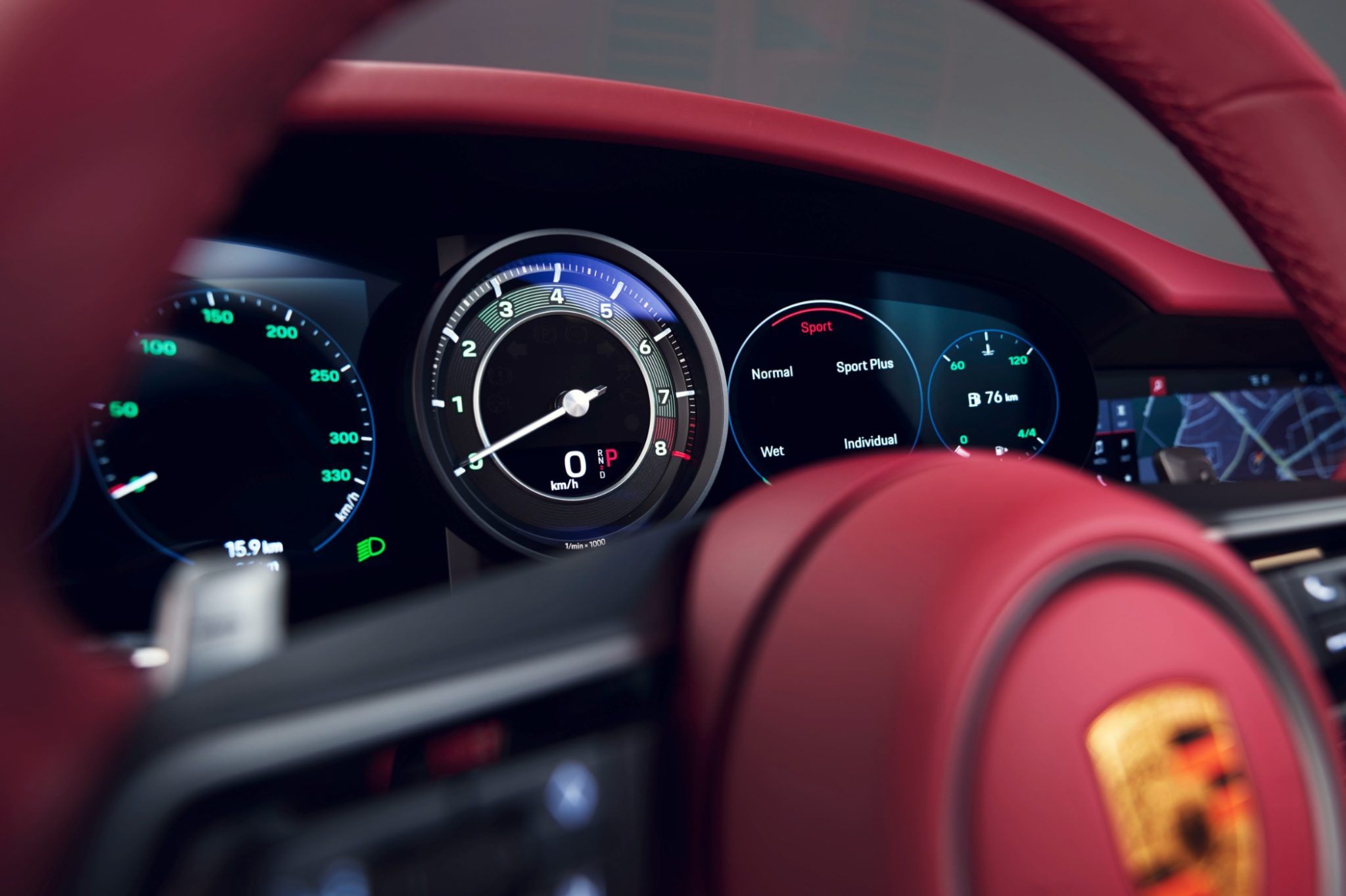
The Swabian inventors thought, ‘That’s all well and good’. But what if customers could customise their wristwatch in the same way as their personal sports car? A gimmick? The auction results of rare wristwatches in recent decades tell another story. Not only do they perform better than many shares, but valuable individual pieces are particularly sought after, as Paul Newman’s Daytonas impressively prove (read our article here).
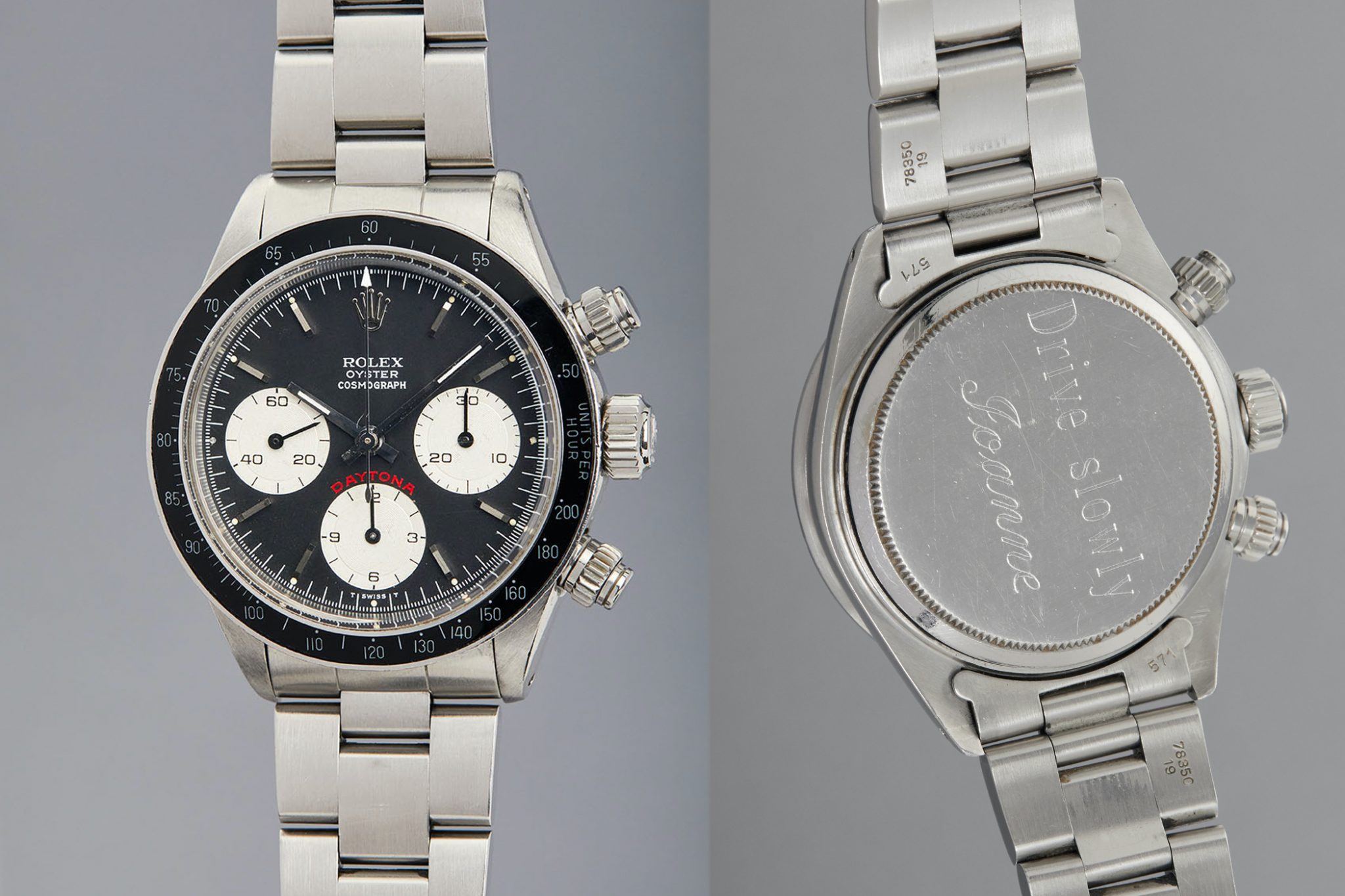
Porsche Design is Not Rolex
Porsche Design watches are neither Rolex nor Patek Philippe. Not yet. But men like Rolf Bergmann are paving the way for the holistic Porsche experience. At the time, he aimed to match timepieces to an individual’s car 100 per cent. Bergmann remarks, ‘Right from the start, we were aware that the effort involved would be extreme.’ For the Porsche 911 alone, there are 17 standard colours, five wheel types, and over 20 leather finishes in the vehicle configurator.
A Logistics Champ For 25 Years
However, Bergmann has been a logistics professional for 25 years and has already helped develop the Porsche 996 Turbo. One who knows what sequential production means: ‘Small quantities and great variety have boosted Porsche, and we are now transferring this to watches.’ And since Bergmann knows about the cars’ quality, he wondered if the same paint and leather used for the car could be applied to the watch. It worked, and thus, new possibilities for collectors opened up.
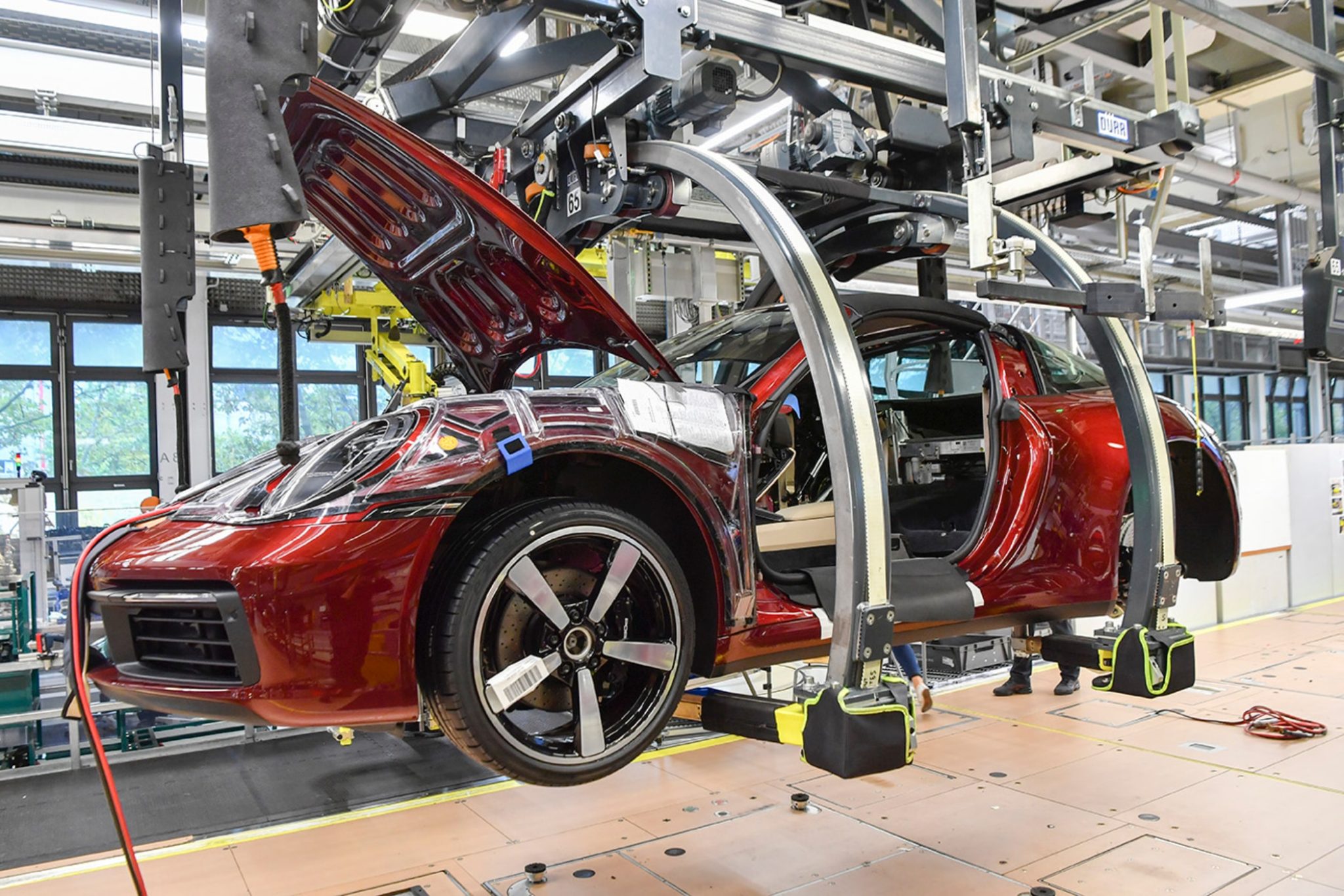
The Turbo S Exclusives Series Marks The Beginning
Bergmann recalls, ‘With the Turbo S Exclusive Series, we offered a limited-edition watch with the car for the first time in 2017 and it was only available when you purchased a car.’ It was such a success – almost half of all car buyers concurrently ordered the watch for 9,950 euros – that the wires between Ludwigsburg, Zuffenhausen and Solothurn were buzzing. Had they just discovered a new business model? They had. The engineers and designers immediately asked: what if every Porsche driver could order their personalised Porsche for their wrist directly from the Car Configurator in the future?
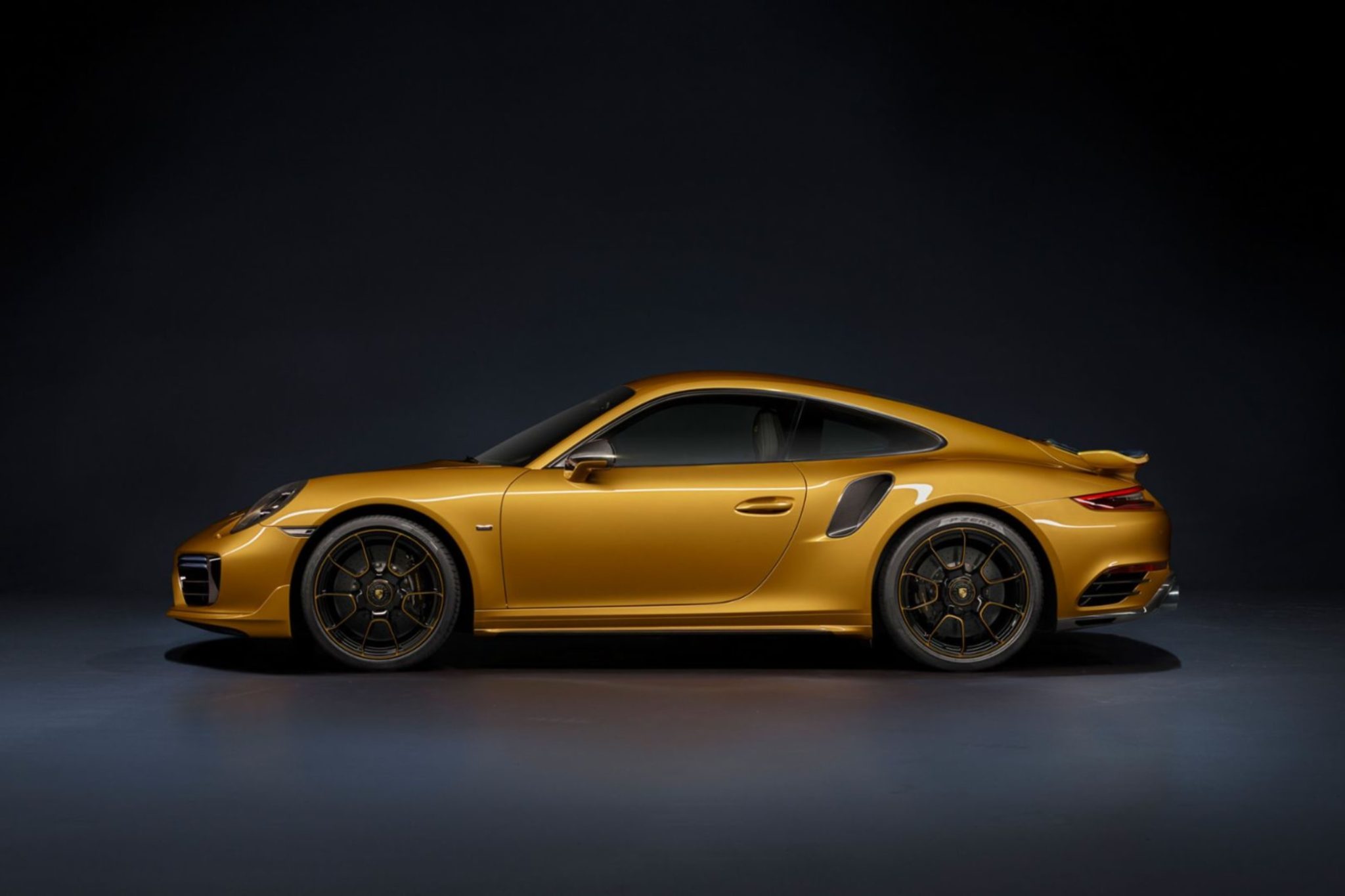
According to Bergmann, ‘We had been working under high pressure and went online with our watch configurator three years ago. Today, every customer who configures a Porsche 911 can then be offered a matching wristwatch that can be customised even further.’ However, he also knows that not every Porsche is automatically a coveted collector’s model.
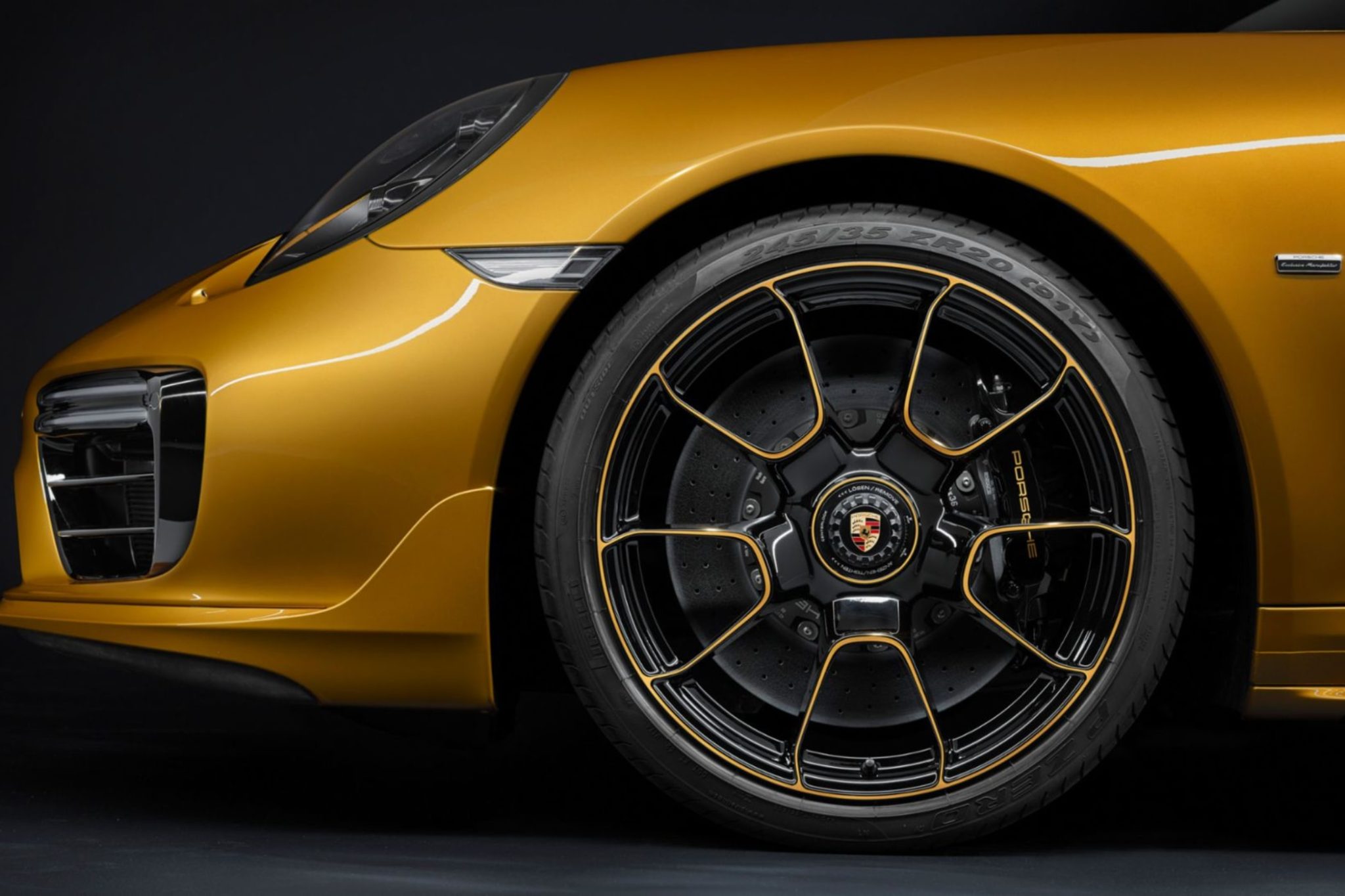
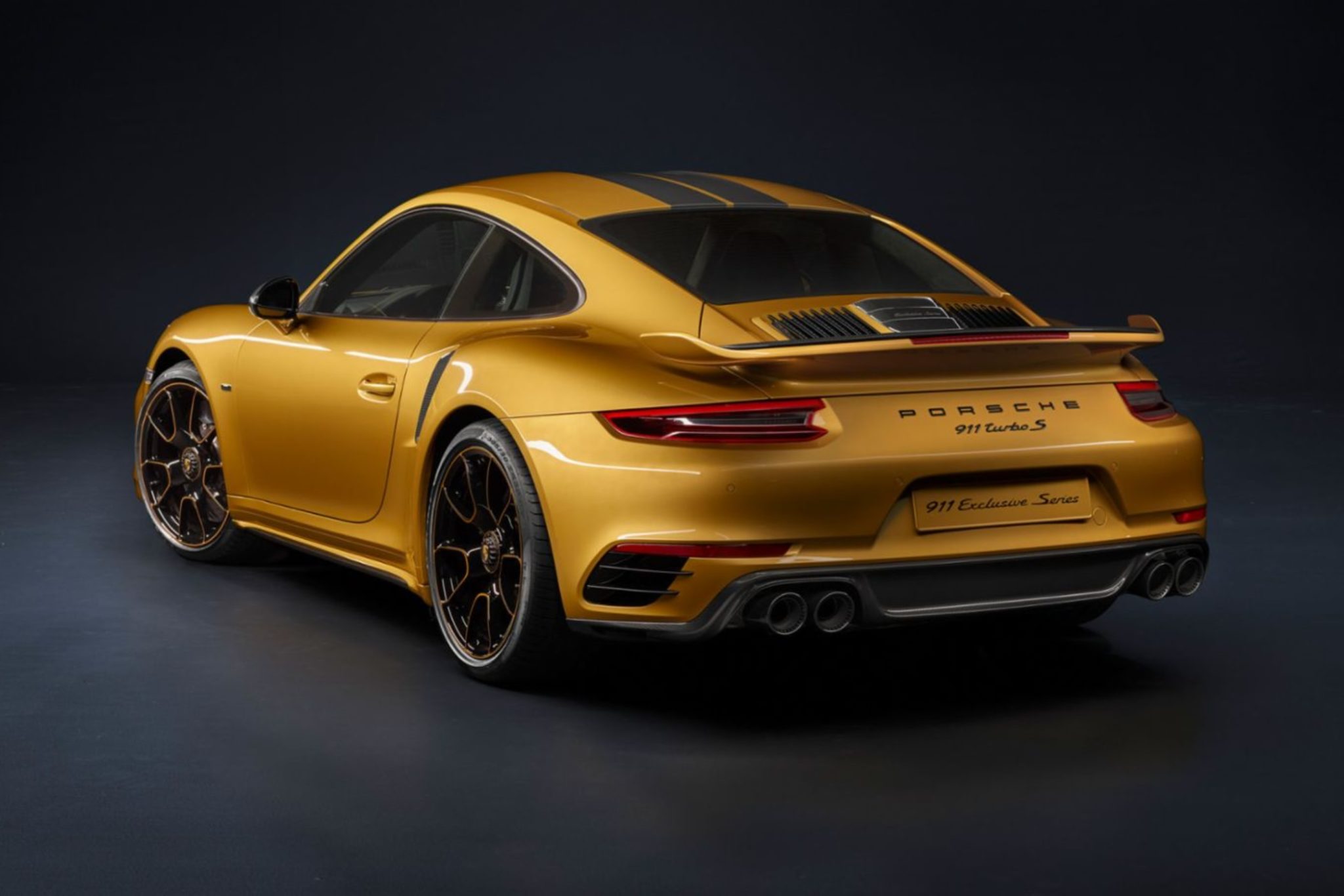
Making Watches The New Way
However, one thing is certain: Porsche Design is writing another piece of watchmaking history with the so-called ‘Porsche Design Custom-built Timepieces’ and opening a new chapter in the manufacture of wristwatches.
The idea of the sports car on the wrist is based on an entirely new development and manufacturing process for wristwatches. Bergmann is happy to explain this in detail. His eyes light up with enthusiasm: ‘To be able to offer a completely customisable wristwatch with countless possible combinations in a series production, we had to heavily intervene in the processes of how watches are manufactured today, right down to how the customer assembles their personal timepiece to match their vehicle.’
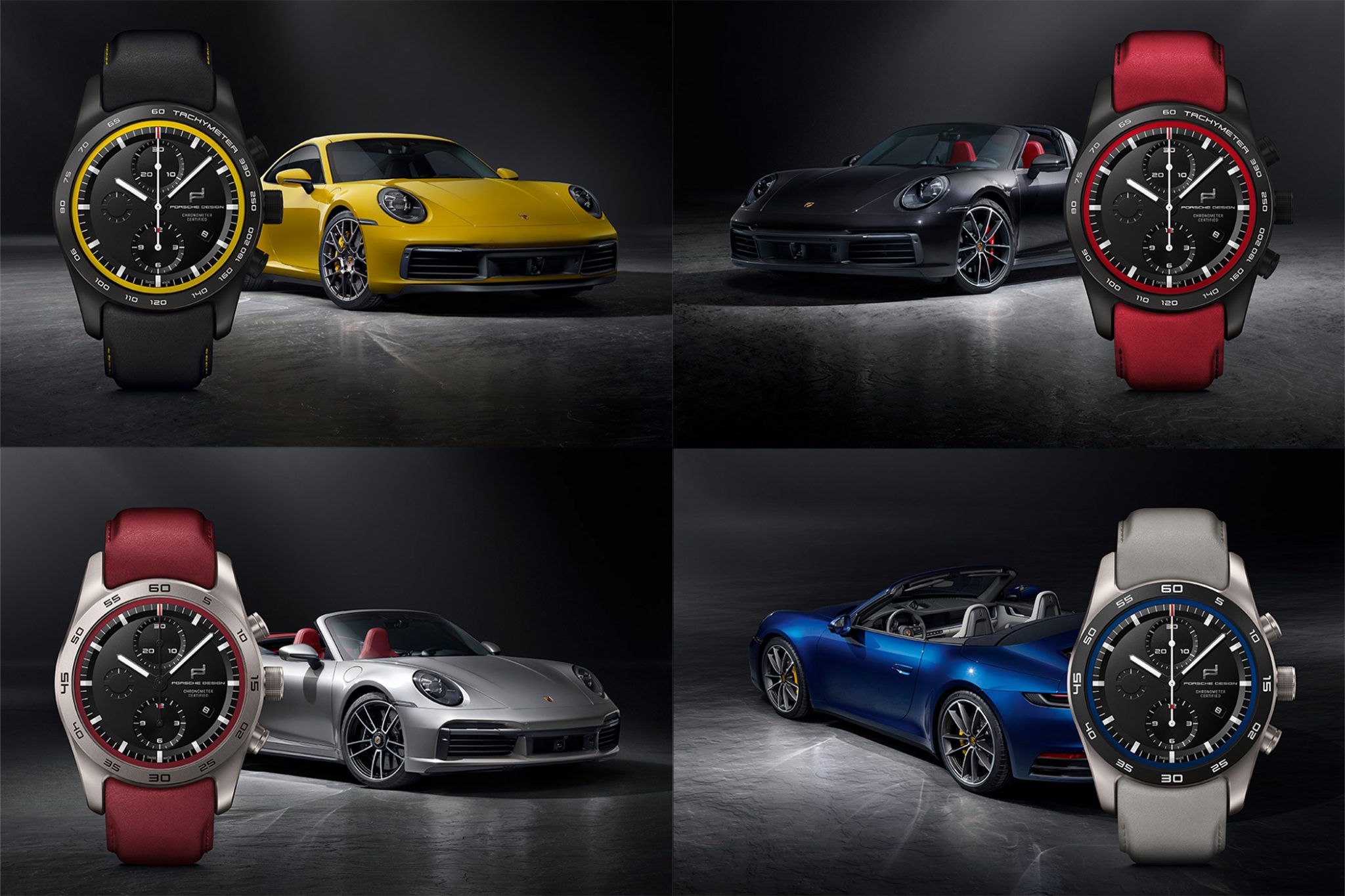
Production Processes Need to Change
The processes that customers digitally trigger through their selection in the Porsche Design Timepieces configurator change all production processes and supply chains and even influence how custom-built watches are constructed and designed by Porsche Design.
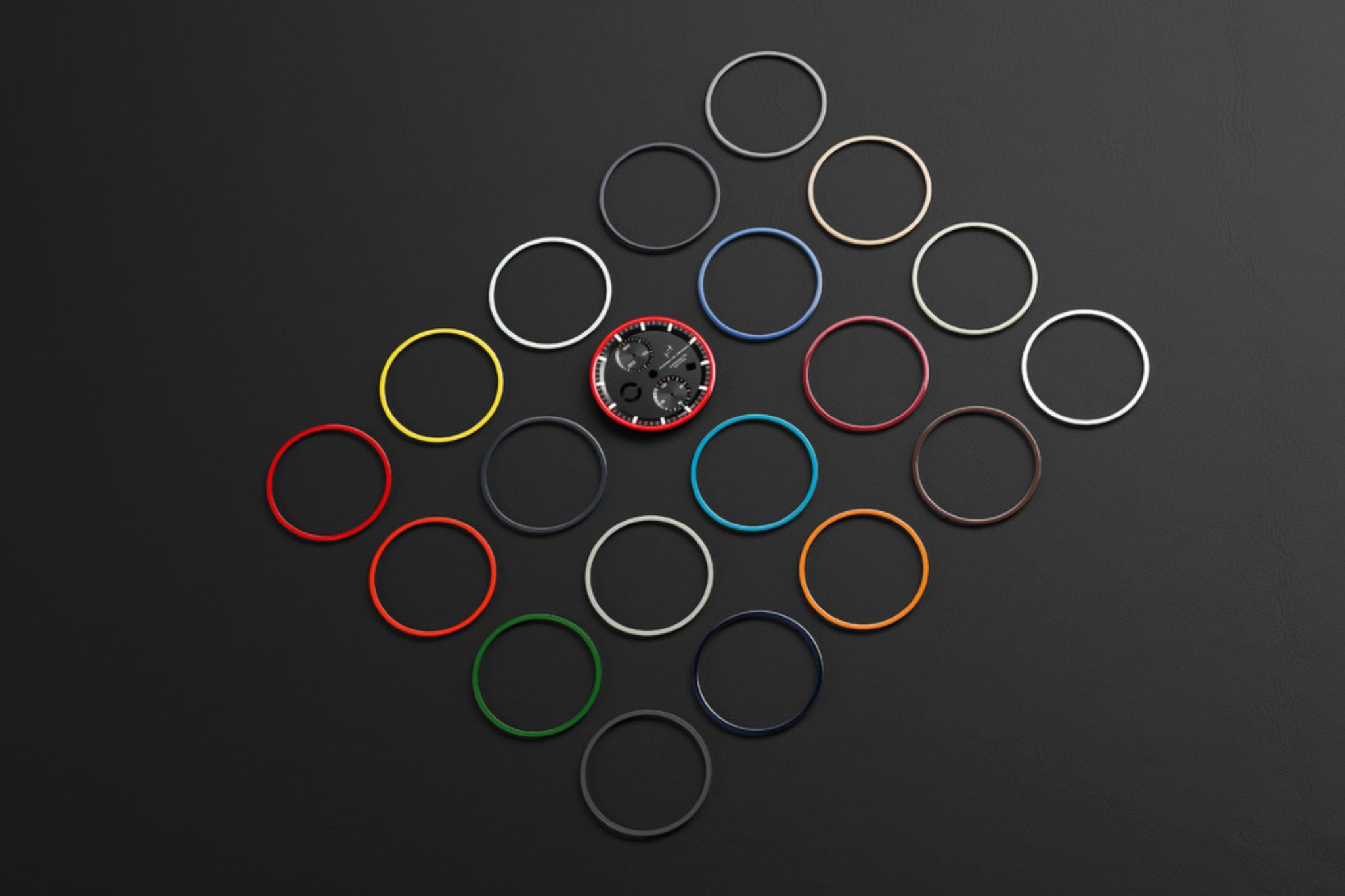
The Concept Even Influenced The Choice of Location
Manufacturing watches with a different approach than before was even taken into account ten years ago when selecting the location in Switzerland. Bergmann notes, ‘Solothurn is located in the middle of the manufacturing triangle of the best Swiss suppliers with their highly specialised businesses.’ The Biel region, with its classic watch manufacturers, also ensures an excellent supply of skilled labourers. Moreover, the factories of numerous component suppliers are in proximity. The nearby La Chaux-de-Fonds in the Neuchâtel Jura is considered the centre of Swiss watchmaking. Regarding transportation, Solothurn itself has excellent links to the airport cities of Zurich and Basel by road and rail. Gerhard Novak adds, ‘When Timepieces AG was founded in Switzerland in 2014, it was clear from the outset that we wanted to turn the concept, which was still called club watches at the time, into a reality.’
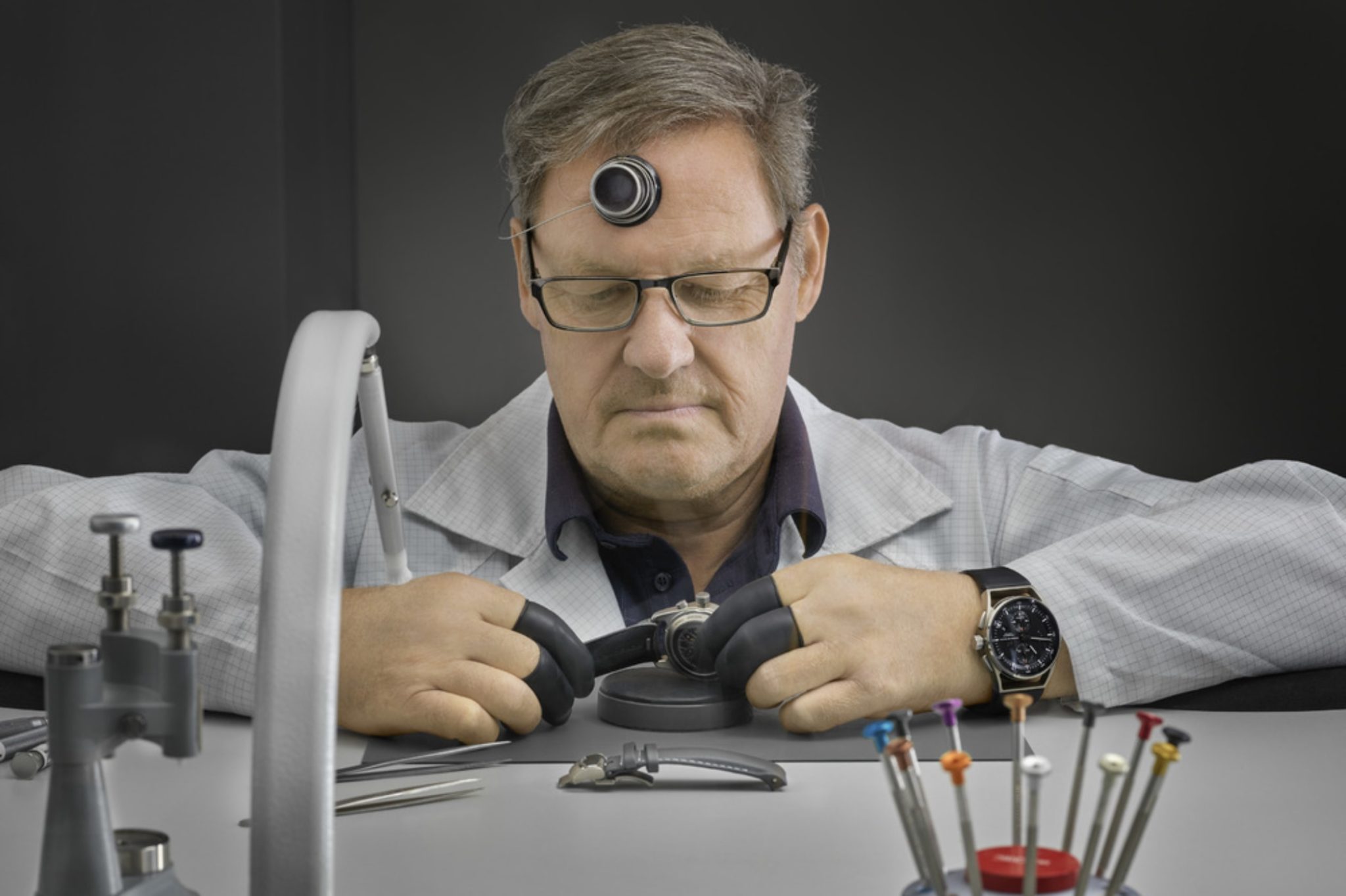
Significant Challenges at The Beginning
Bergmann and his team faced significant challenges: ‘With external watch manufacturers, as Porsche Design had previously done, we were unable to realise the vision of producing watches that were simultaneously developed and matched to the respective vehicle down to the smallest detail, as we also had to delve much deeper into the production and development of the cars themselves at Porsche in Zuffenhausen than a licensed manufacturer would ever have been able to.’
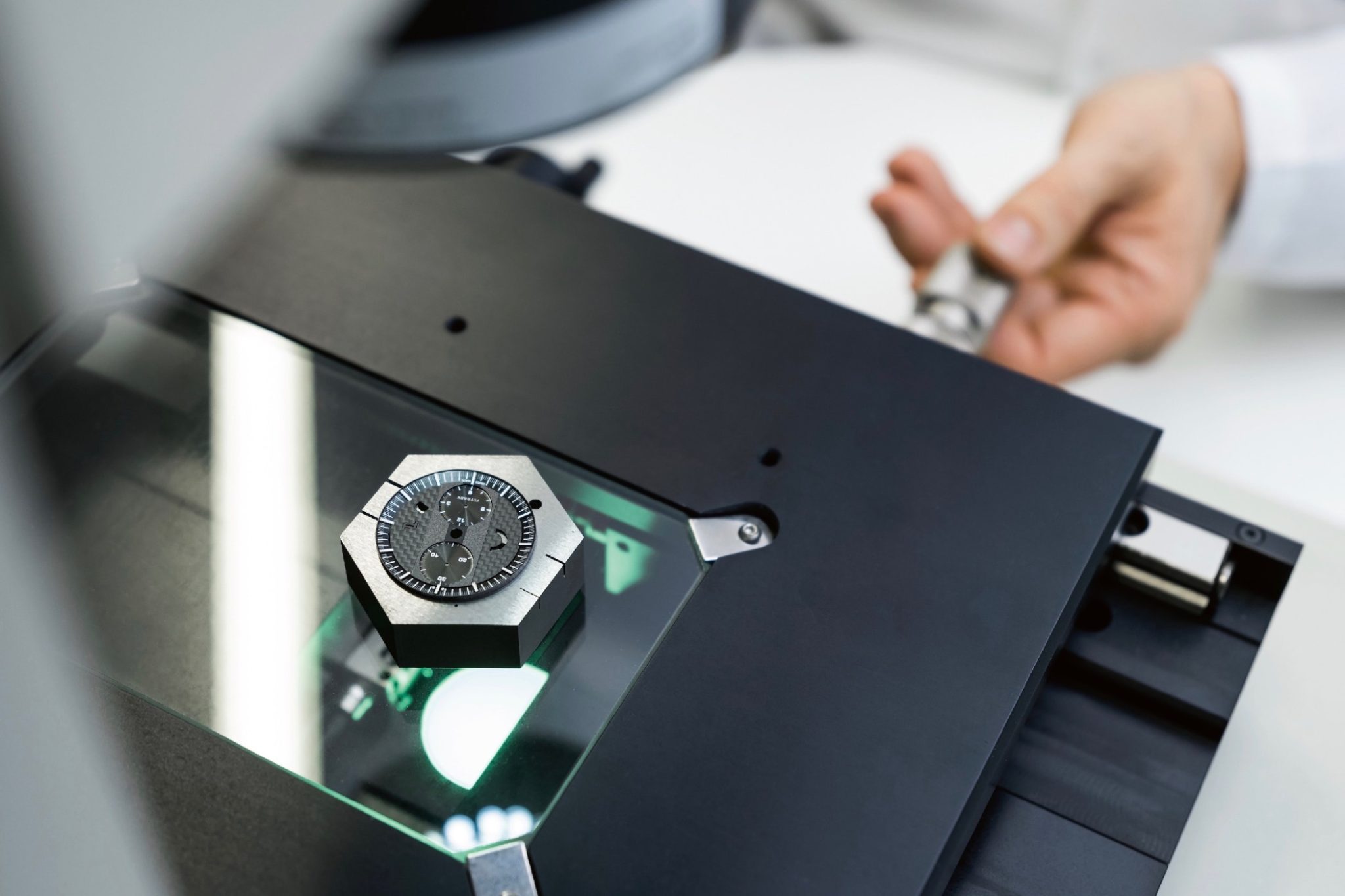
The Idea of Establishing The Company’s Own Watch Production Facility in Switzerland Was Born
The idea of establishing the company’s own watch production facility in Switzerland was born. Nowak remarks, ‘Nowhere is there greater expertise in the production of individual components for watches with our quality standards than in Switzerland. And even there, only in certain regions. Therefore, the Solothurn location was integral to the concept of Porsche Design’s Custom-built timepieces.’
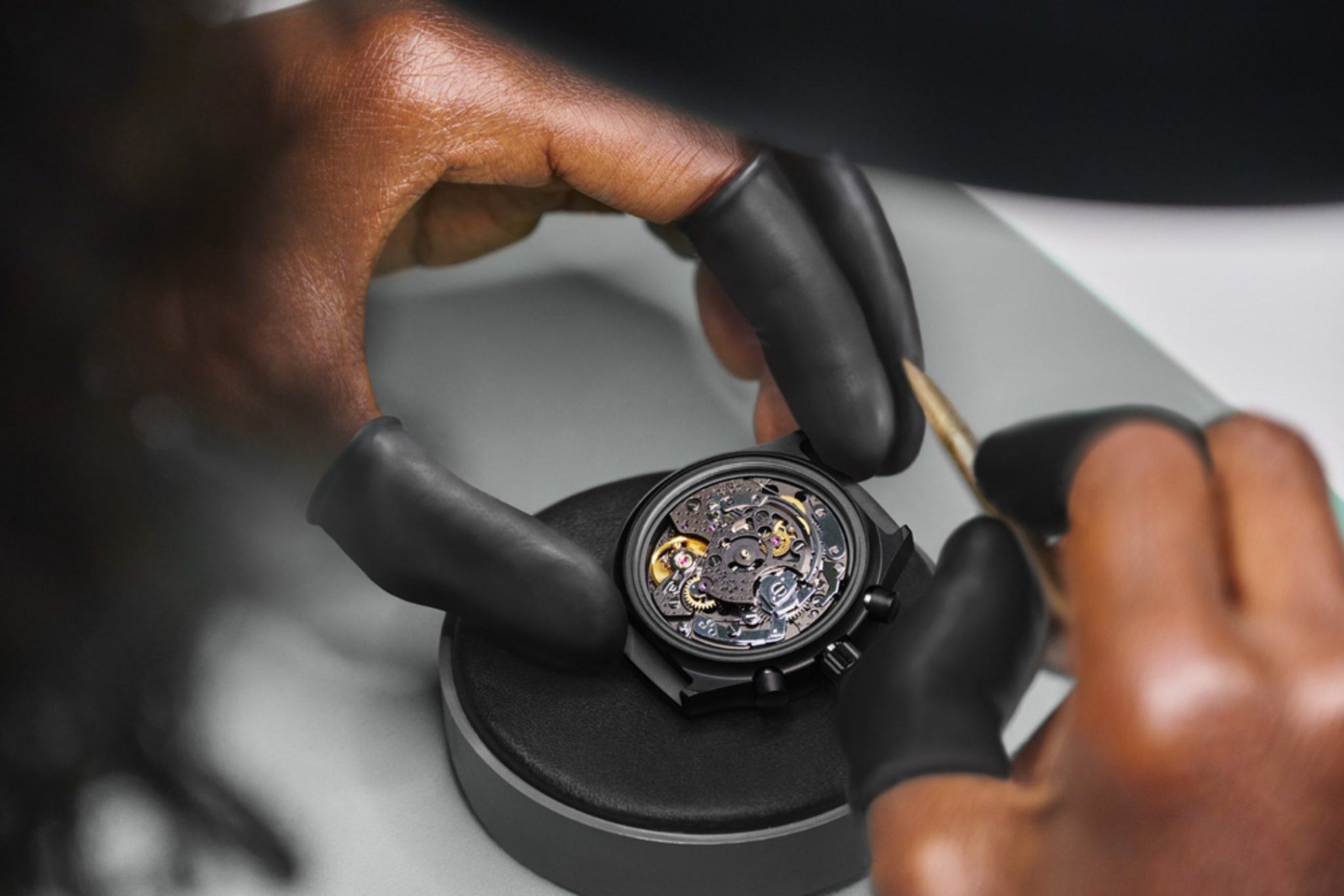
The Design Studio at Zell am See Had to Create an Entirely New Wristwatch
The design and construction process for wristwatches also had to be reorganised, and Studio F. A. Porsche at Zell am See was heavily involved in the concept. Bergmann elucidates, ‘It quickly became clear that we would need new cases or bracelets with completely different details for such a concept, which would allow a high degree of individualisation. These components must be interchangeable without having to develop a new watch each time.’ Therefore, a wide range of variants in small quantities is made possible by the sequential manufacturing of the custom-built chronograph inspired by Porsche’s vehicle construction.
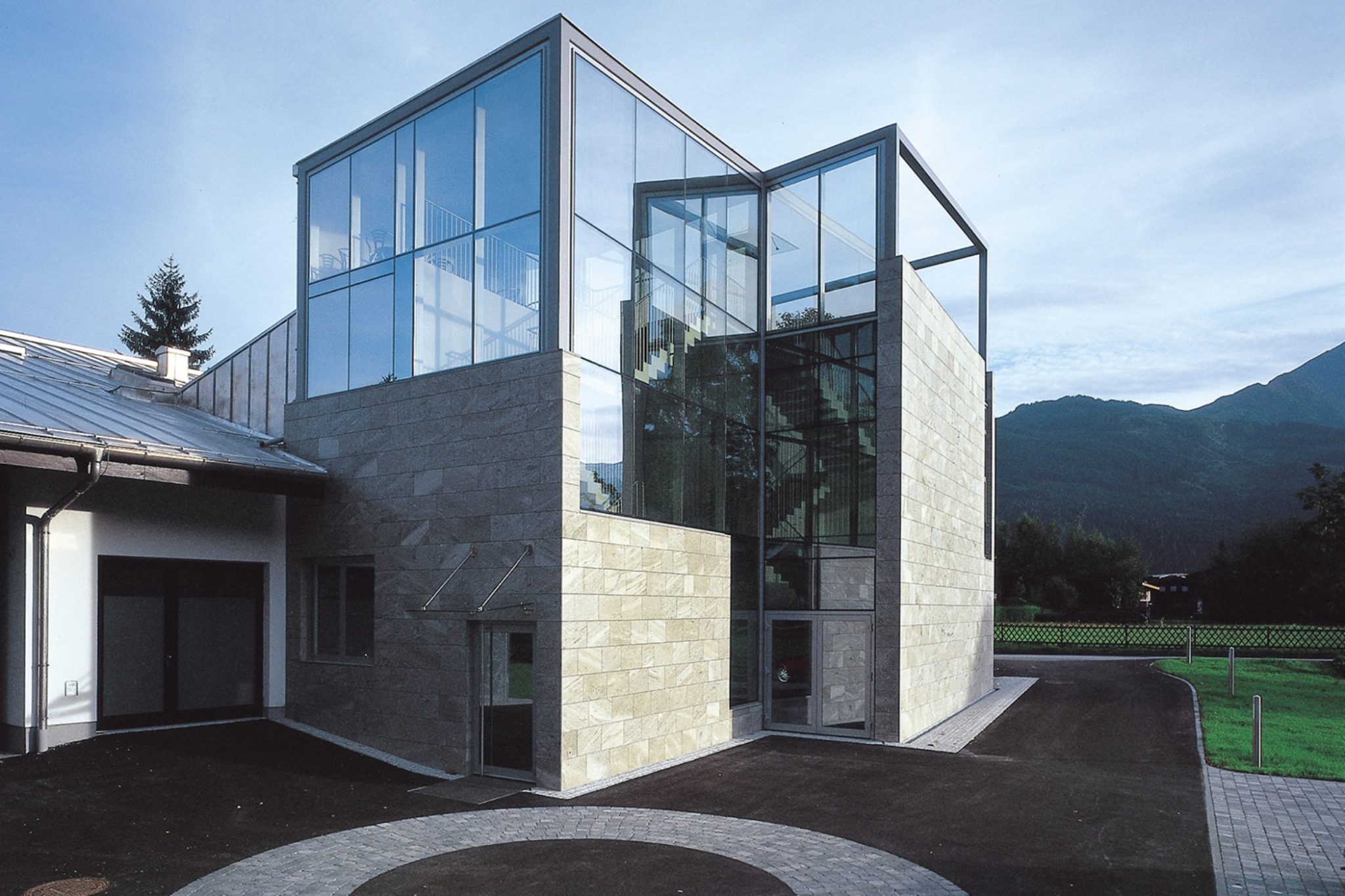
The Industry’s First Watch Configurator
But how does it work? The watch buyer starts with the Porsche Design configurator, which was specially developed and is technically the most complex of its kind for mechanical wristwatches worldwide. Once the customer has found the watch of their dreams or the watch to match their desired 911 online and put it together, they receive a code by email at the end of the selection process. They then take it to their Porsche dealer, who accepts the order and initiates the ordering process.
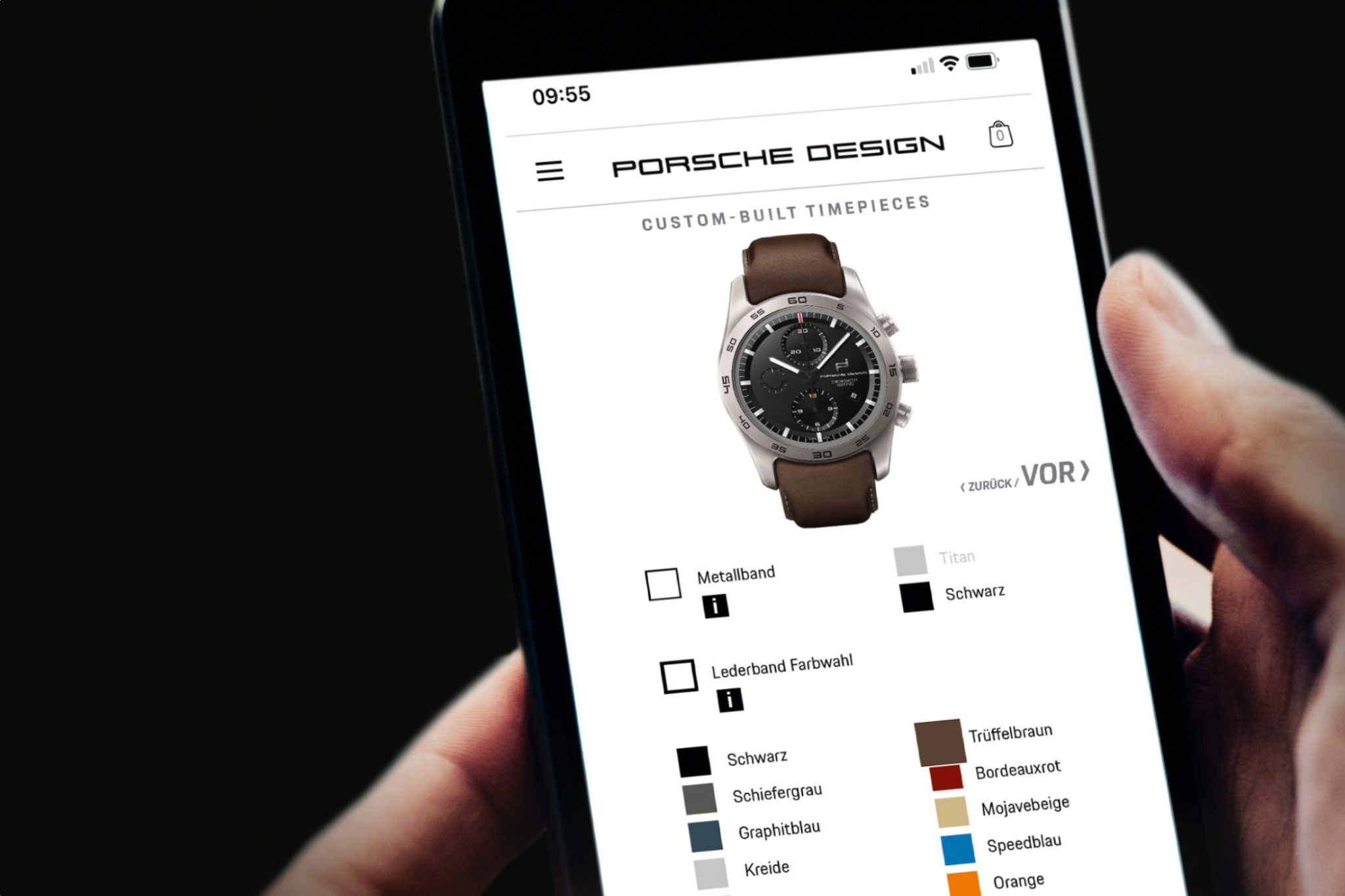
Porsche’s Understatement: More Than 200,000 Variants
Even though Bergmann speaks of ‘countless’ design variants, the truth is that they can be counted – or rather calculated. If you consider all the different yarns that would be possible for the watch straps, there would theoretically be over 300 million variants from which customers can choose to assemble a watch. Additionally, there are so-called ‘consultant-boxes’ in the Porsche Centres in the six countries in which Porsche has currently rolled out this programme, where customers can find out everything about the chronographs on site and are guided through the entire configuration process.
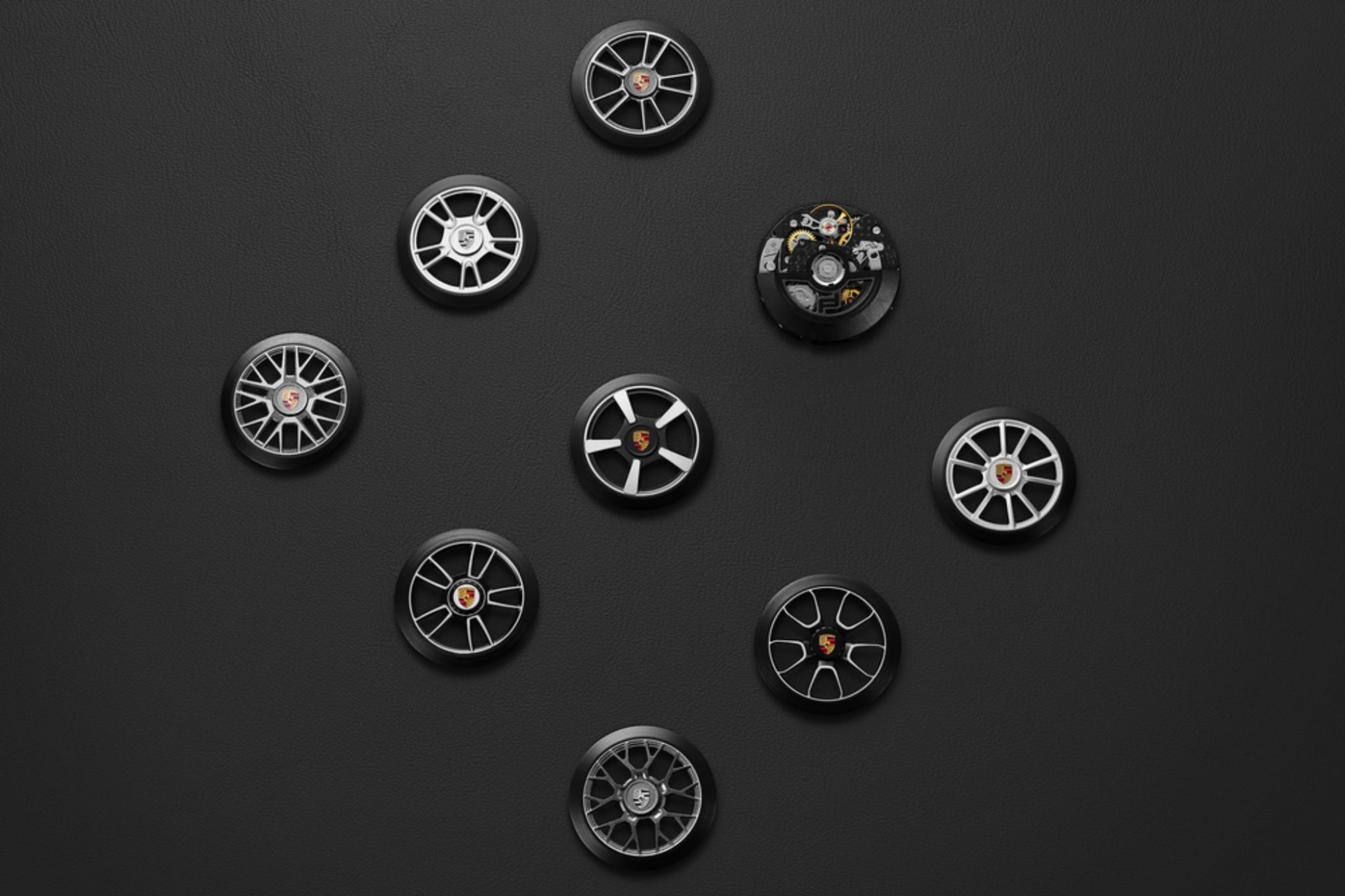
Are car salespeople the right watch salespeople? Novak replies, ‘The salespeople are trained, albeit differently.’ What is important to him: ‘The customer can, however, also try out the straps and colours for themselves on site and, above all, touch and have a look at the models. ‘
Nevertheless, he and his colleagues noticed something surprising: customers are less likely to use this type of trial and error. ‘They prefer to configure the watches themselves online,’ says Novak. Bergmann adds, ‘We have developed special evaluation systems that allow us to determine the frequency of individual features such as exterior colours, rim type, leather colour, case variants, etc. and use these in turn for planning future material requirements. This provides Porsche with important anonymised data on customer preferences.’
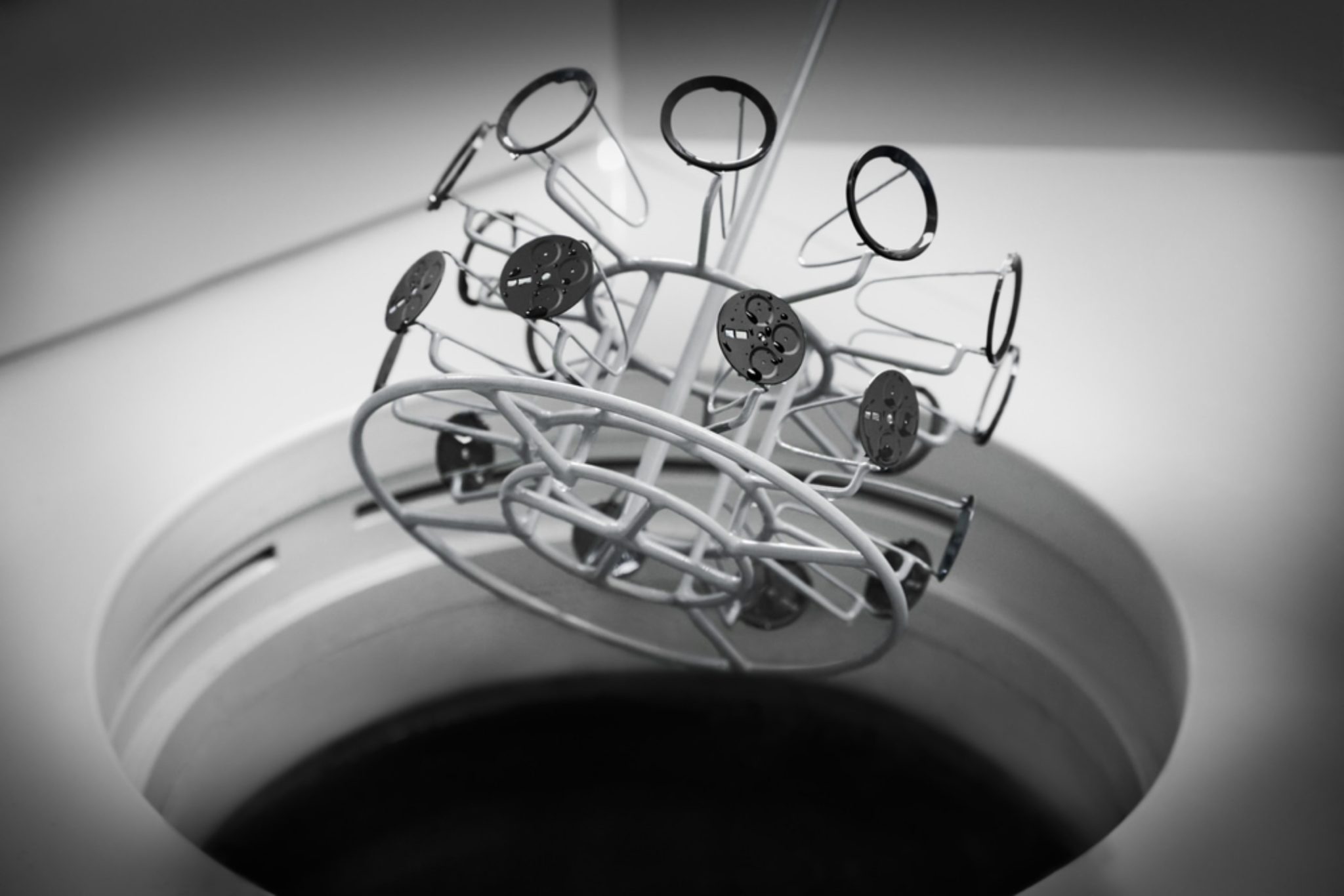
Once the watch to go with the car has been ordered, further sales issues can be easily handled. Bergmann comments, ‘Customers have been able to transfer the processes from the cars to the watches in no time. Just recently, we received an enquiry along the lines of: my Porsche is performing great. Can you order me the following matching watch for Christmas? Then the customer just sends us the code.’ It is then converted into a production order in Ludwigsburg. After receiving the order, Timepieces AG obtains this code as a production code, also known as a TP code, digitally and in print for security reasons.
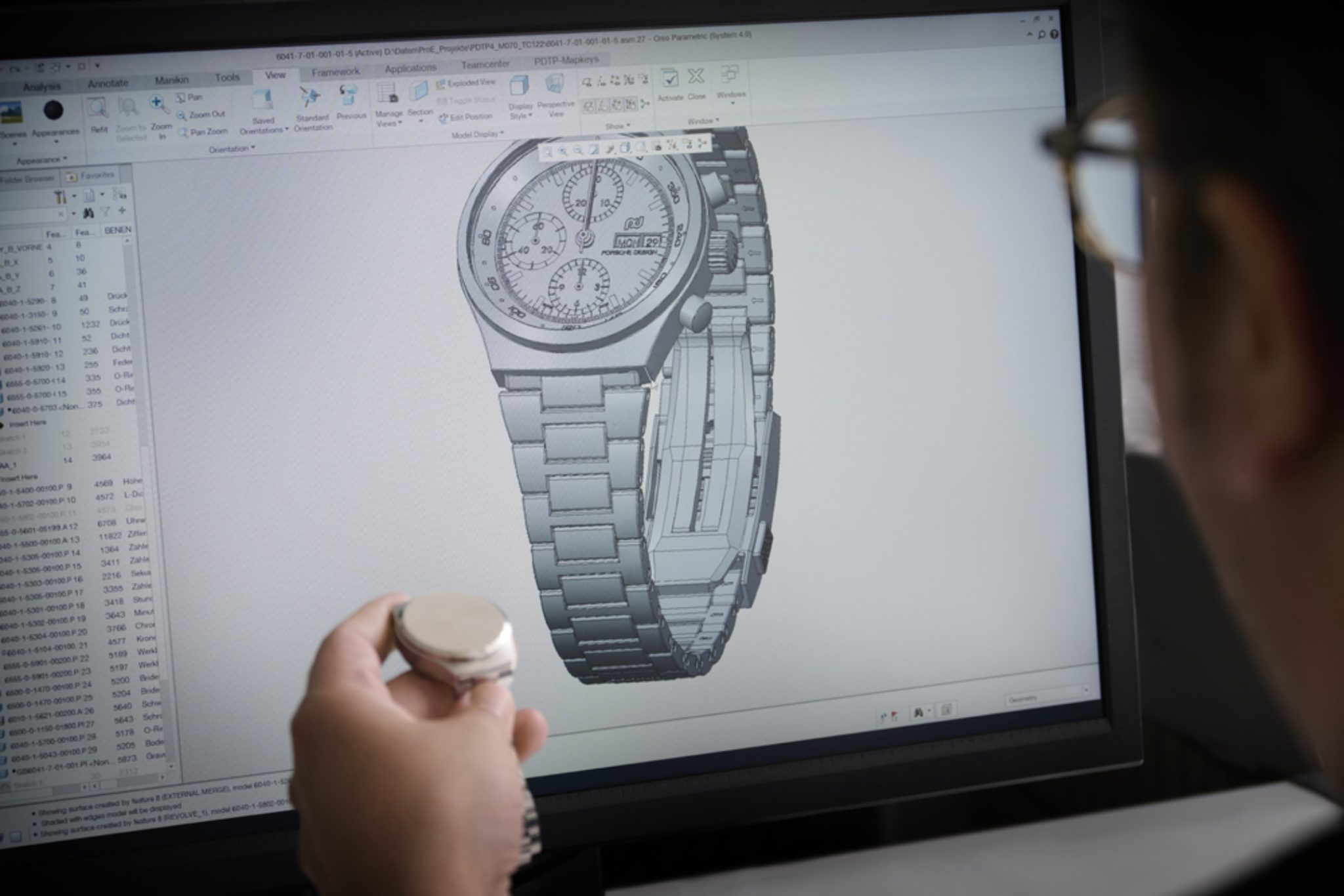
Why Does This Principle Not Work For Jewellers?
‘The big advantage is how we approach customers, which works differently for traditional jewellers,’ says Gerhard Novak. ‘The jeweller could never sell it because how would they know what colour the customer wants? At Porsche, red isn’t just red: it is carmine red or Indian red. These are things that Porsche drivers know, but probably nobody outside the Porsche community does.’ Porsche Design speaks the language of the car customer. For now, the car industry is probably not interested because the business is too small. The watch industry is failing because of the logistics of a car manufacturer and existing, utterly different production methods with their respective logistics. However, logistics are crucial for such diversity.
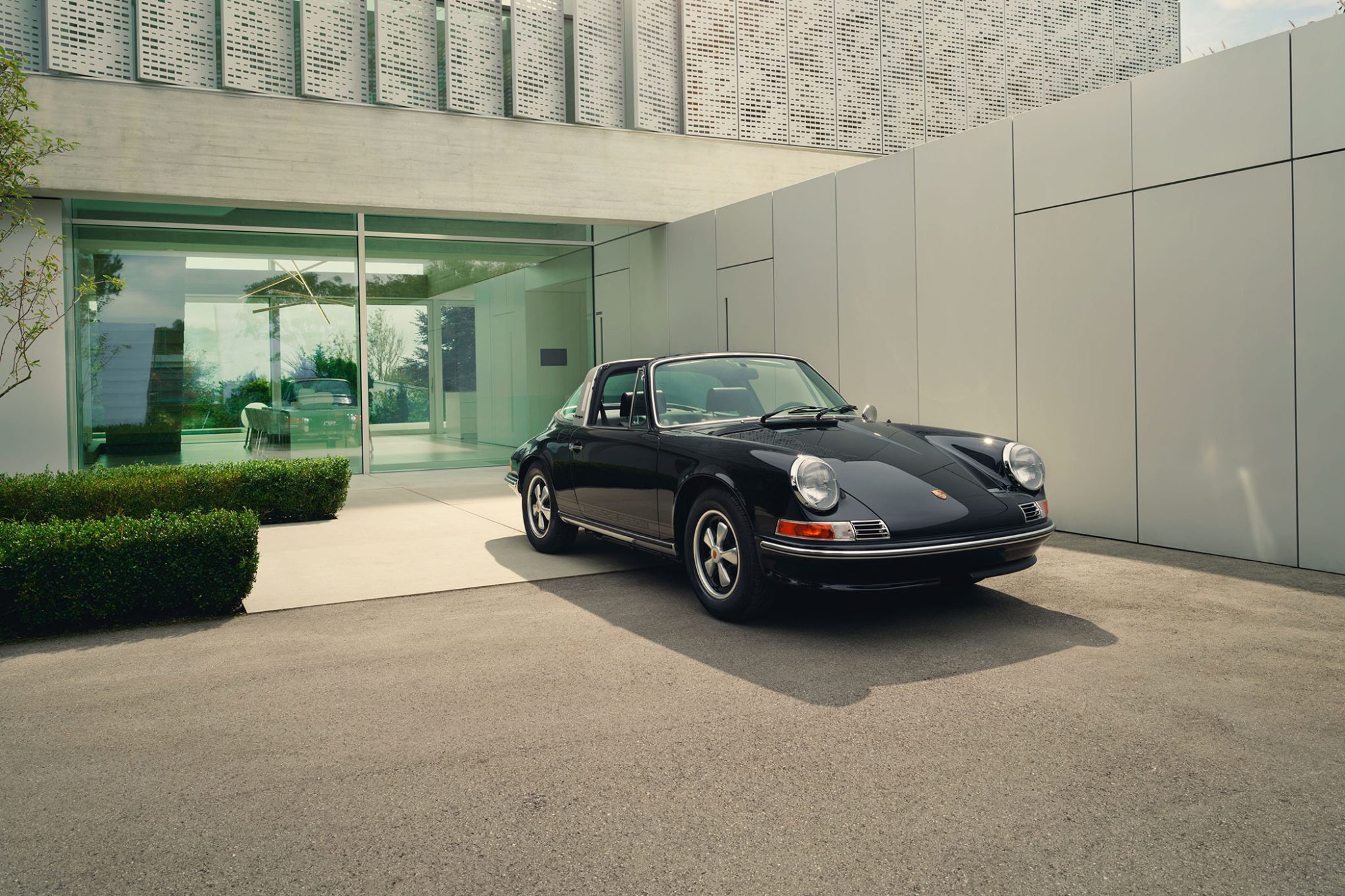
The Principle of Sequential Manufacturing For Watchmaking
The term’ sequential manufacturing’ comes from the automotive industry, and Porsche has perfected the process. It means that various incoming orders from the Porsche centres are simultaneously sorted into a virtual sequence in the background, and this process is then halted. Any change requests the customer has after confirming their order can be made via the Porsche Centre up to the day of production of individual components, usually seven working days before the start of production.
Thus, a QR code is generated, scanned in Solothurn and passed on to the suppliers. Bergmann explains, ‘Sequential manufacturing is a flowing, synchronised process. We say: the ordering process of the watch draws material from the supplier, i.e. the individual winding rotor, the personalised strap or the matching dial.’
Watch Production With Zero Flaws?
In traditional Swiss watchmaking, there have been two classic principles of watch production to date. Either highly specialised companies supply individual components to manufacturers known as établisseurs. These établisseurs assemble the wristwatches from the components and deliver them to the retailers. Alternatively, so-called manufacturers produce the critical components, especially movements, in-house with a high degree of vertical integration. Yet, both principles only work to a limited extent for individual watch concepts such as Porsche Design’s Custom-built timepieces programme. Bergmann says, ‘Individual parts are usually produced in large quantities with a few variants for manufacturers. Manufacturers can build highly customised watches, but usually only in small series. With both variants, the costs explode at some point when either the quantities or the variety increase.’
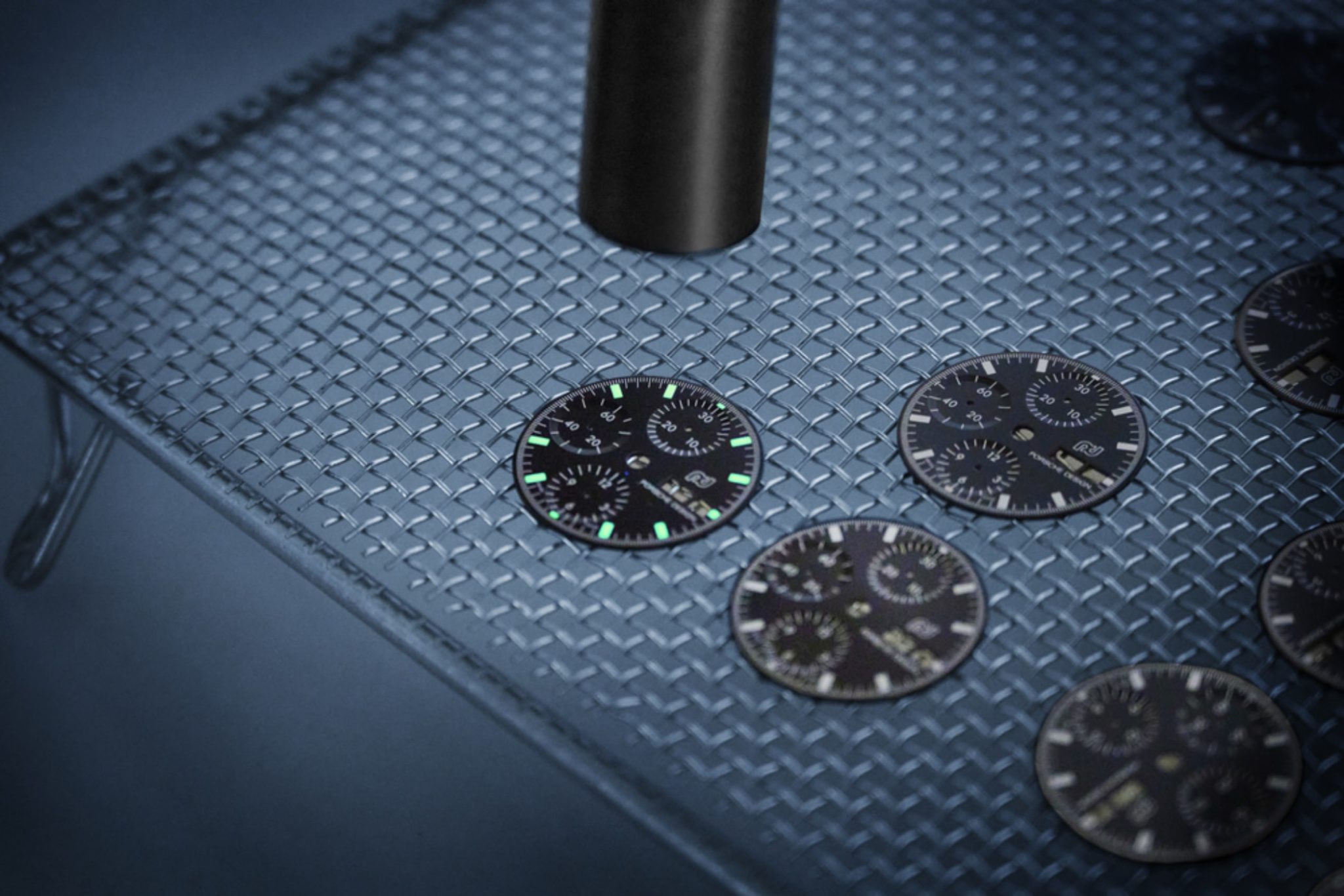
Taking a Closer Look at Porsche Design’s Manufacturing
In the following, we will closely examine Porsche Design’s manufacturing. In 2014, the company moved into the office building in Solothurn. The contracting company manufactured the first watches before the company’s own production was established. The first expansion within the existing building followed last year. At Porsche Design, production first means établissage, for example, watch assembly, then quality control and logistics, which is at the heart of it all.
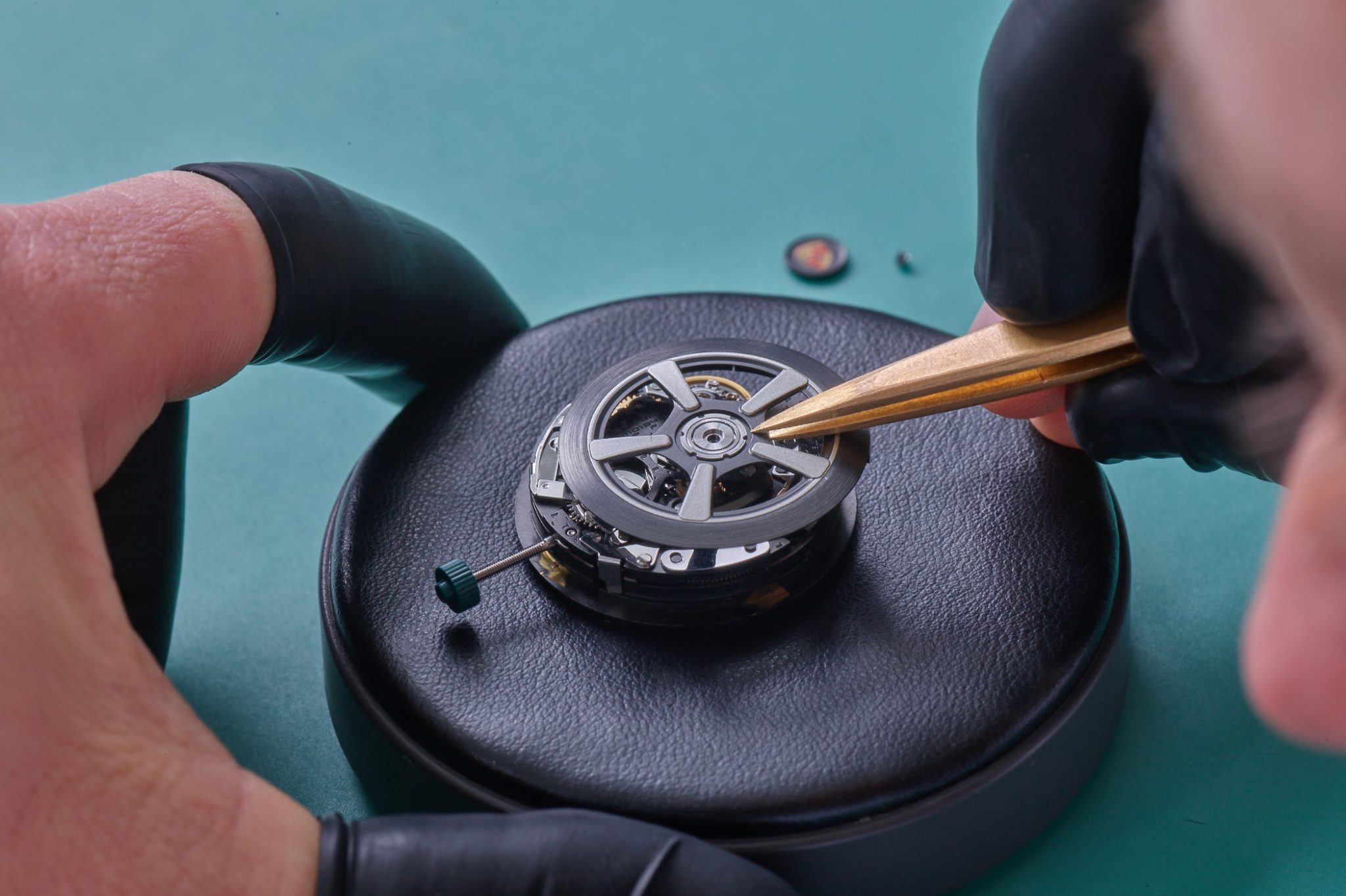
The process is almost identical to automobile production in Zuffenhausen. Each watch has a specific order form with a picture of the watch and a so-called picking list from which one of the watchmakers on site gathers all the components. The watchmaker has a small cart with a picking box with small compartments for all the components he must collect from the logistics warehouse. He ‘picks’ them, as they say in the car industry: the right flywheel here, the right hands there, then the screws, the movement, the case, the dial, the coloured rings in car colours, the bracelets, and the sapphire crystals. The watchmakers rotate from station to station. Experts call this polyvalent. One day, the employee carries out the quality check, and the next, they assemble the customers’ watches.
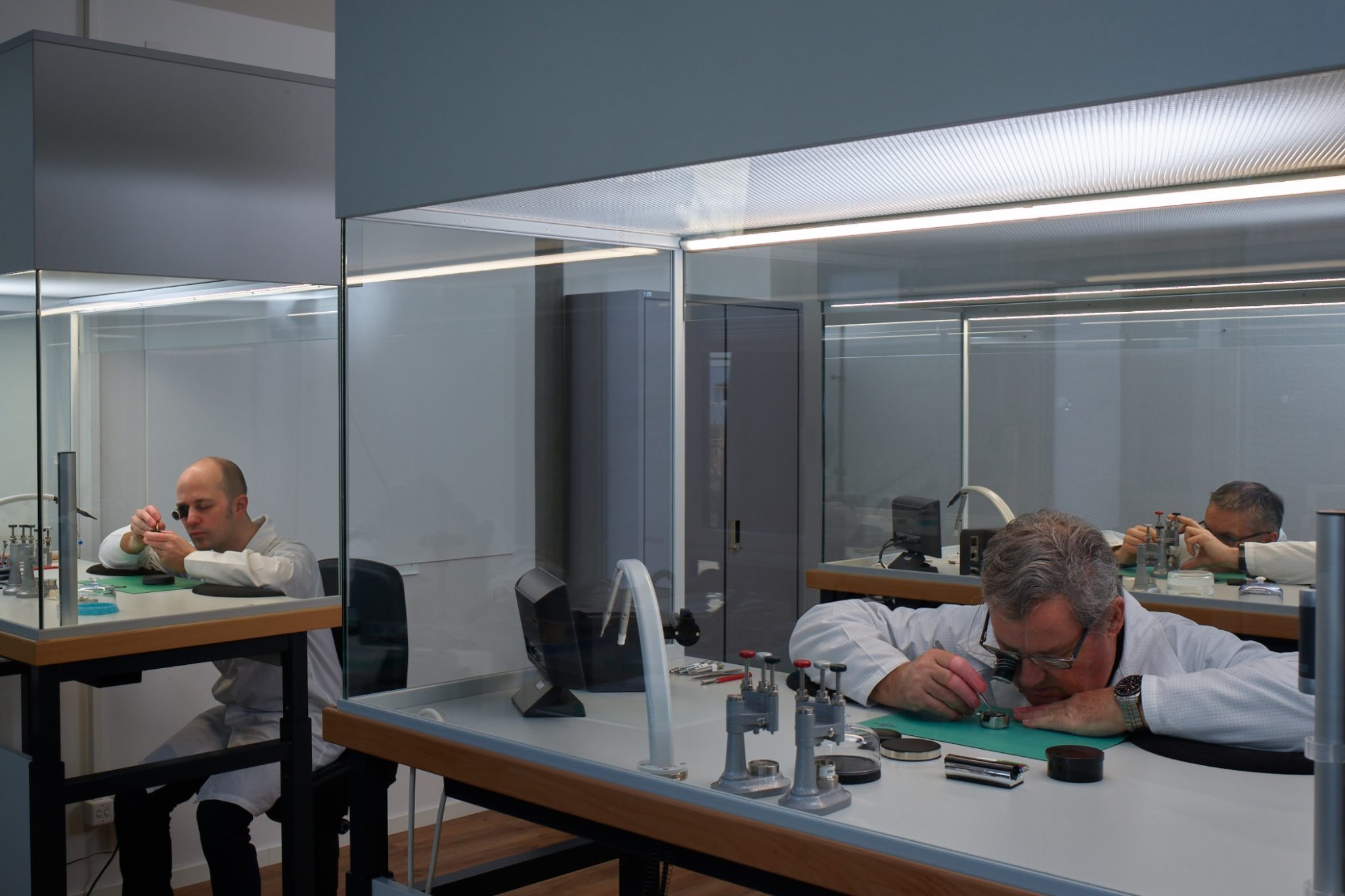
Suppliers Need to Reconsider
The zero defects principle applies to Porsche Design’s Custom-built timepieces. Suppose a component is only manufactured once because it only fits one order. In that case, watchmakers must be able to rely 100 per cent on the fact that it is flawless. Bergmann notes, ‘Here, Porsche Design is reversing the classic watchmaker principle of quality control when receiving goods because now the supplier already has to guarantee the quality upon delivery.’
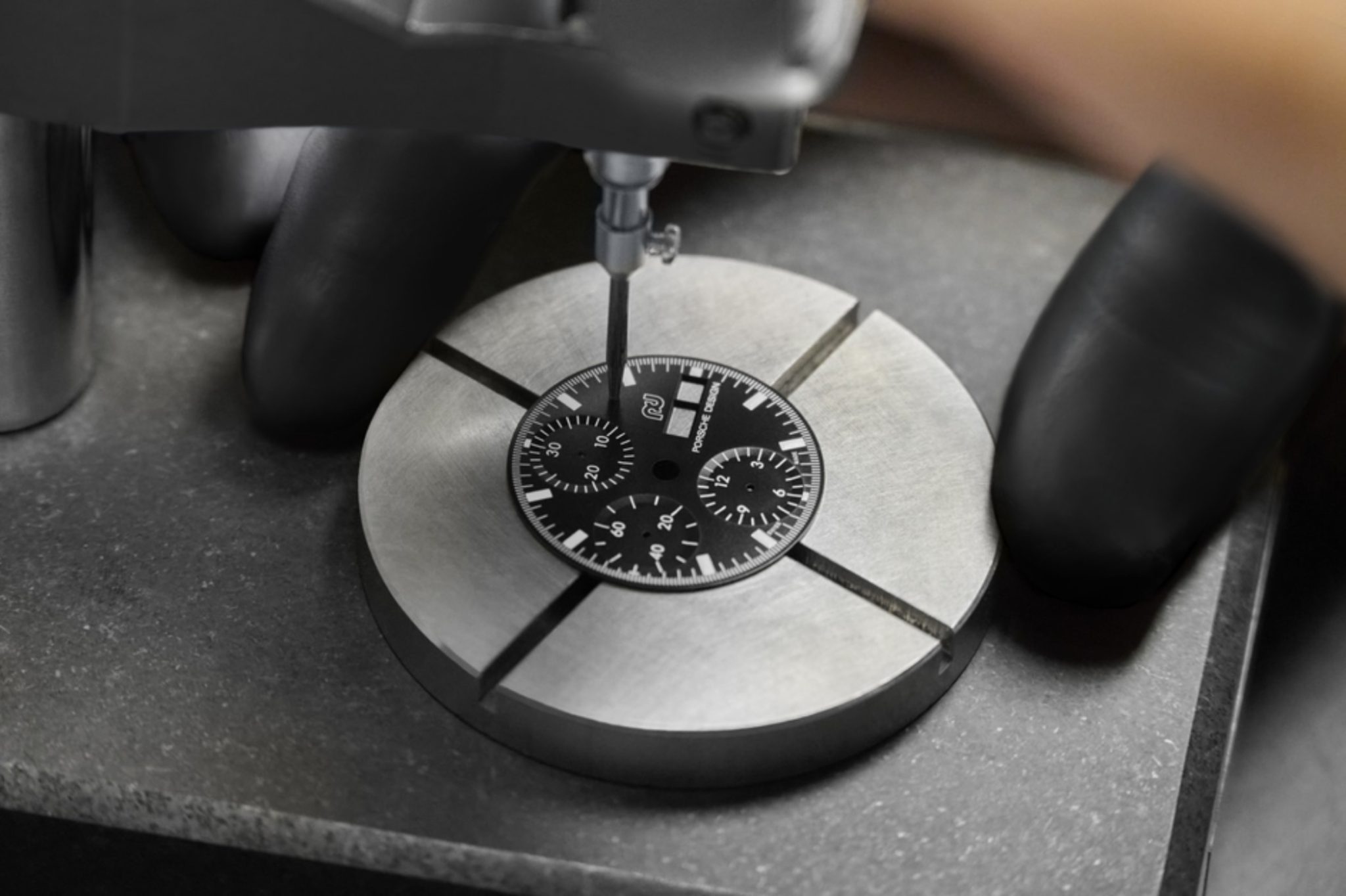
The Engineering Also Comes From Porsche Design
The principles common to Porsche sports car construction are being transferred to wristwatch production for the first time. Bergmann is responsible for this new approach: ‘In our design studio at Zell am See, our colleagues design the watches and, together with the suppliers, we develop them down to the last detail. The engineering and quality specifications all come from Porsche Design.’ If all components from the suppliers are immaculate, production begins, and the manufacturing process, therefore, differs significantly from the classic approach where the watches move from station to station and specific components such as bracelets are each delivered.
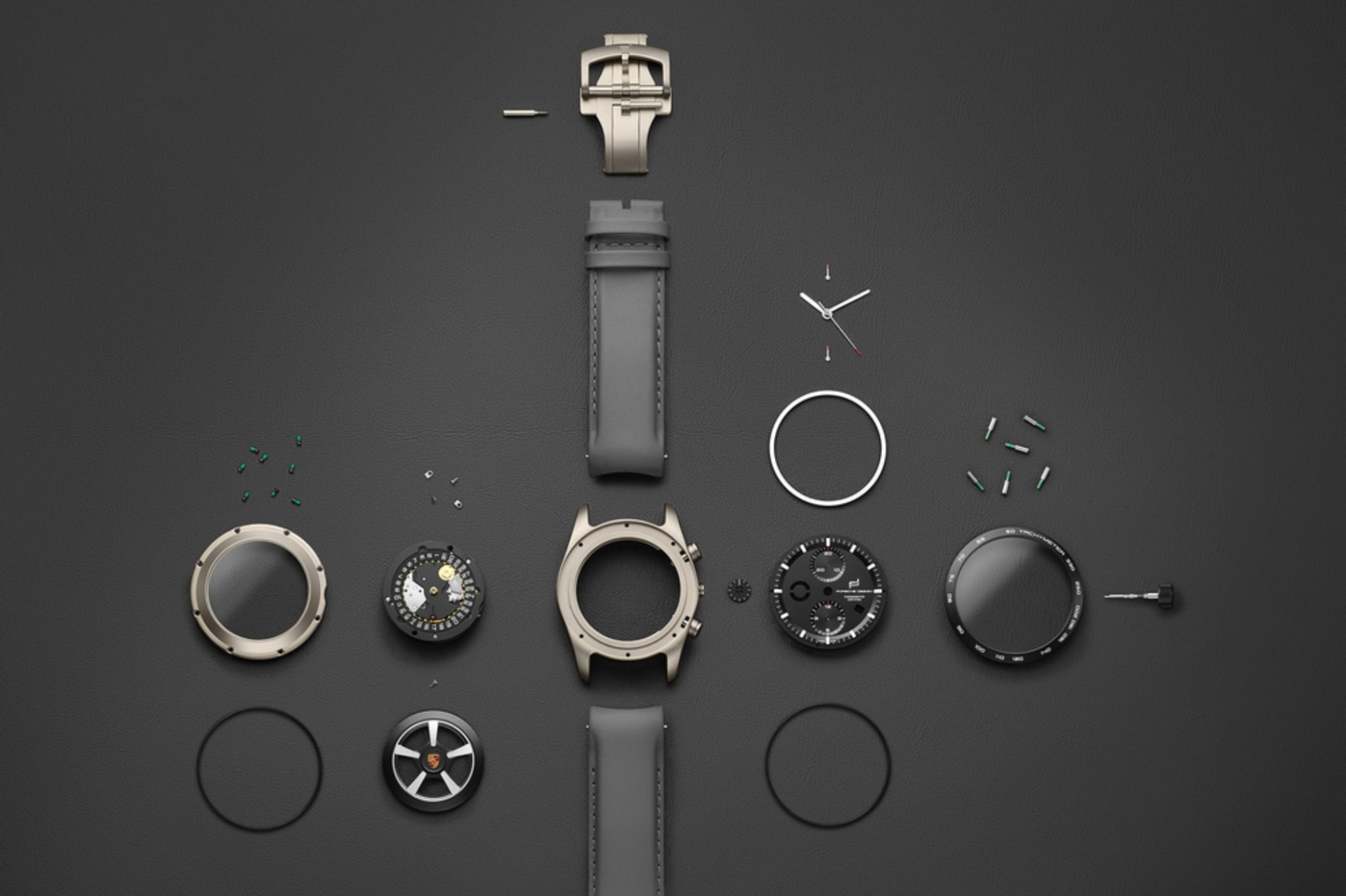
For This Type of Watch Manufacturing, Quality Control is a Key Concept
For this type of manufacturing, quality control is a crucial concept. As Bergmann illustrates, ‘If a dial only exists once, the watchmaker must install it without errors. This is a different responsibility compared to always installing the same dial in a row and being able to simply pull a second one off the shelf if it is damaged.’ The quality must be constantly checked during the process, ensuring that the watch works and that the specification has been applied correctly so that everything complies with the customer’s configuration. The perfect final result for the customer.
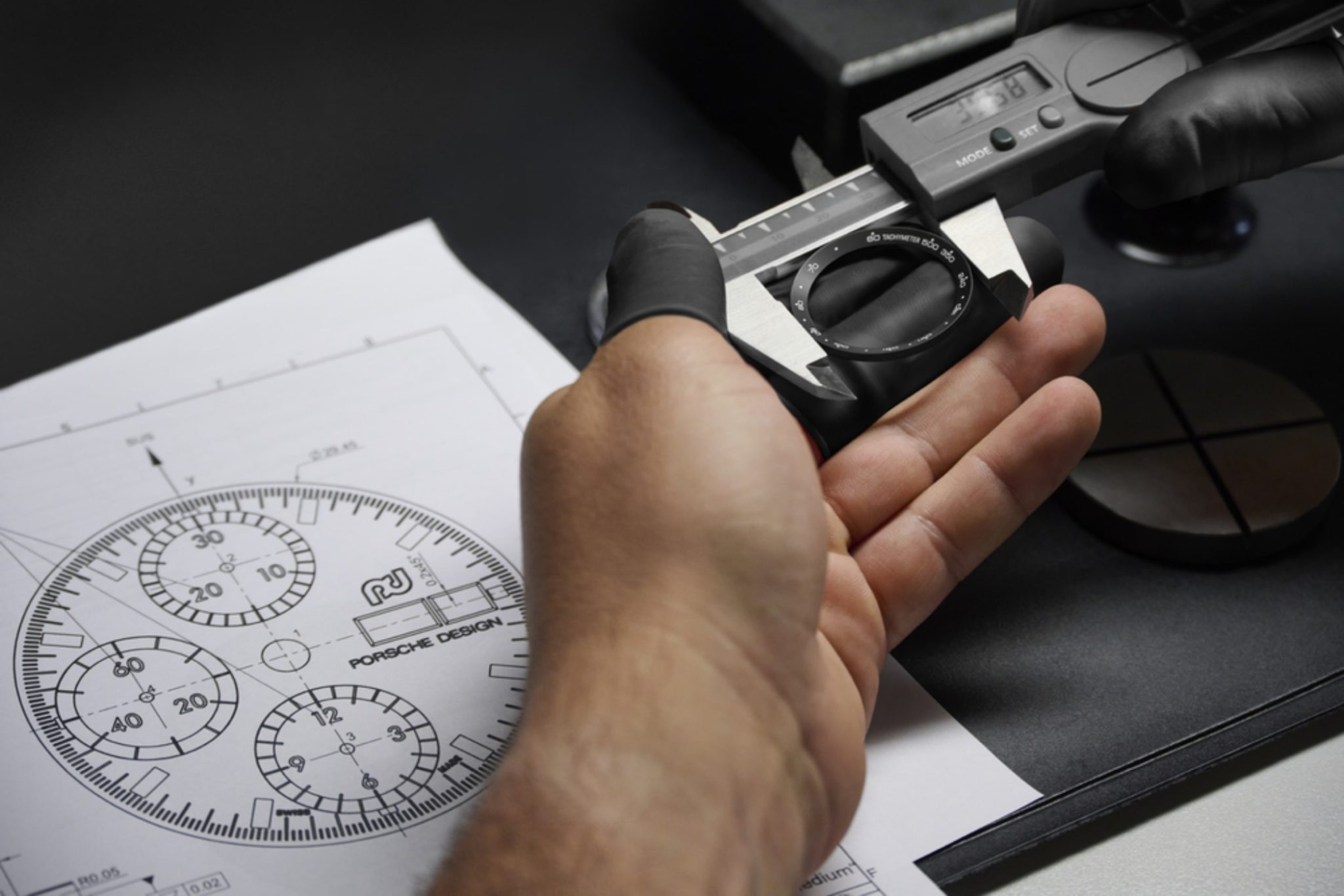
A Closer Look at The Porsche Design Chronograph Custom Built
All of Porsche Design’s custom-built models are 100 per cent Swiss Made. According to Bergmann, ‘The depth of added value in Switzerland is over 90 percent, well above the legally required 60.’ All Porsche Design movements are also checked for accuracy by the COSC (Central Swiss Testing Center Contrôle Officiel Suisse des chronomètres). Bergmann states, ‘We are now the first watch manufacturer to offer a COSC certificate for watches with individualised movements for the custom-built series.’
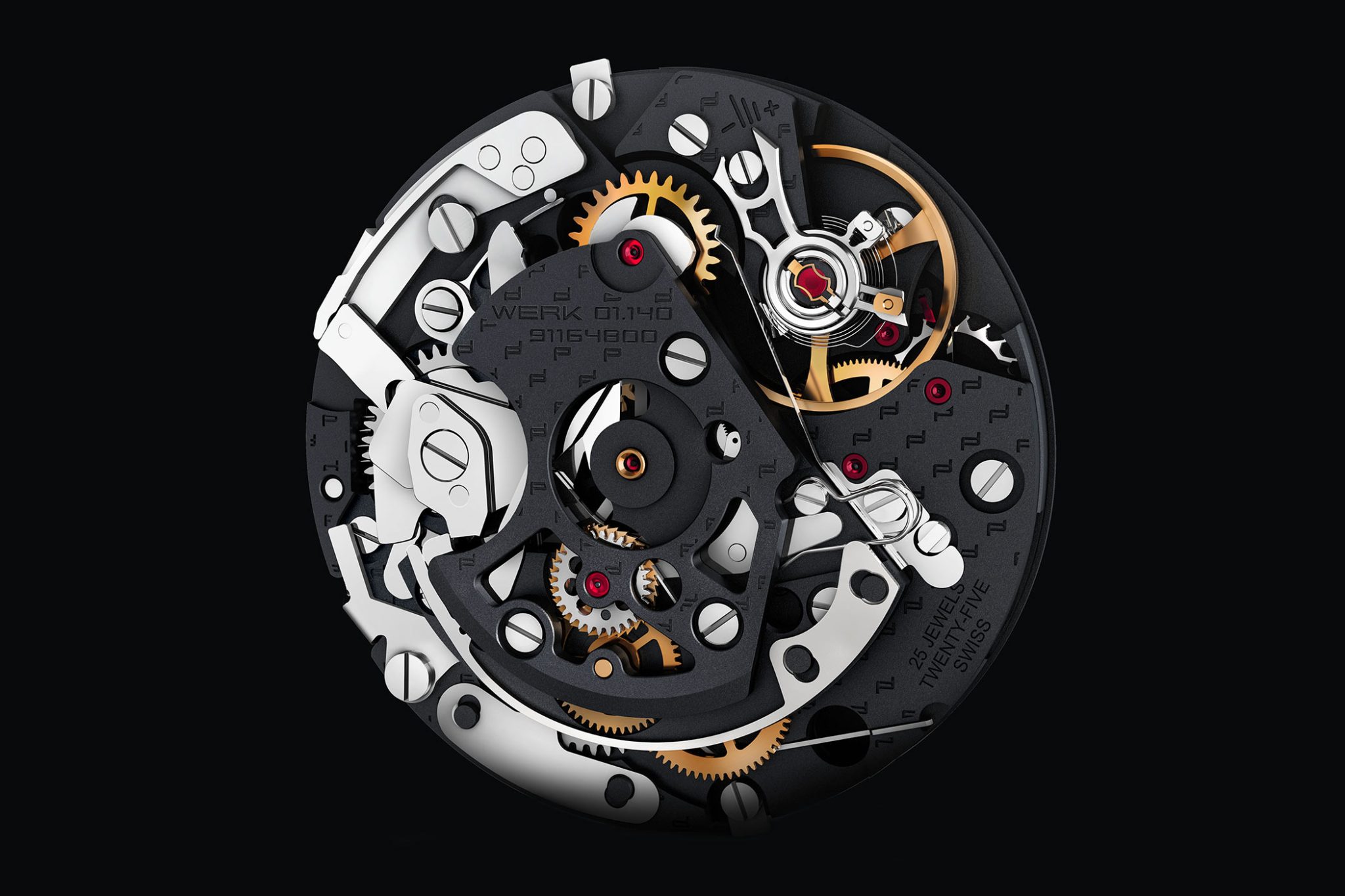
The Movement – a High-Performing World Premiere
With a 46-hour power reserve, the base in-house calibre 01.100 integrated into the Porsche Design Chronograph custom-built went into serial production for the first time. The highlight of the COSC-certified work is the customisable winding rotor reminiscent of the current rims of the Porsche 911 Carrera. For the first time, a watch manufacturer offers a COSC-certified wristwatch with a customisable component in the movement. Bergmann says, ‘The effort involved in checking all variants in advance is immense. But it is exactly this attention to detail that a Porsche fan and watch lover expects from us.’
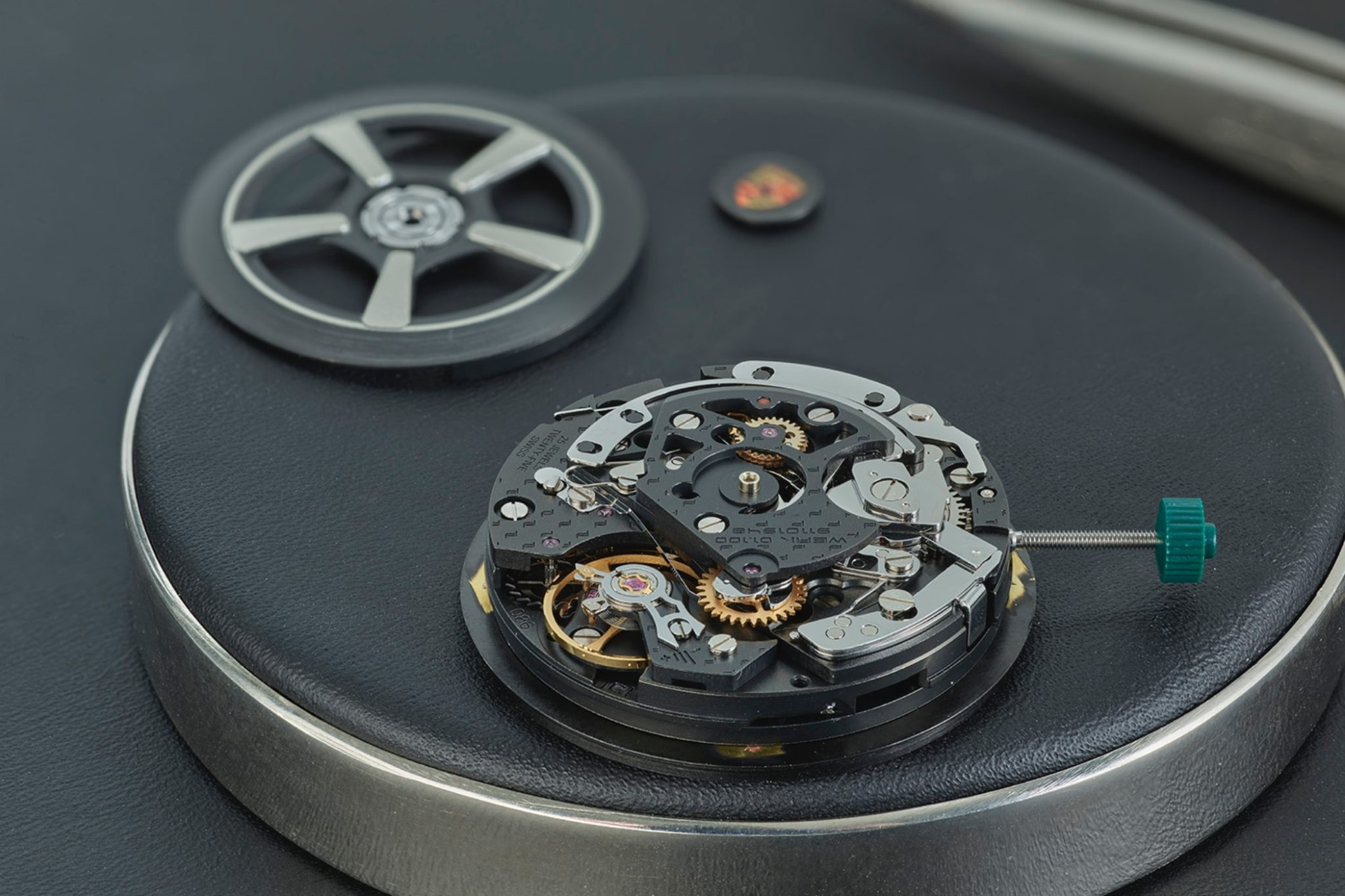
Unparalleled in The Watch Industry: The Wheel Rotor
From the classic Carrera rim, including the rotor cover and two-tone Porsche coat of arms, to the exclusive wheel with a golden Porsche coat of arms, there are seven different rotor types to choose from. Furthermore, the rotor flank can be lacquered in the vehicle colour of your choice, corresponding to the vehicle’s rim flank. Therefore, Porsche Design uses the original Porsche colour palette. The watch’s rim rotor is a 1:22 scale version of the original rim, adapted to the timepiece’s geometry. The rotors are manufactured with an accuracy of up to five-thousandths of a millimetre. The Porsche coat of arms, which sizes around 5 centimetres on the vehicle rim, measures just 3.3 millimetres in width and 4.4 millimetres in height on the winding rotor cover. The horse from the Stuttgart city coat of arms remains clearly visible to the bare eye and is the most technically sophisticated part of the watch. Bergmann: ‘We receive the construction plans for these designs from Weissach three years before production starts. Our designer then translates this into the winding rotor, which has to appear as three-dimensional as possible.’
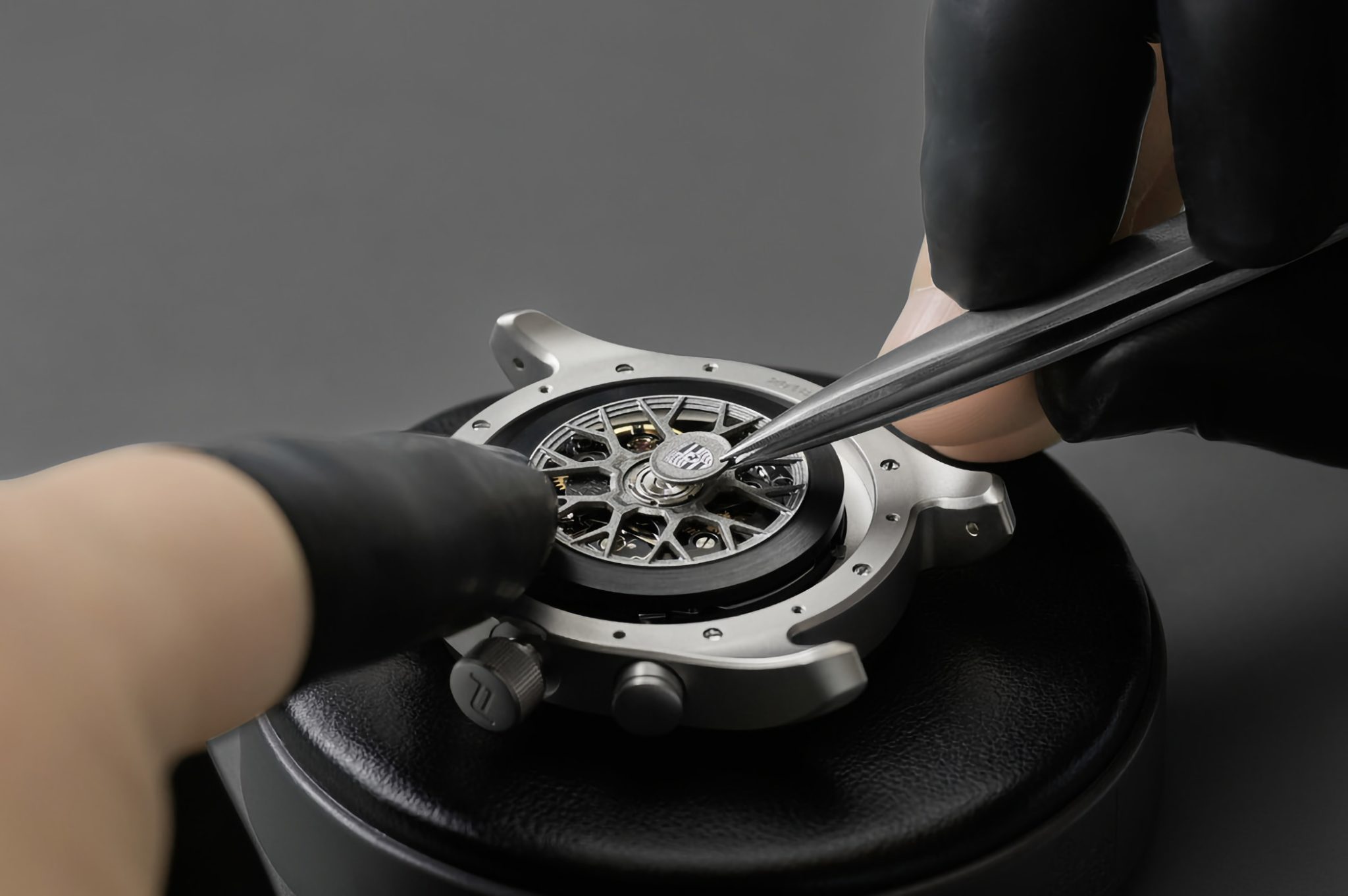
Straps and Bracelets – Up to 900 Different Configurations
Nowhere is the enormous effort that went into this watch more evident than in the available metal or leather bracelets, also offered in three different sizes. Small pop-up menus in the configurator make selection easier. Only skin-friendly titanium is used for the metal bracelets. All versions are equipped with individually screwed links. Like the case variants, they are available in glass bead blasted natural titanium or black coated with titanium carbide. There are also two different clasps to choose from. Optionally, a butterfly clasp with side pushers or a clasp with seven-fold fine adjustment are available. All leather bracelets consist entirely of the same leather used for the Porsche sports car in the 16 original leather colours of the Porsche 911. Porsche Design even uses the original thread in the colours of the Porsche interior for the decorative stitching. The leather bracelets include a butterfly clasp with a pin and straps with side pushers for unlocking. Customers can configure up to four different bracelets.
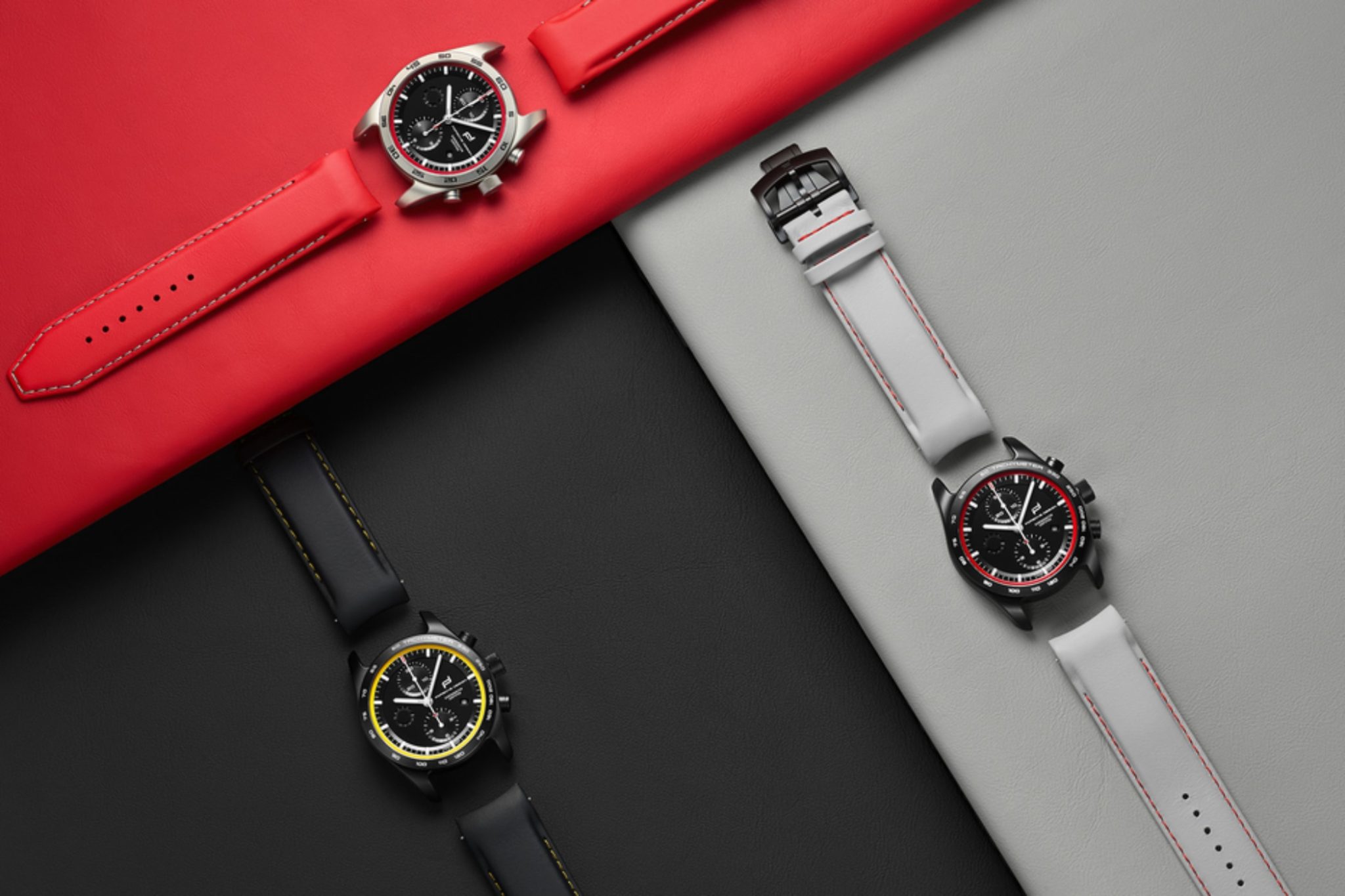
Even Decorative Stitching on The Bracelet Hails From Automobile Production
All 16 interior colours in the vehicle configurator are also available for selection for decorative stitching. Up to 900 different variants can be created in the configurator. Bergmann notes, ‘The leather used for the vehicle seats is really identical, so our supplier has to order it from the same tanneries as Porsche AG.’ The leather strap with a soft insert and hard end piece allows for a convenient quick-change system on the watch case. The complex product is assembled by hand at the supplier. First, the top leather is skimmed out; it is only 0.5 millimetres thin, so the decorative seam can be placed at the end together with the bottom leather. The yarn is also identical to that in the Porsche 911 vehicles but slightly thinner for aesthetic reasons. Gerhard Novak knows how popular they are, ‘Customers love not only the watches but also the bracelets: the average customer orders an average of 2.4 bracelets for their watch.’ Above all, the supplier has to reconsider, therefore. Bergmann remarks, ‘The manufacturer pre-produces the most important colours, but without yarn, and the process only begins when the order is placed. Then the decision has to be made whether the customer wants a medium, large or XL bracelet. Since we don’t keep any tapes, it also means that there is virtually no waste.’
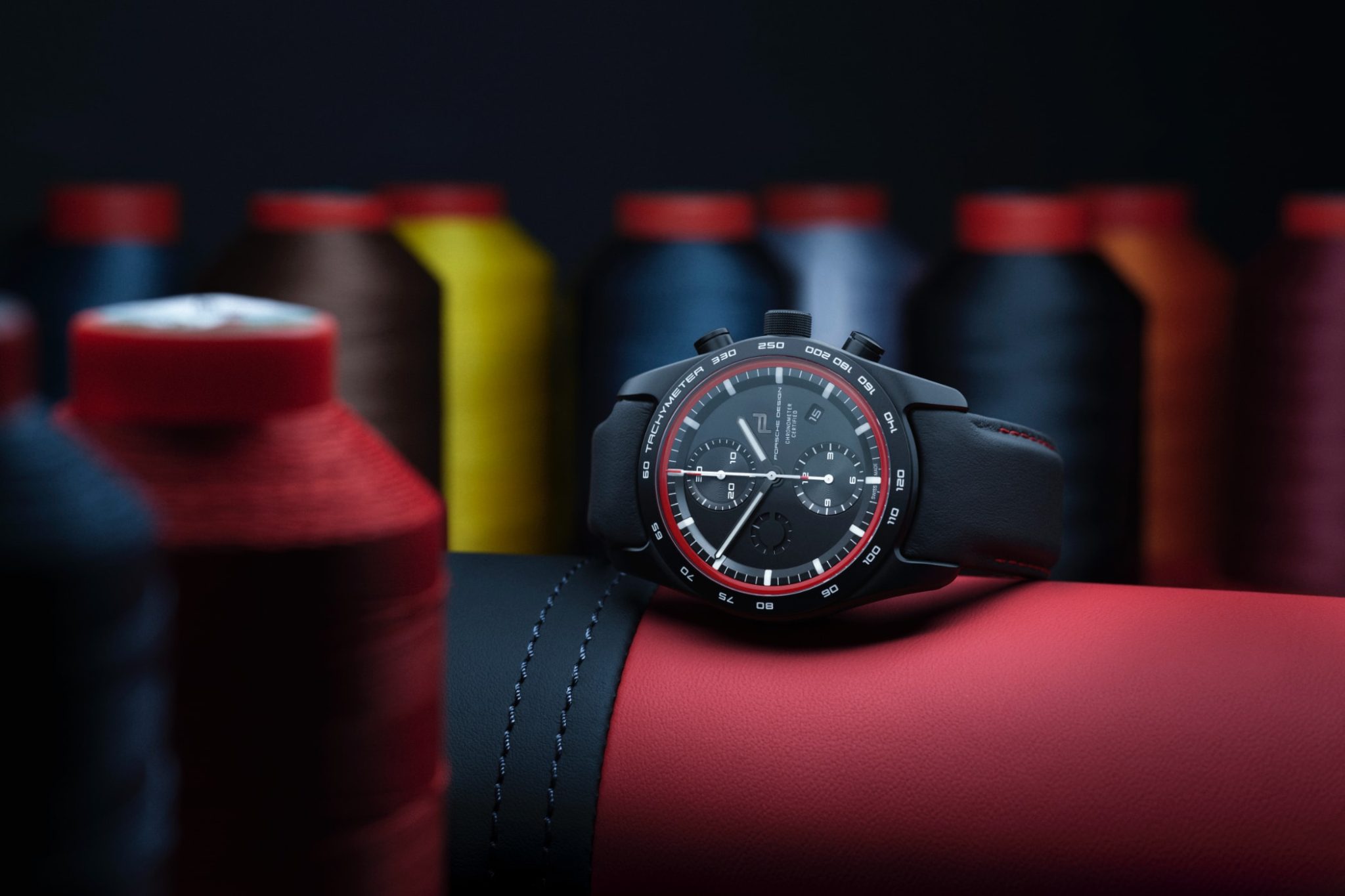
Everything is Customisable – Including Dials And Bezels
The dials are customisable through inlaid, coloured dial rings with a minute scale developed by F. A. Porsche in the style of classic vehicle speedometers. There are 36 vehicle colours and 21 leather colours to choose from. Customers can even personalise the hands and choose between the ‘Essence’ hand (black rhodium-plated with red tip) and the ‘Performance’ hand (matt white with red tip). Moreover, the customer can pick the bezel in natural titanium or black coated with a classic minute track or as a tachymeter scale for lap time measurement.
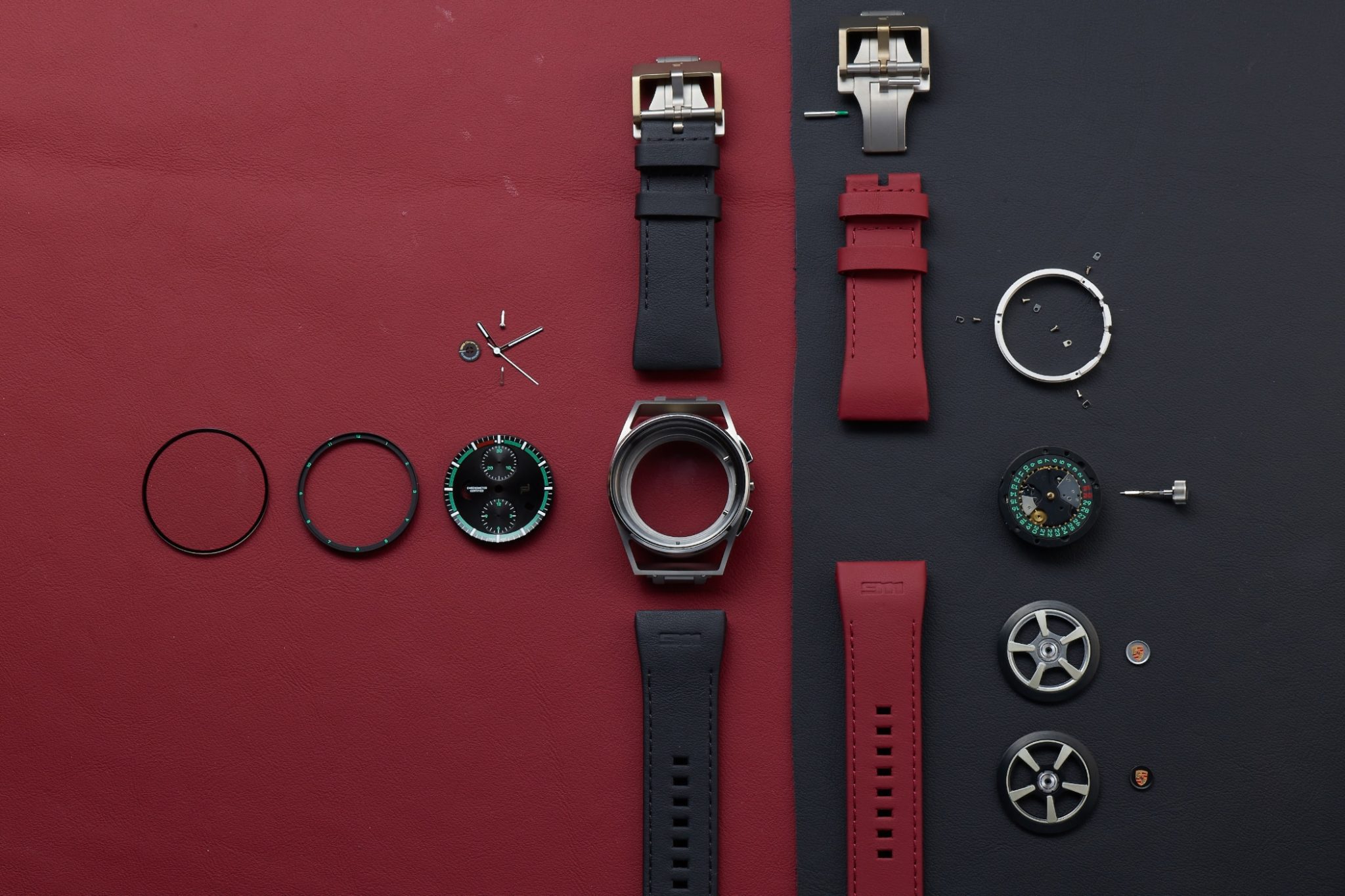
The Cherry on Top: All 163 Porsche Colours
Rolf Bergmann’s team needs the exact colour for all coloured components long before watch production begins: For more than two years, he has known which colours the Porsche 911 of the 992.2 series, the upcoming facelift, will be available so that he can let his suppliers develop the varnishes. Bergmann says, ‘We order so-called original samples from Porsche with the identical automotive paint. We then give these original colour cards to the suppliers.’ The paints then have to be redeveloped by the supplier as the original vehicle paints cannot be used because they are unsuitable for such small components. The properties such as opacity, viscosity, and colour expression must be assessed differently for watch parts than for body parts. Gerhard Novak adds, ‘You can see every irregularity beneath a seven-fold anti-reflective sapphire crystal.’
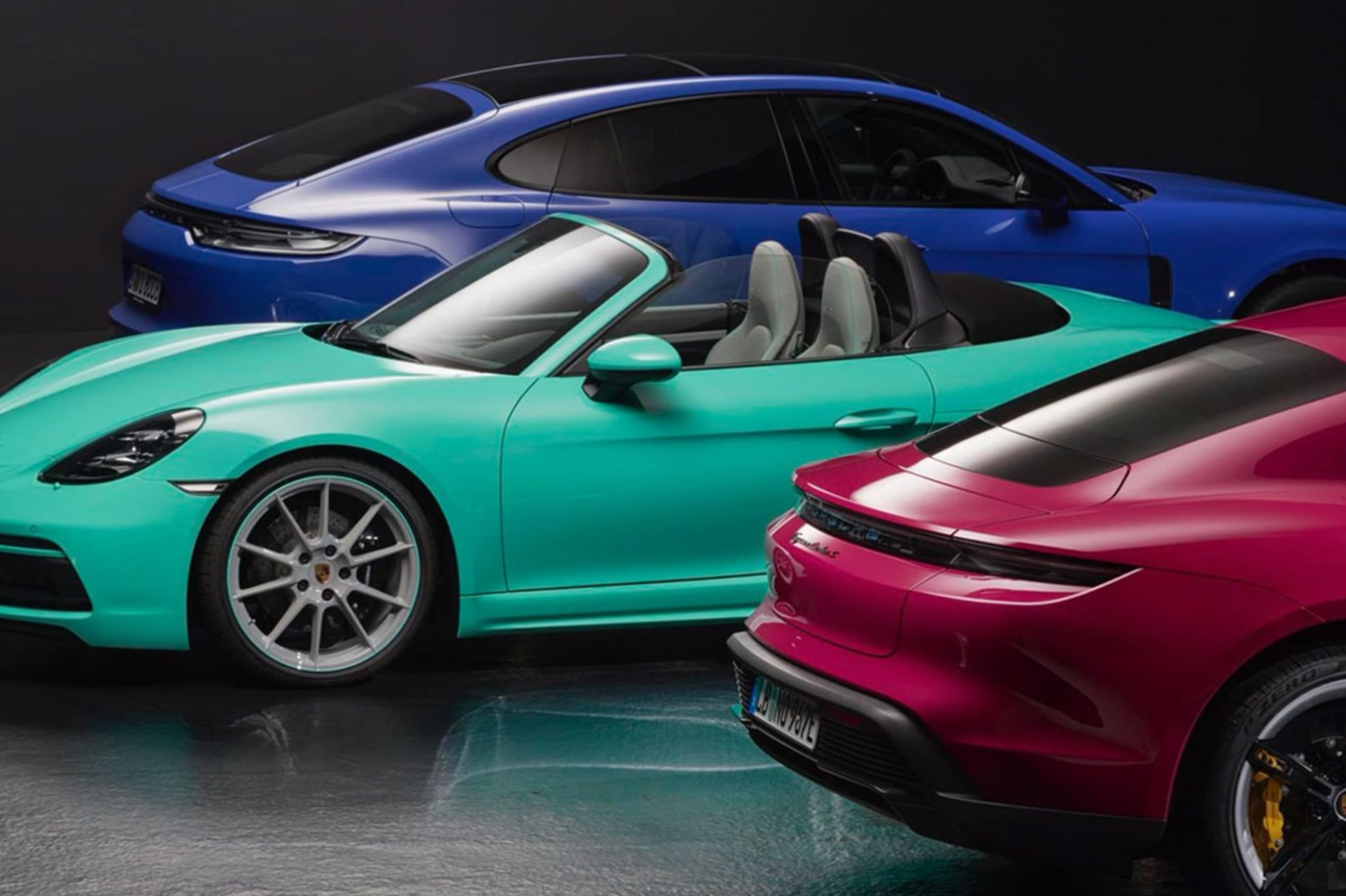
Usually, three to four painting processes per component are sufficient. Bergmann adds, ‘However, we also have metallic varnishes, which are even more complex because, depending on the colour, specific primers are necessary to achieve the metallic effect on the small areas.’
In 2022, the range of designs was expanded to include 127 historical and iconic Porsche colours. Since then, customers have also been able to choose from additional colour rings around the dial, including gulf blue, star ruby, and mint green. Among Porsche fans, these famous vehicle paints from the 90s enjoy a cult status. Thus, watch lovers can now transfer the look of iconic Porsche models from the last decades from the street onto their wrists. As a result, possible variations have further multiplied. Both managers consider an encounter between two customers with identical Porsche Design custom-built timepieces very unlikely.
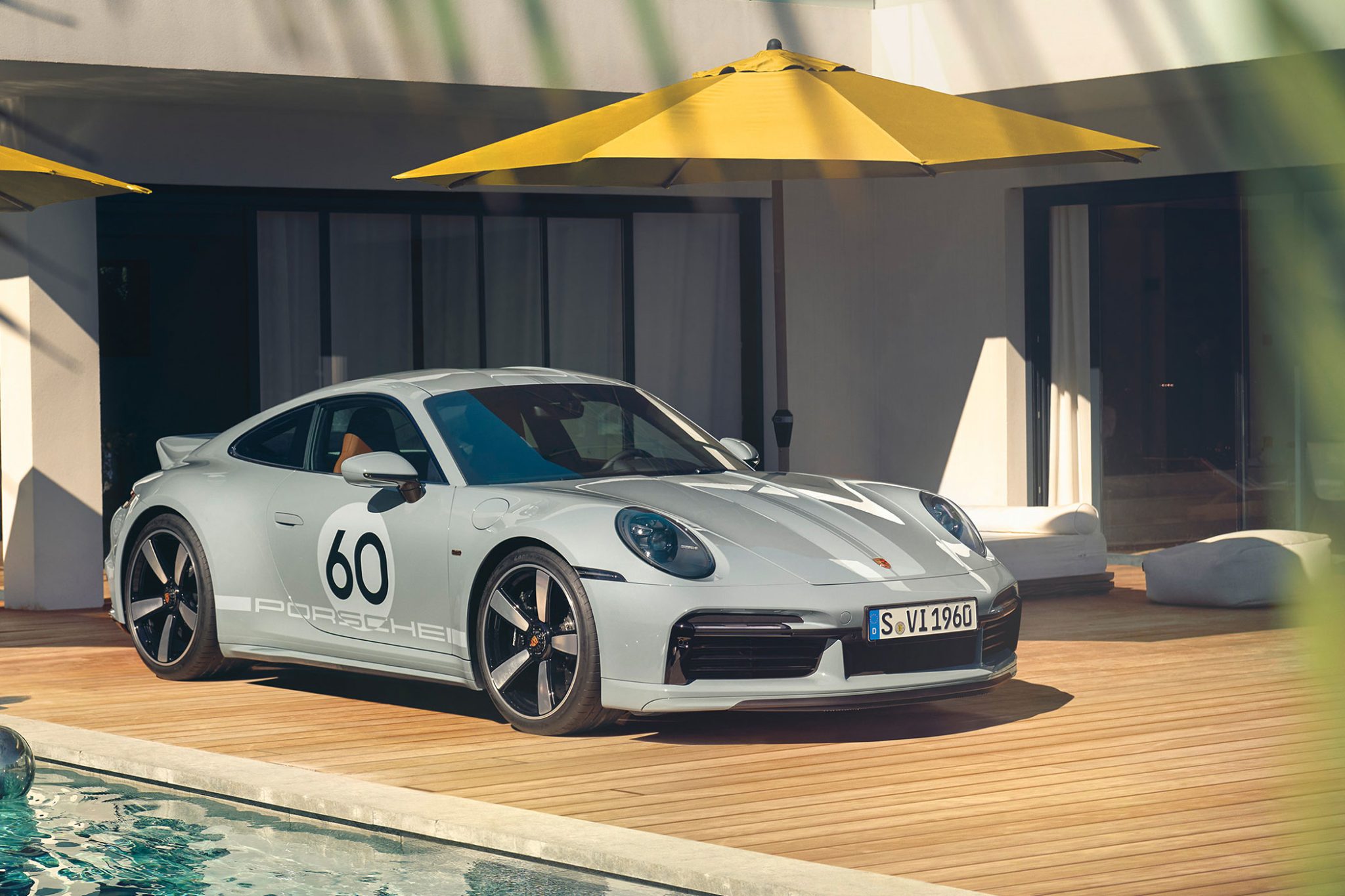
A Revolution in The Aftersales Section
The Porsche Design custom-built watches also mean significant changes for the after-sales section and watch maintenance, as spares now have to be stored differently. Bergmann says, ‘Not only do we have to continually add new types of varnish or leather from the vehicles to the range, but we also have to keep available colours and tanned leather spares for service purposes.’ This is where the modular structure of the watches benefits the watchmakers. For example, leather bracelets can be replaced quickly thanks to the interchangeable strap system. Sequential manufacturing also offers another advantage here. Bergmann states, ‘If individual spares are required afterwards, they can be integrated into the same supplier’s production process and there is hardly any significant additional effort despite the individual component.’

And The Expenses of All of This?
One could object that Porsche affords this luxury to keep its car customers happy. Anyone who knows Porsche AG well knows that precisely the opposite is the case. Every subsidiary has to make a profit. Otherwise, the targeted group’s return on sales of 20 per cent would hardly be conceivable. And even though they are small parts, the manufacturing costs of each component, such as a winding rotor in the vehicle colour, are crucial for Rolf Bergmann’s calculation: ‘In order to offer something like this, you have to be involved in the design processes long before the series production of an automobile.’

Adding The Final Touch: The Individual Laser Engraving
If desired, every customer can make their Porsche Design Chronograph custom-built an entirely unique piece by adding a personal laser engraving to the caseback. Of course, the laser is also located in Solothurn, adding the ultimate personal touch to every timepiece. Mind you, we are talking about batch size one here, too. This additional engraving can also complement the jewellery storage box included in the delivery. If you look at the process, which requires a large machine and a watch that offers the right amount of space, you immediately ask yourself, why don’t others do it? In addition, customers can even select the right vehicle motif for their box if desired. Letterings for their vehicle are available, matching the rear of the car of their choice. Alternatively, customers opt for a graphic logo like the current 911 Carrera flyline. According to the research conducted by Swisswatches, Porsche Design offers a variety unlike any other watch manufacturer – when it comes to series watches.
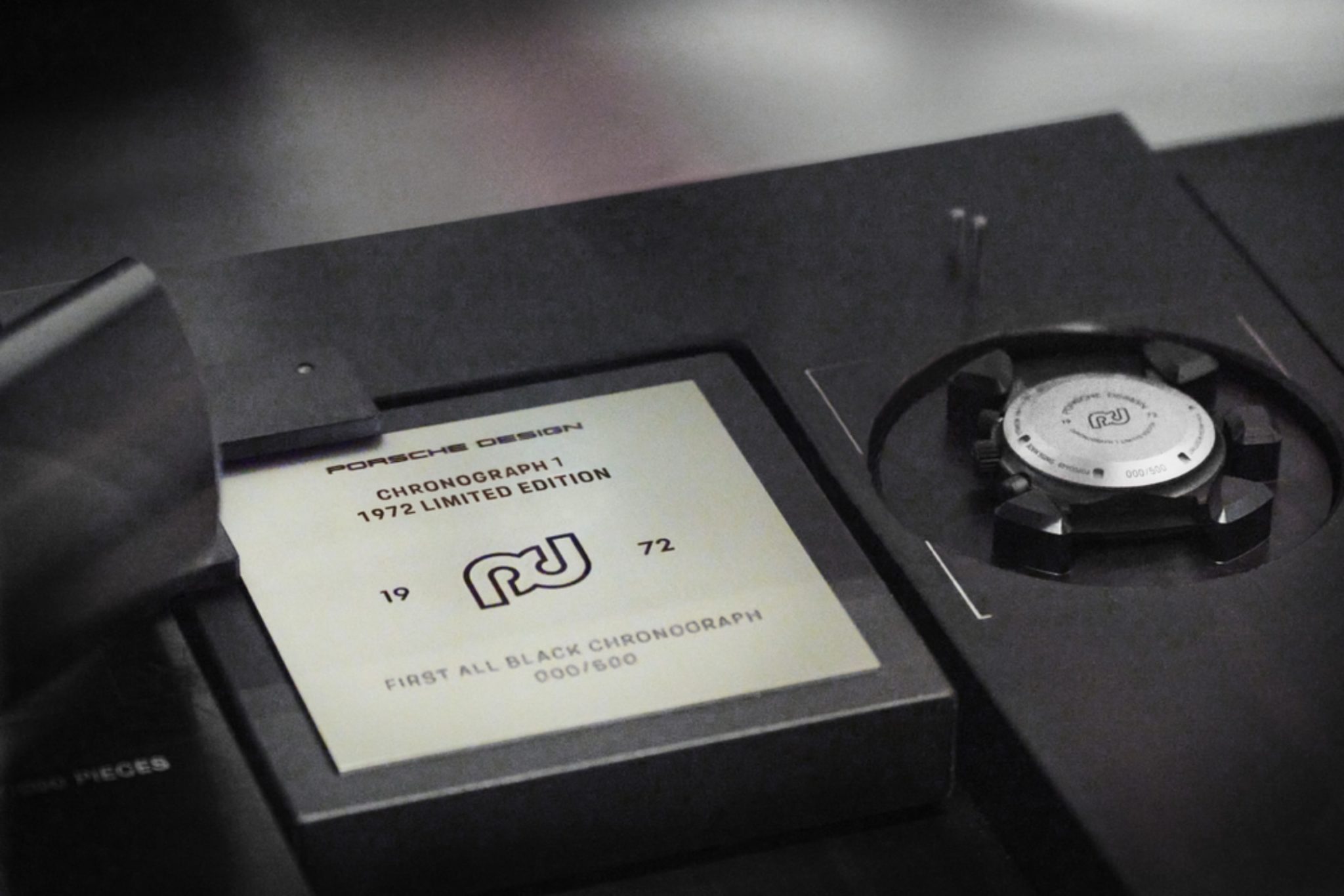
What The Future Holds
Porsche Design Timepieces AG in Solothurn uses this revolutionary manufacturing method to produce around 5,000 watches per year. To no one’s surprise, the watches that accompany the vehicle now make up the largest share. Bergmann reports, ‘Today, the USA are already our largest market with a 35 percent market share.’ The potential is still huge for several reasons. Firstly, Porsche Design currently only offers the watches in a few countries worldwide. Gerhard Novak notes, ‘The Custom-built Timepieces have been available in Germany, the USA, the United Kingdom, and Switzerland since 2020. The launch took place in France at the end of April 2022 and in the summer of the same year in Austria.’ Other countries will follow in 2024, although the managers do not want to reveal which ones yet. Especially in markets with a high level of interest in watches, the business model’s potential is easy to imagine: Italy, Japan, and Asia are regions with a lot of watch enthusiasts.
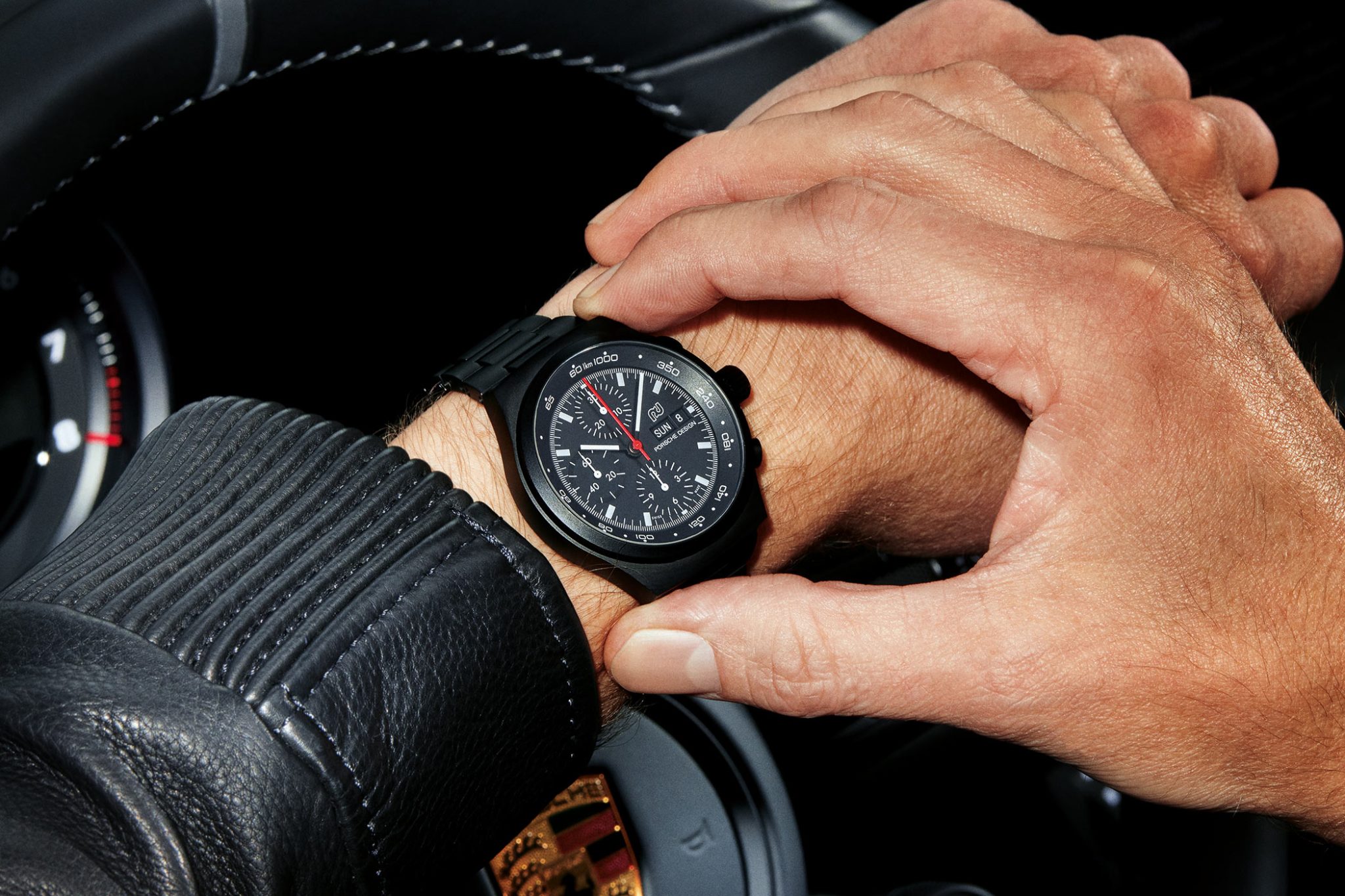
Secondly, even more interesting is that anyone can buy Porsche Design custom-built watches, but Porsche only offers the watches to match the Porsche 911. The series now accounts for just 15 per cent of the total units worldwide. Thirdly, Porsche Design has hit the jackpot with occasional small series for specific special-edition models. Limited vehicle series such as the GT3 or GT2 or the recently introduced 718 RS Spyder (read our article here) are not only the most sought-after collector’s models within the fan community and often sell out quickly, but the corresponding watches are just as popular. Novak explains, ‘When it comes to the special models for limited-edition vehicles, up to 50 percent of vehicle buyers have also purchased the matching watch in recent years.’ As long as Porsche grows, the number of Porsche Design watches will also increase.
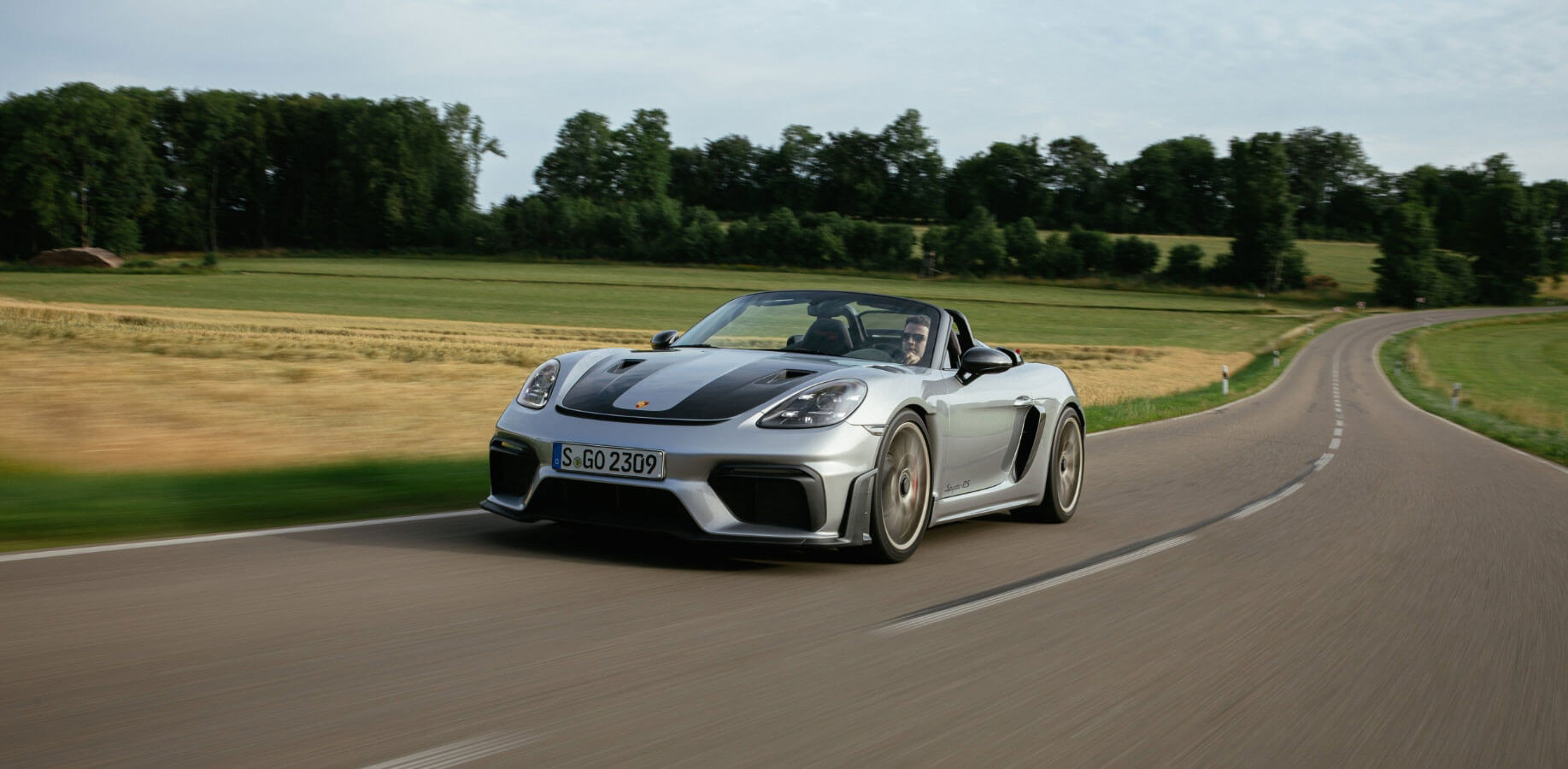
What Belongs Together, Grows Together
For Ferdinand Alexander Porsche, inventor of the Porsche 911 and father of all Porsche Design watches, the principle of bringing the car and watch together in production would have been all too logical. After all, he came up with the idea for the design principle of the black Chronograph 1 by deriving it from the black dashboard design of Porsche vehicles.
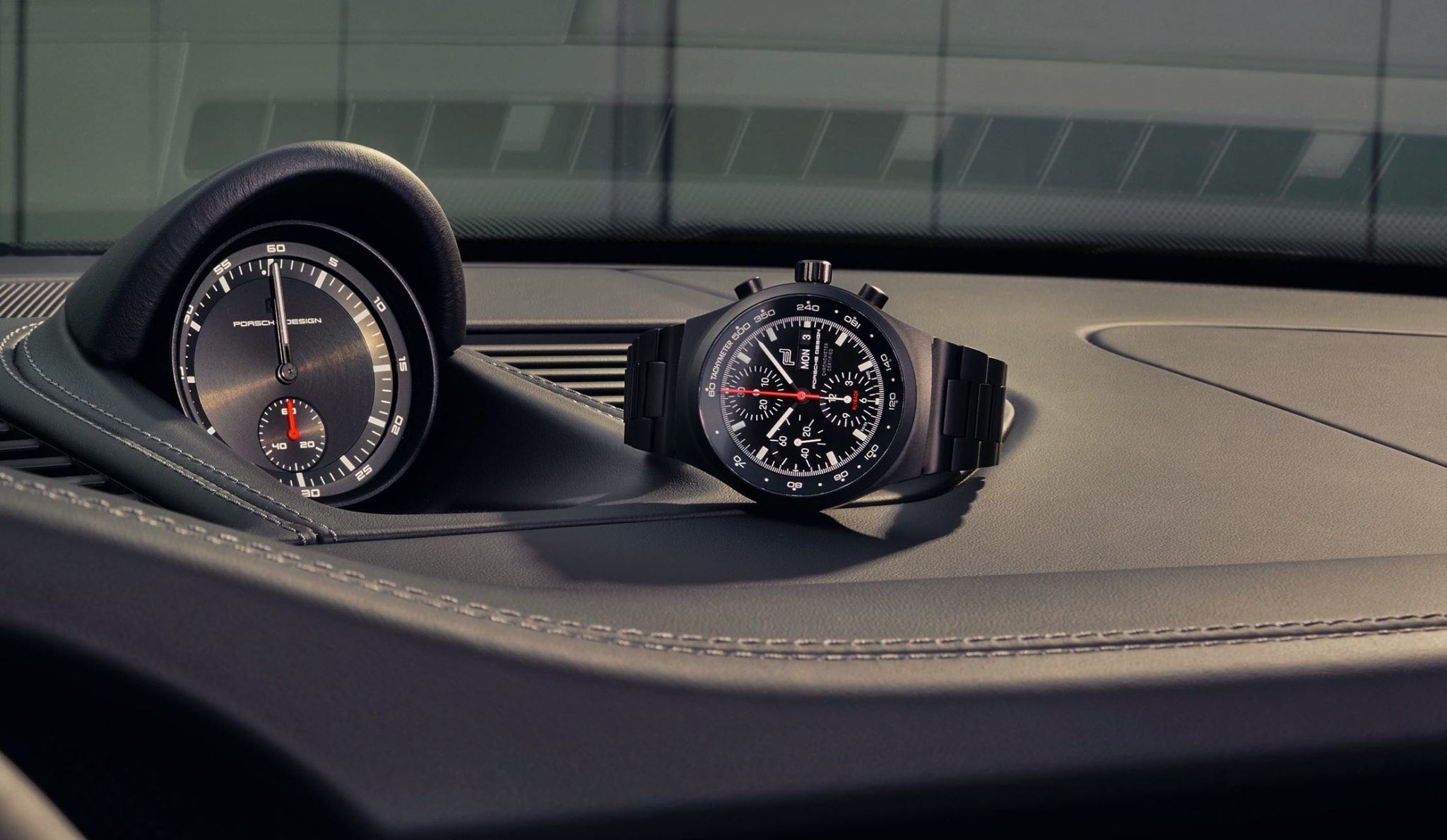
Bergmann recalls, ‘Ferdinand Alexander Porsche created the first black wrist chronograph in 1972 with great design consistency. Introducing sequential manufacturing to wristwatch manufacturing initially requires a lot of discipline. But once the process has been learned, customers benefit disproportionately from it. They receive a very personal timepiece with the usual Porsche quality.’
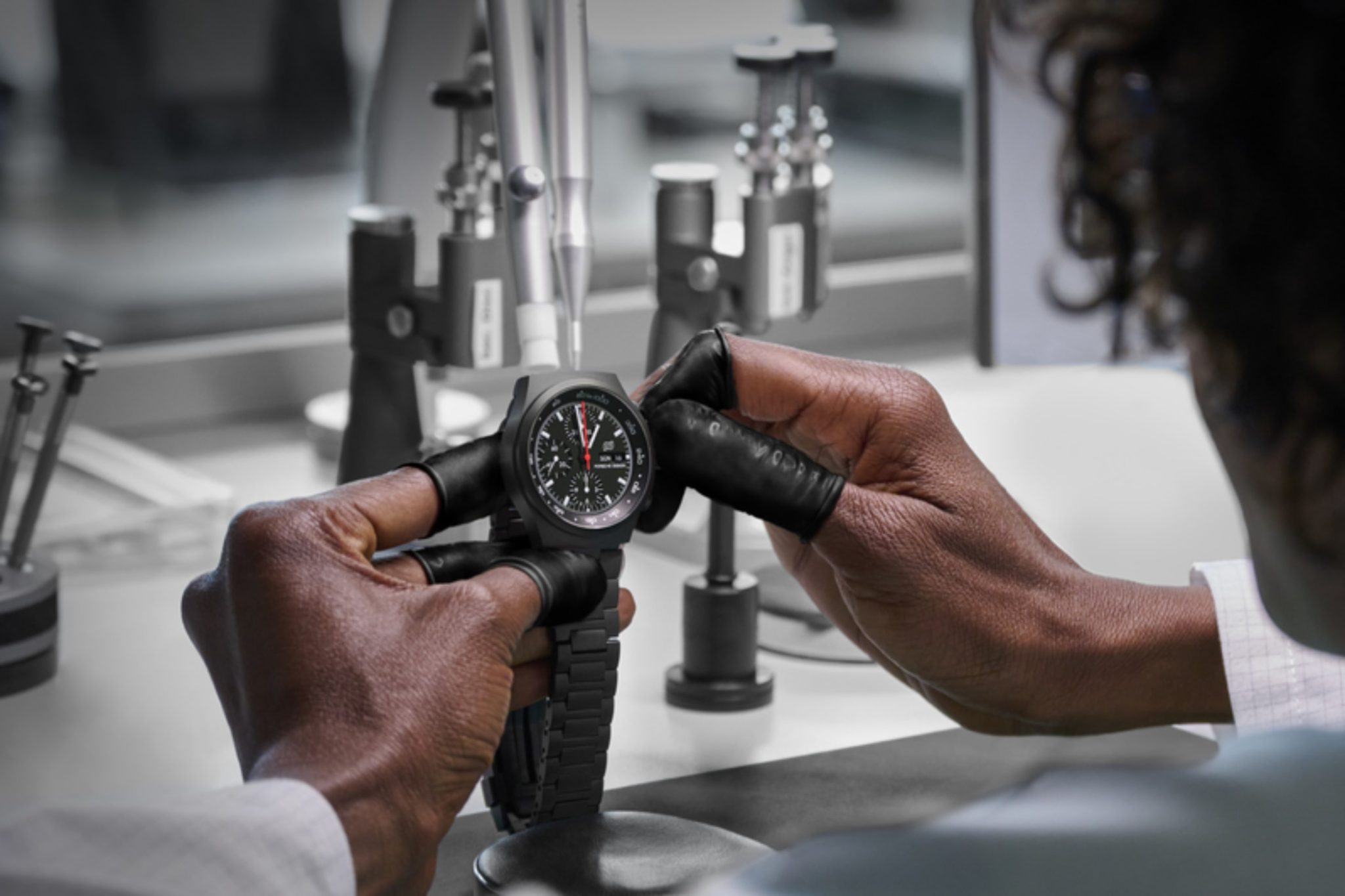
If you compare these statements with the strategies of today’s cult brands such as Rolex or Patek-Philippe, connoisseurs will realise that if Porsche proceeds with this path, a major collector’s brand could emerge – provided that Porsche meets your taste.





